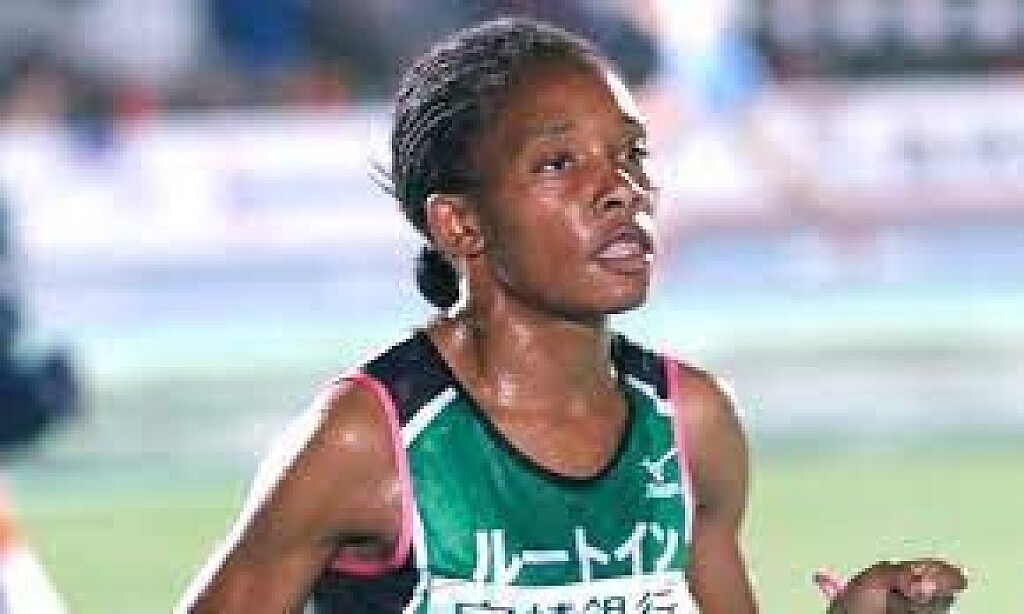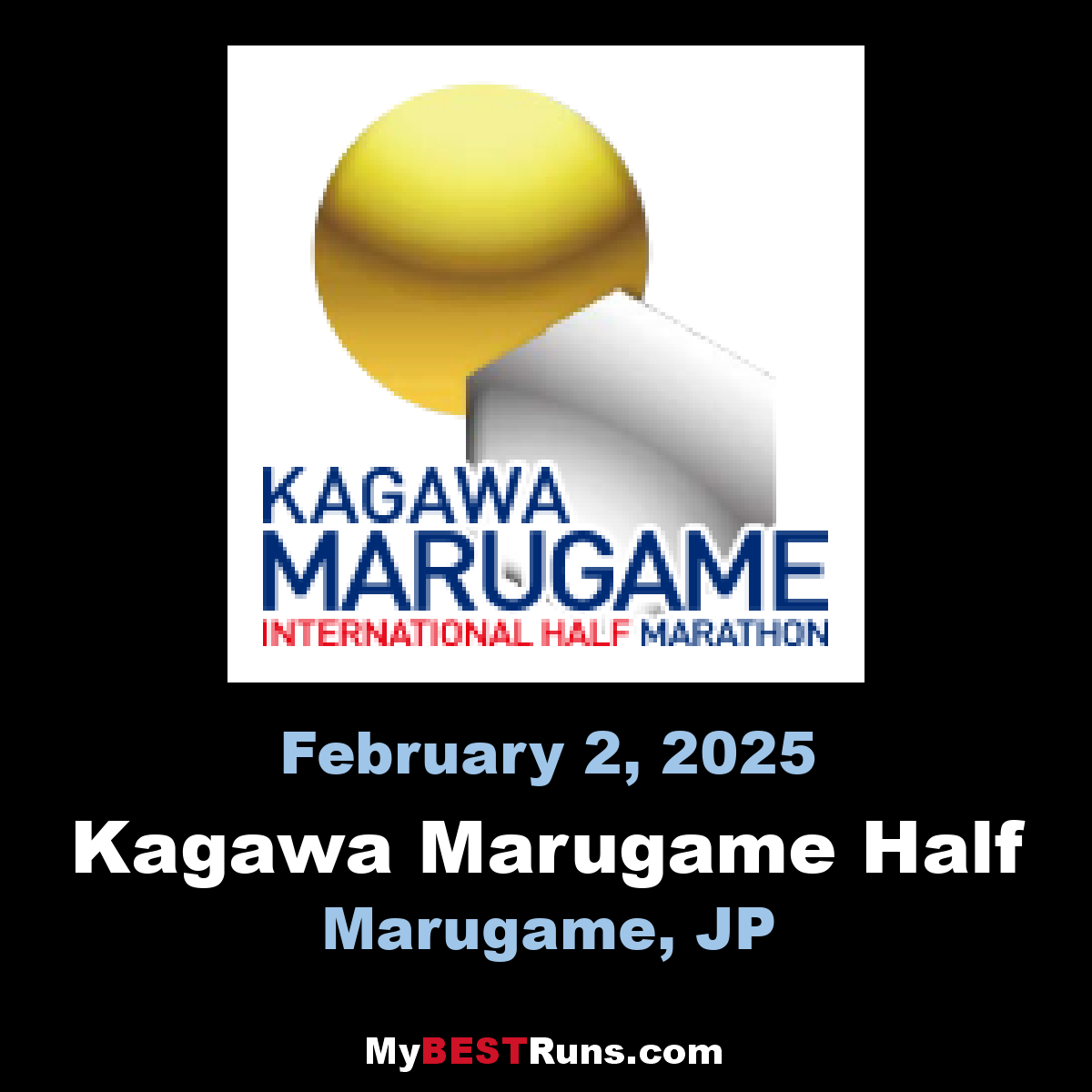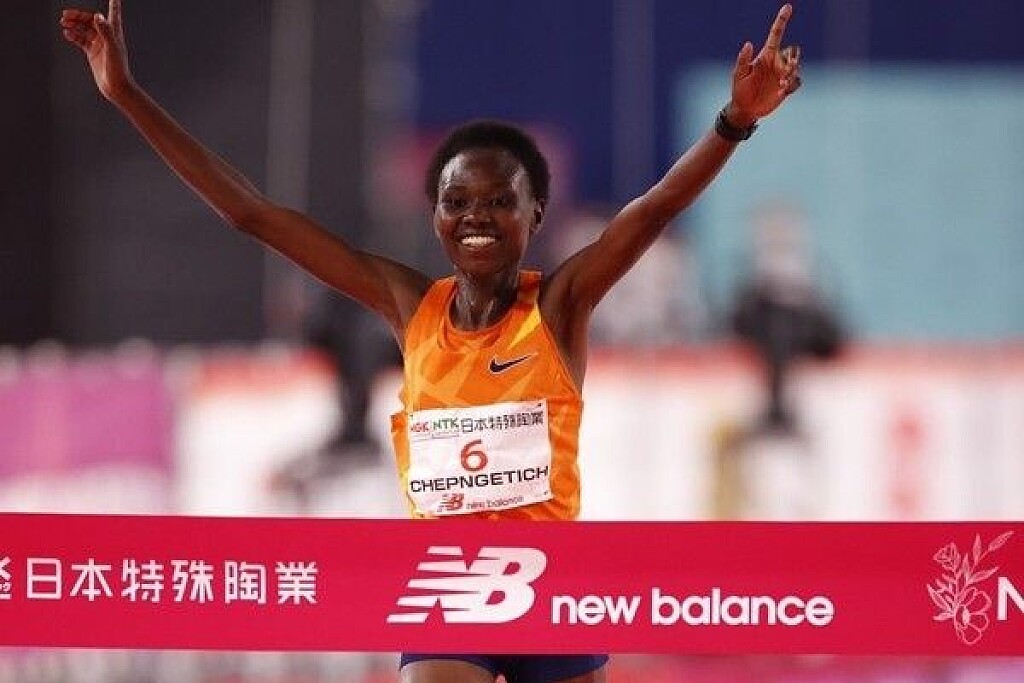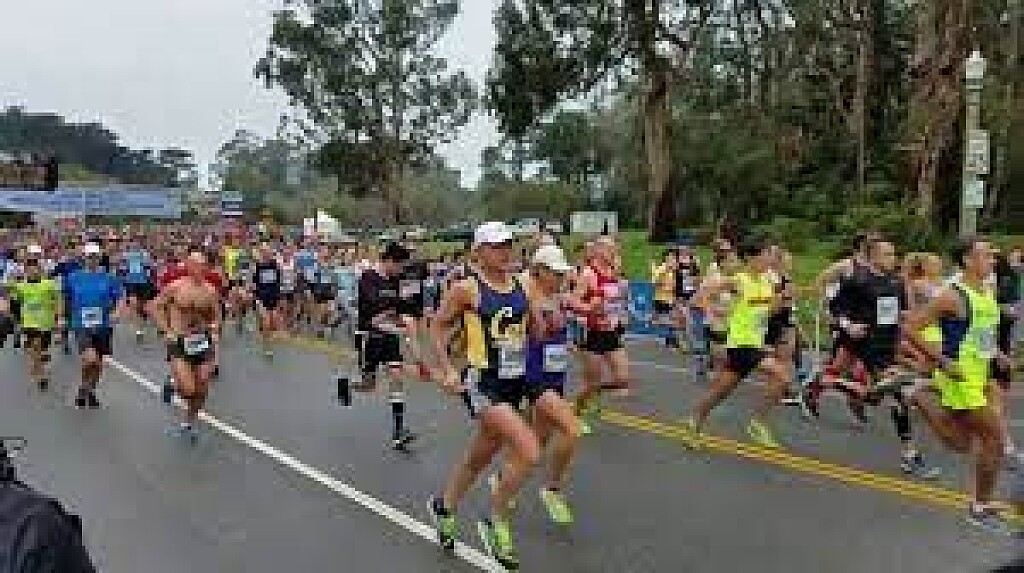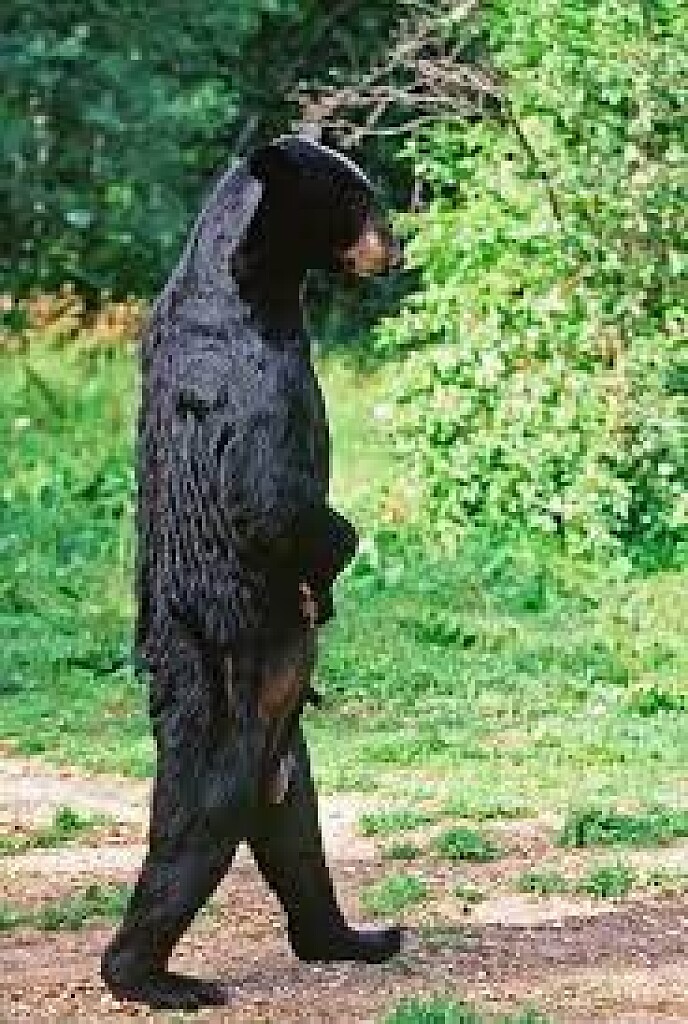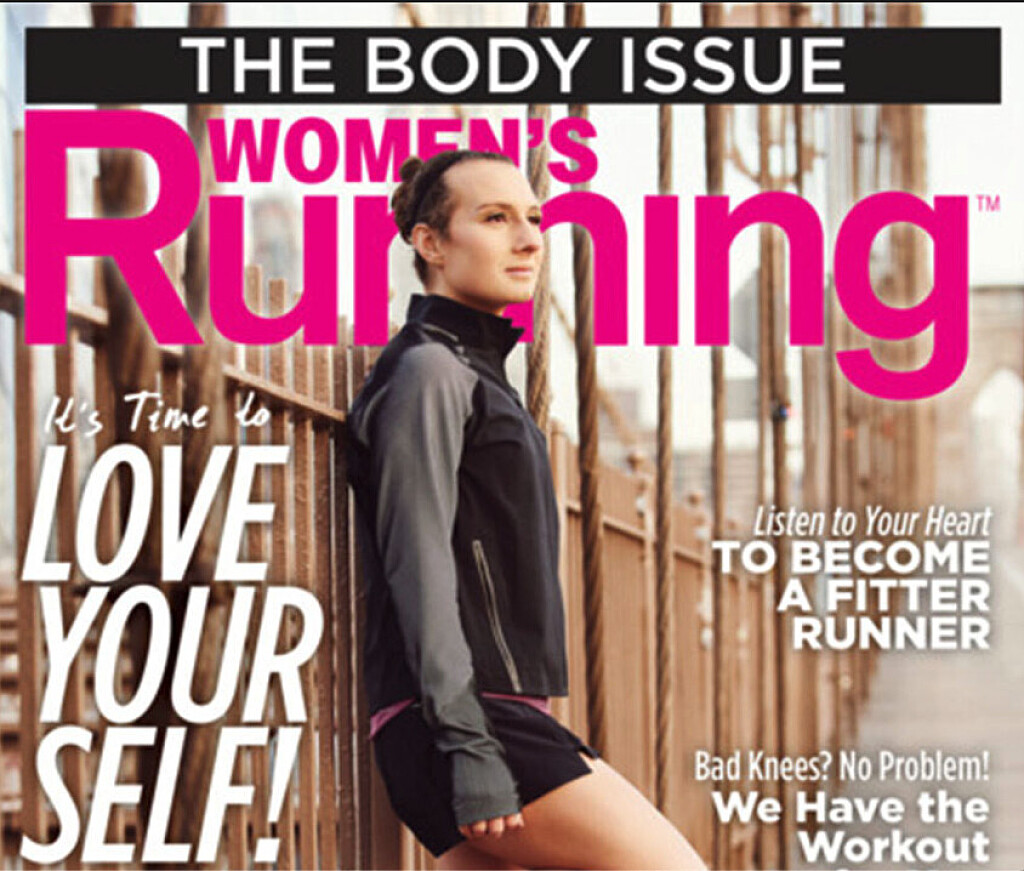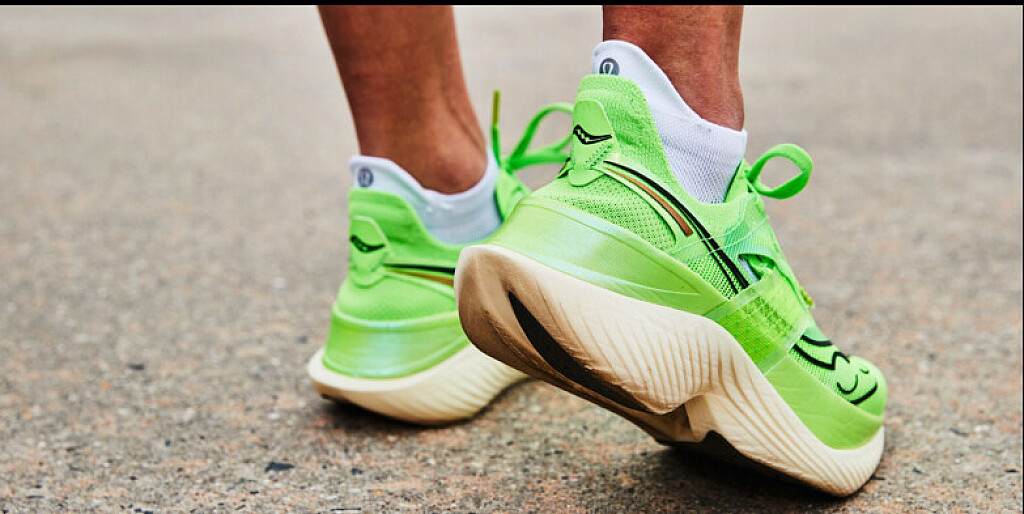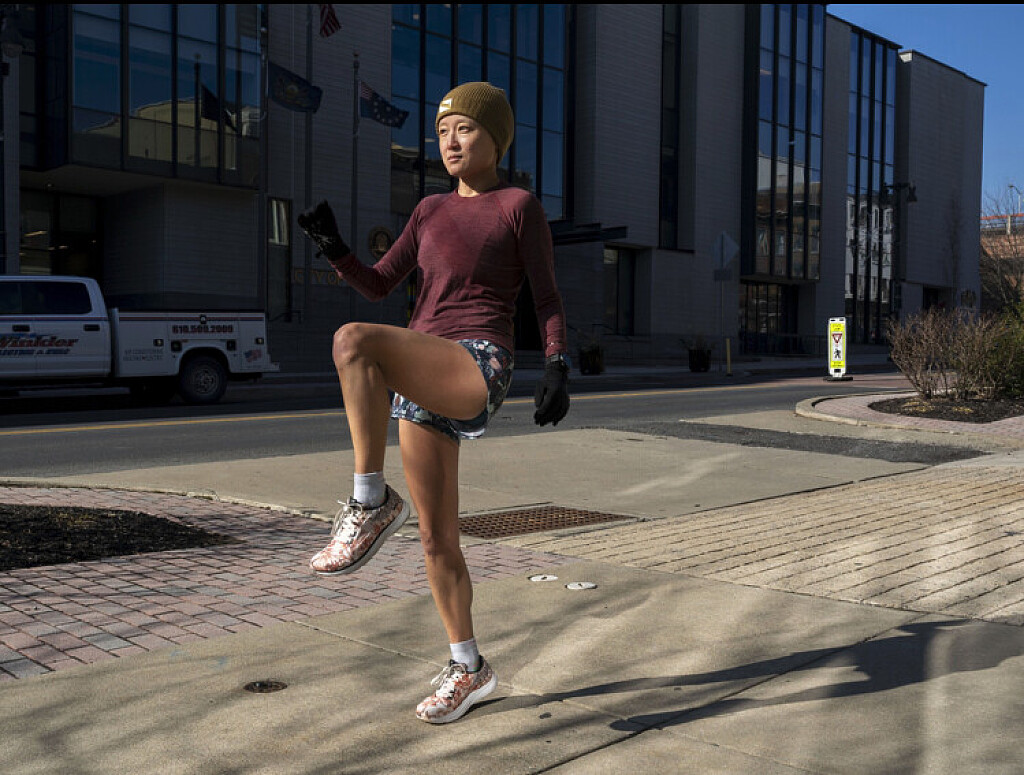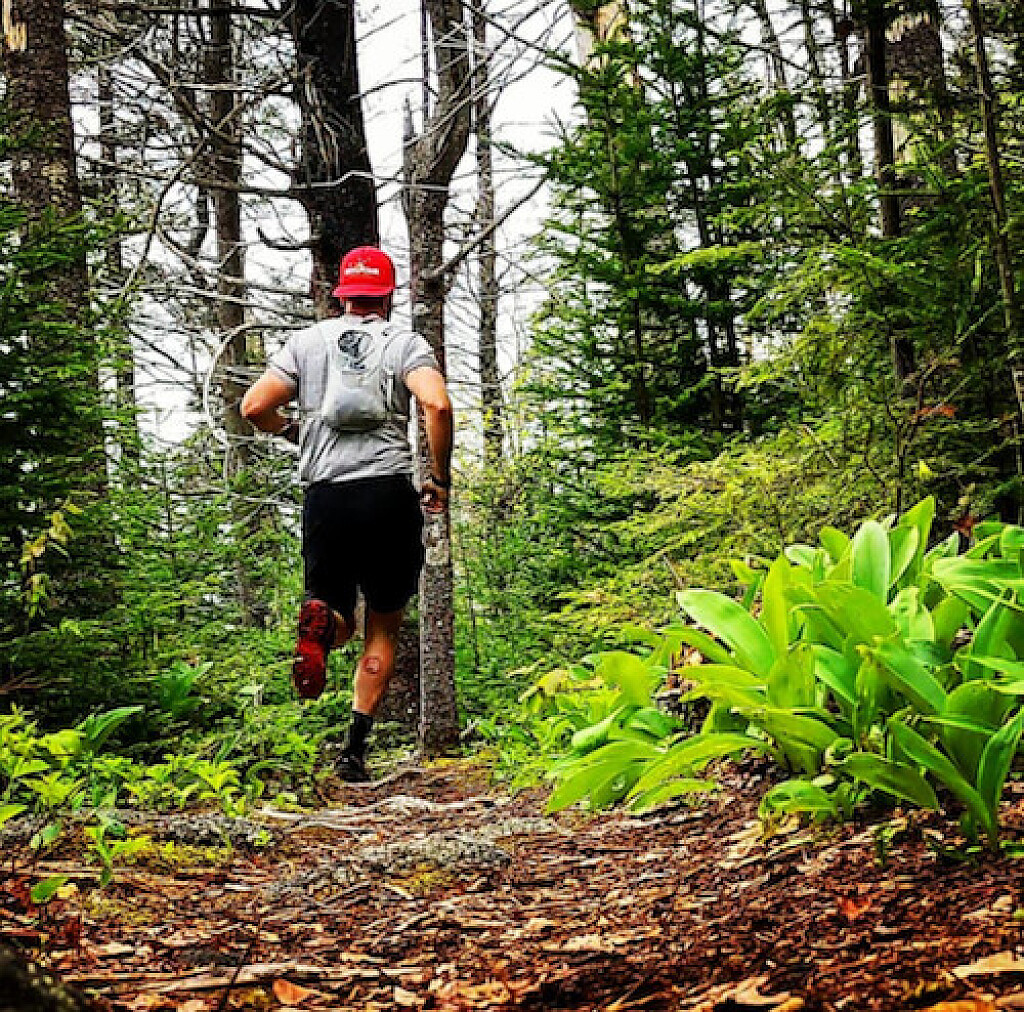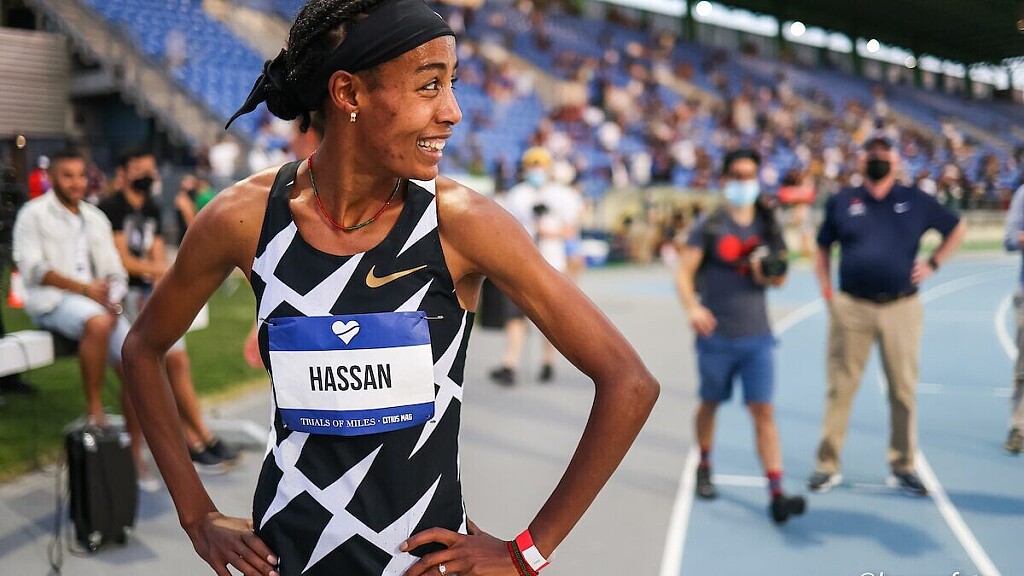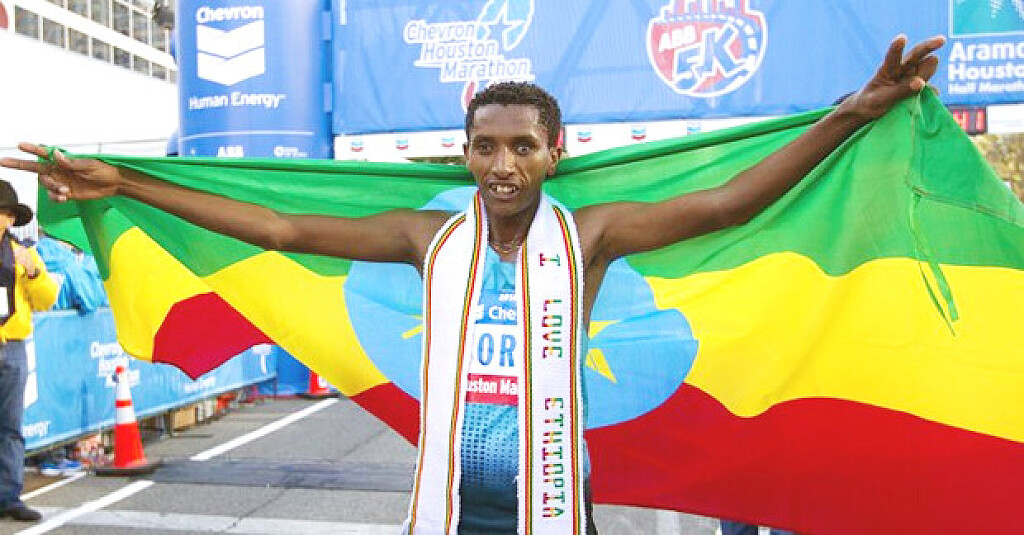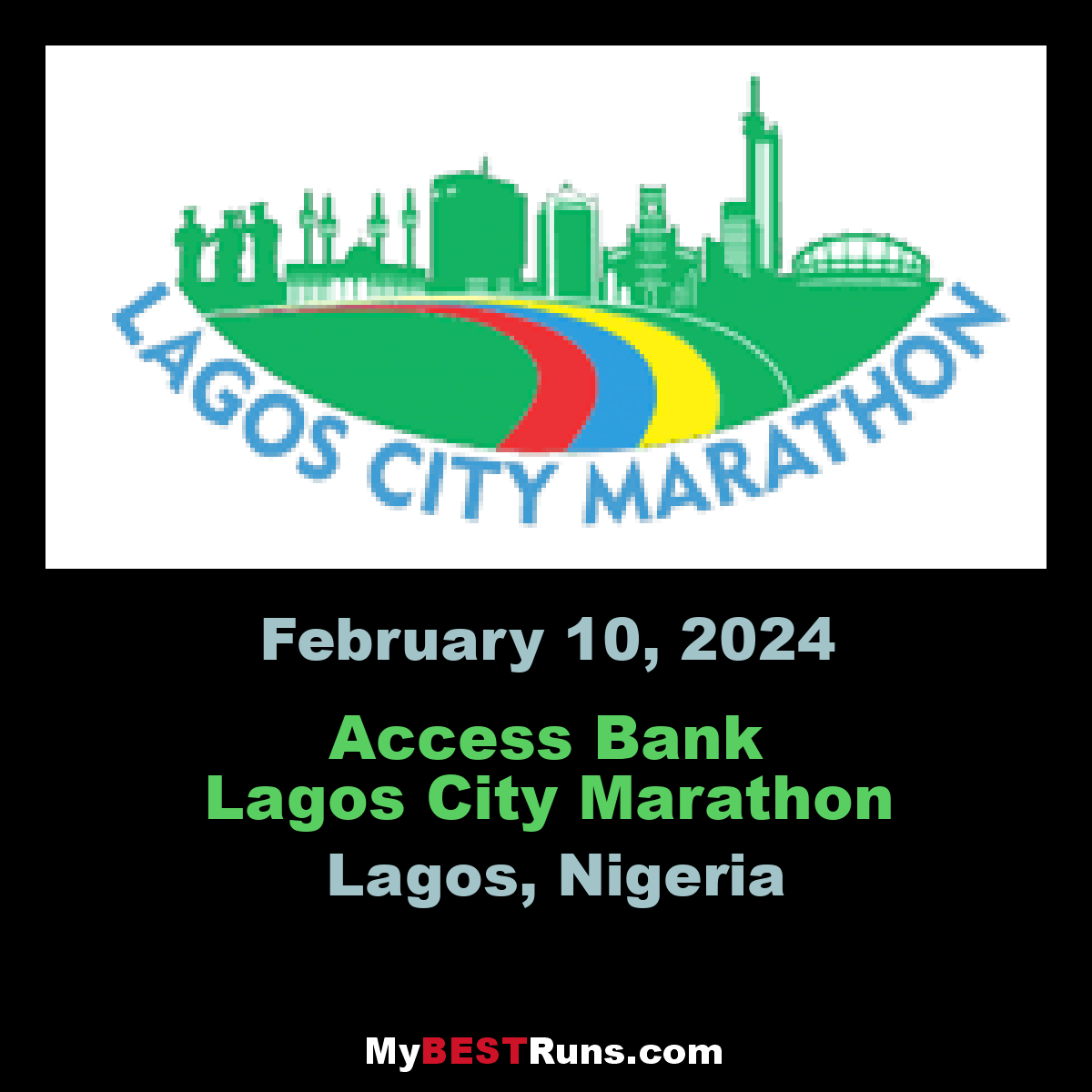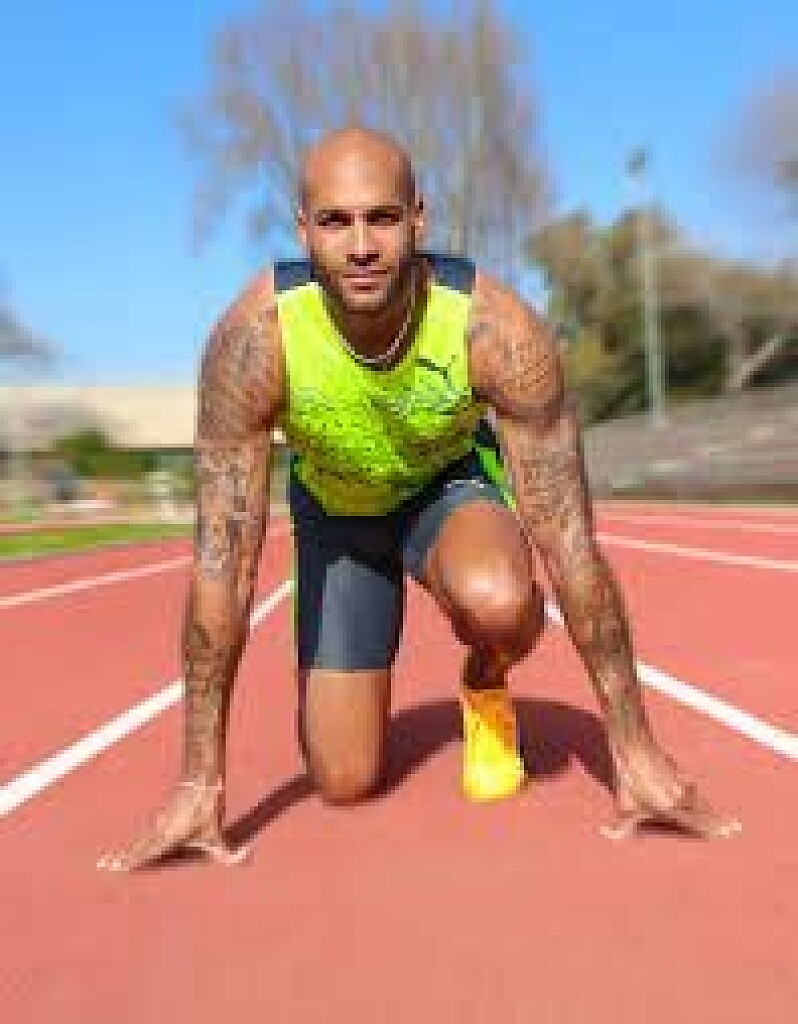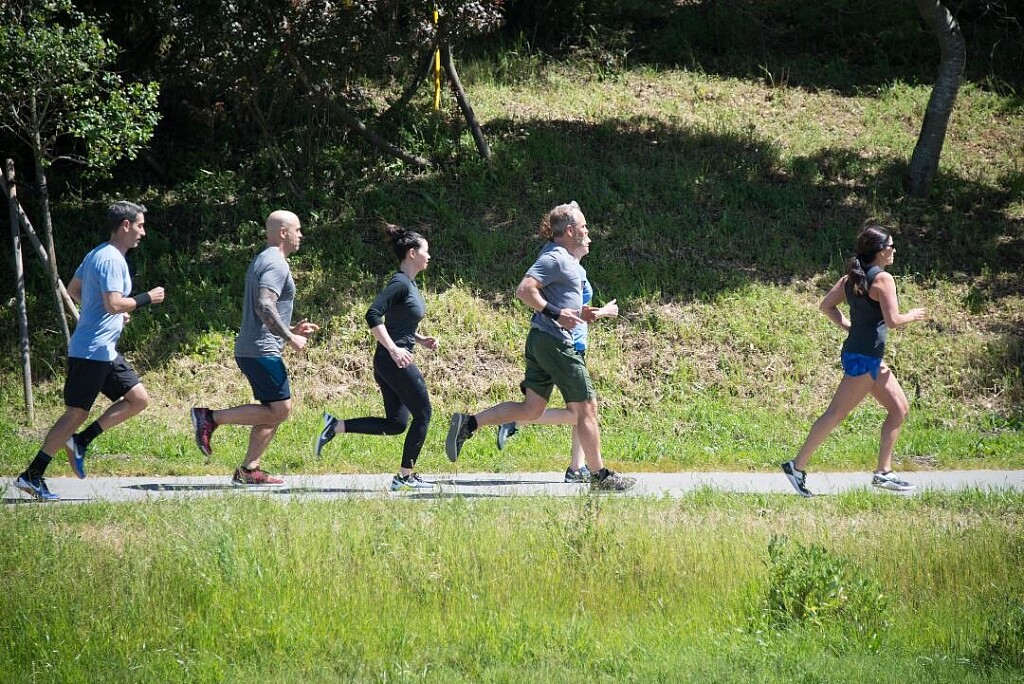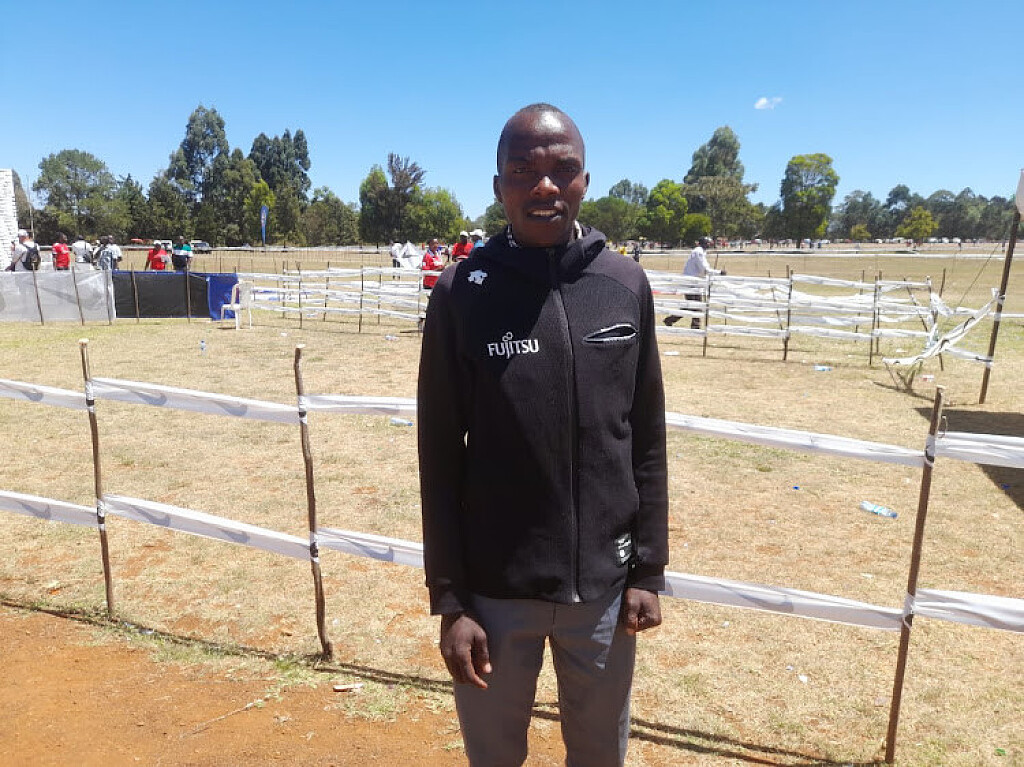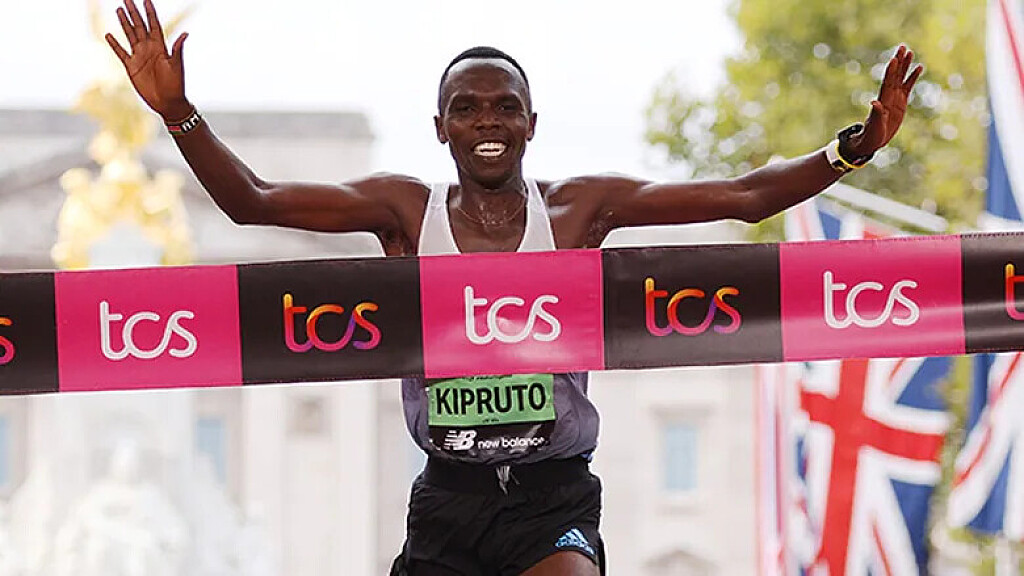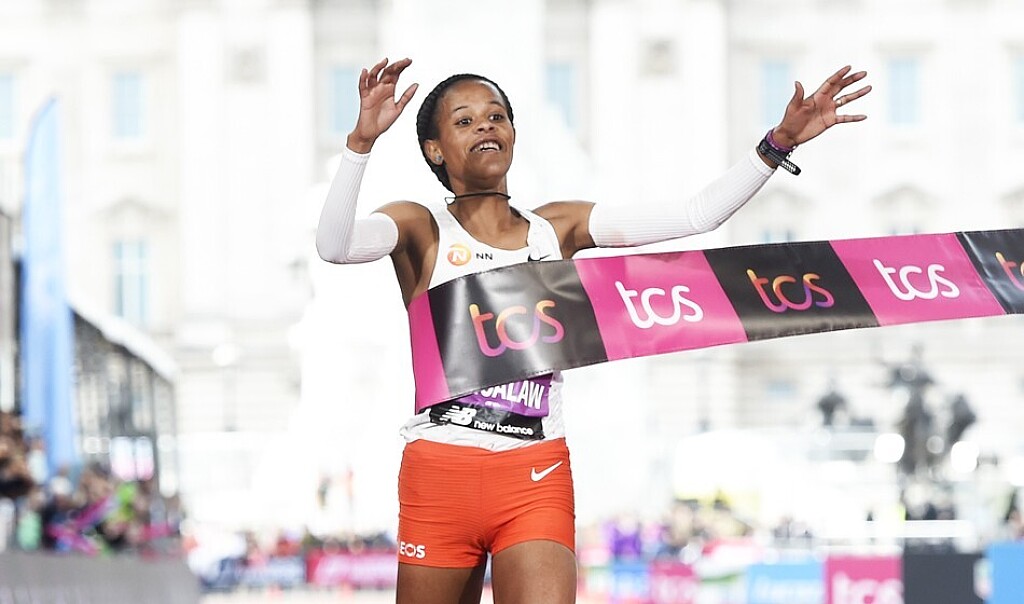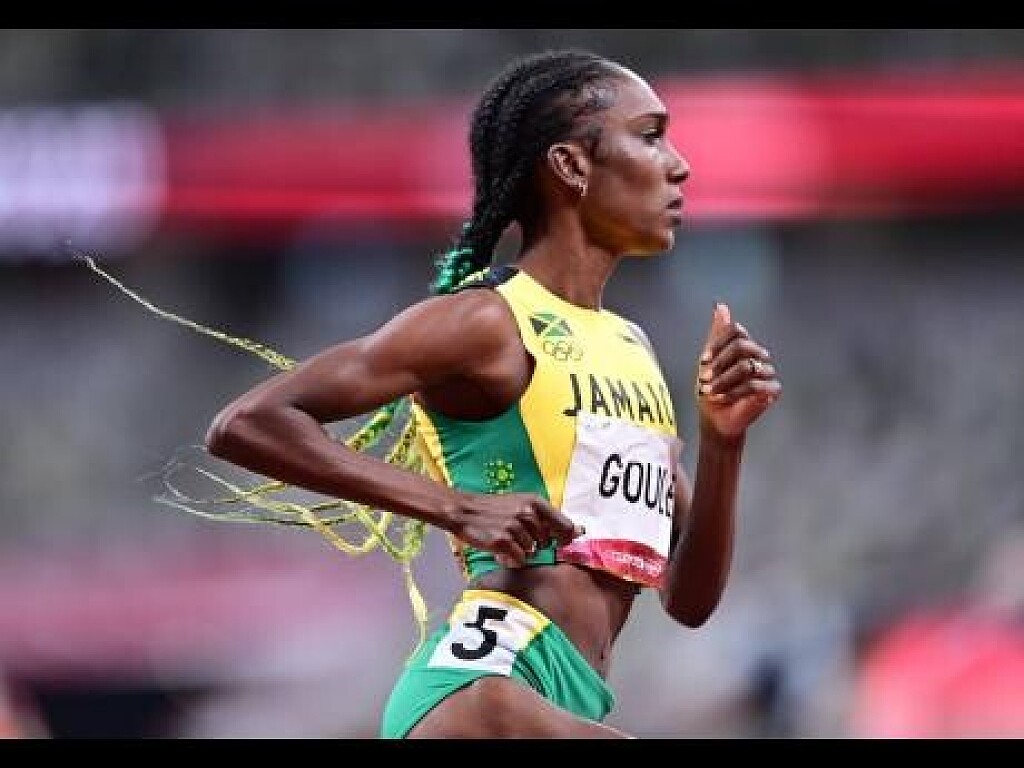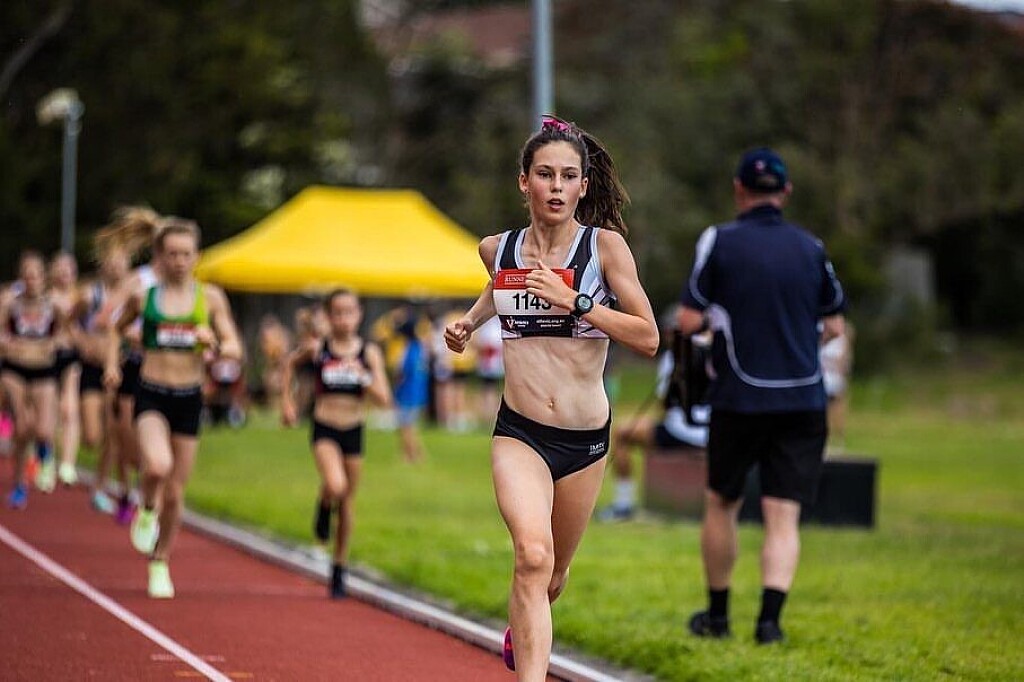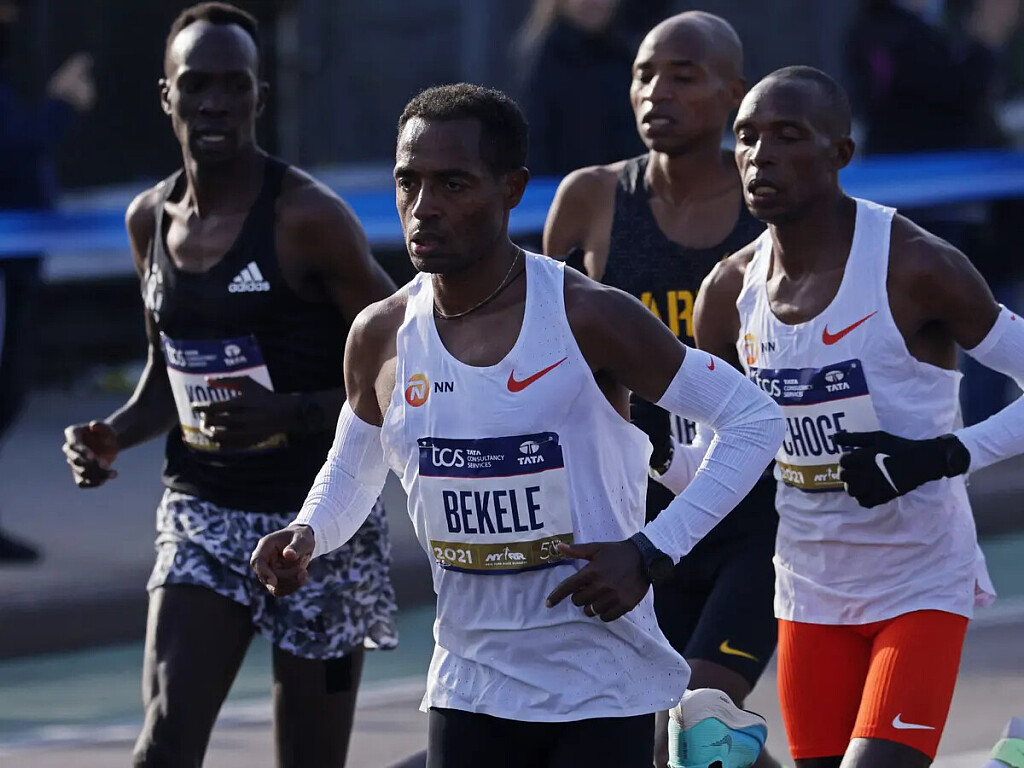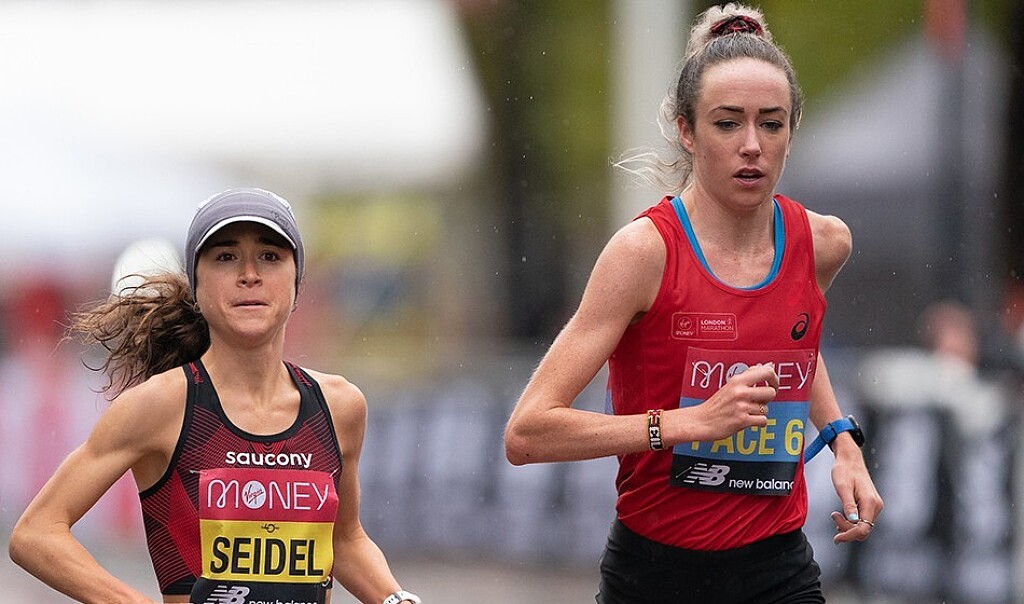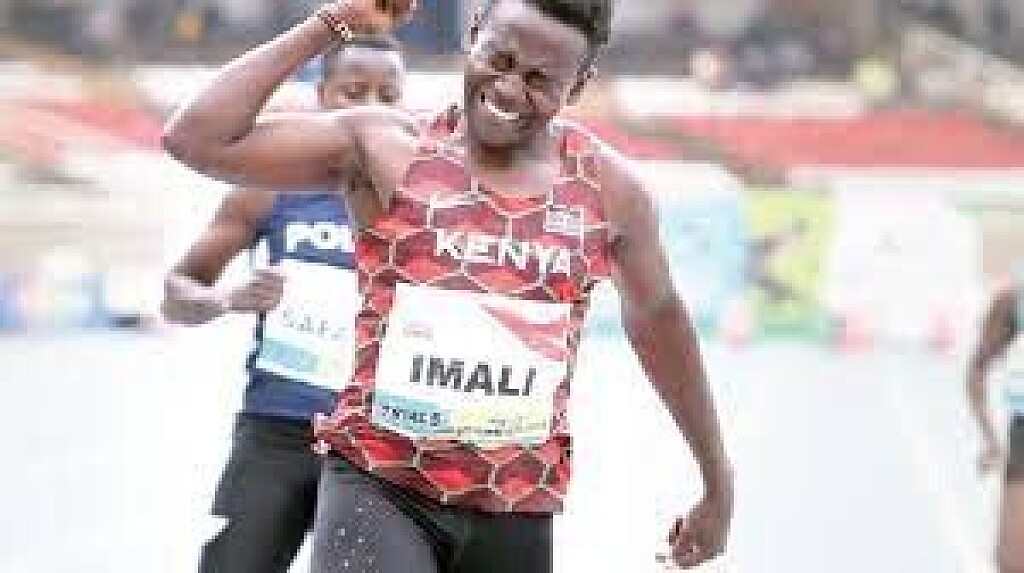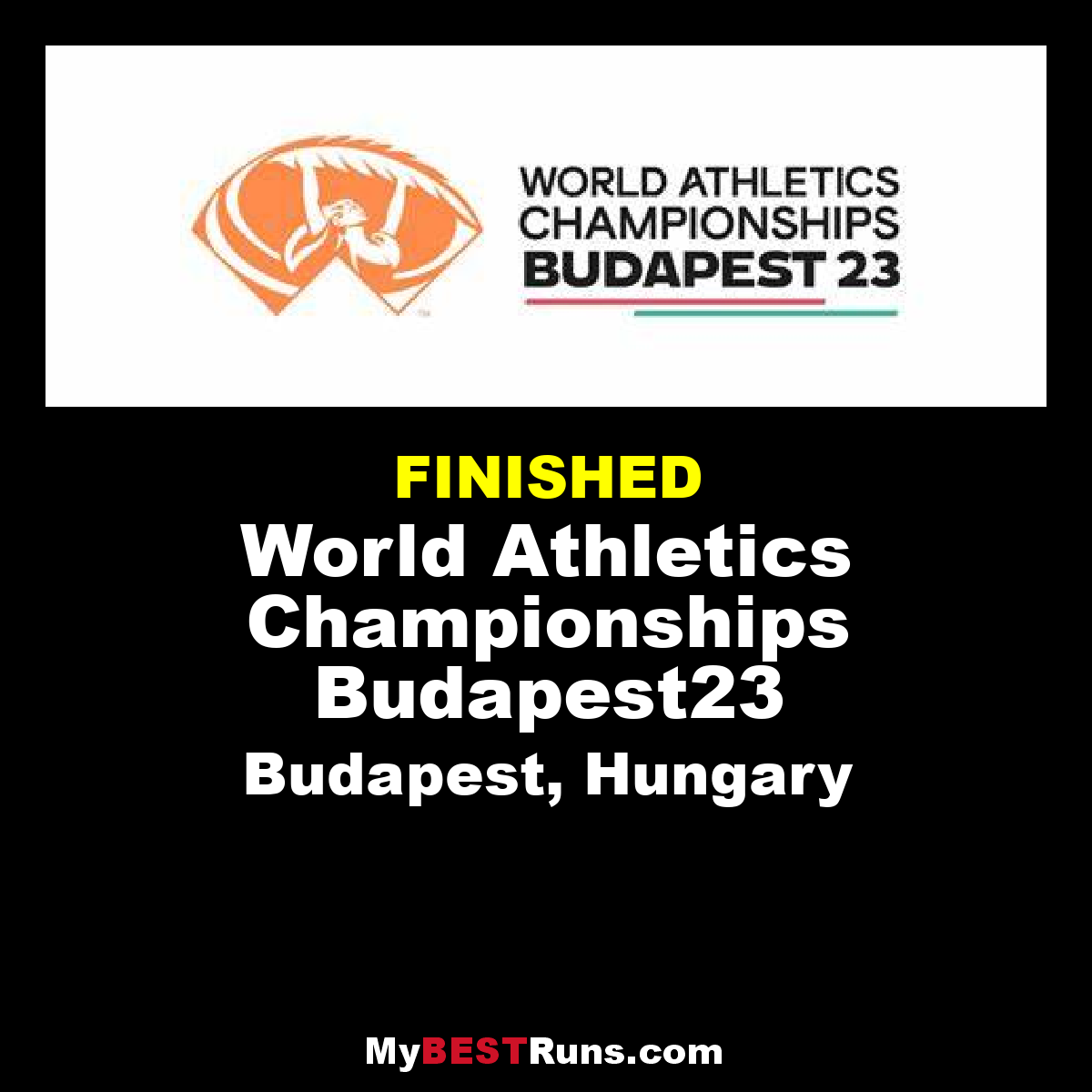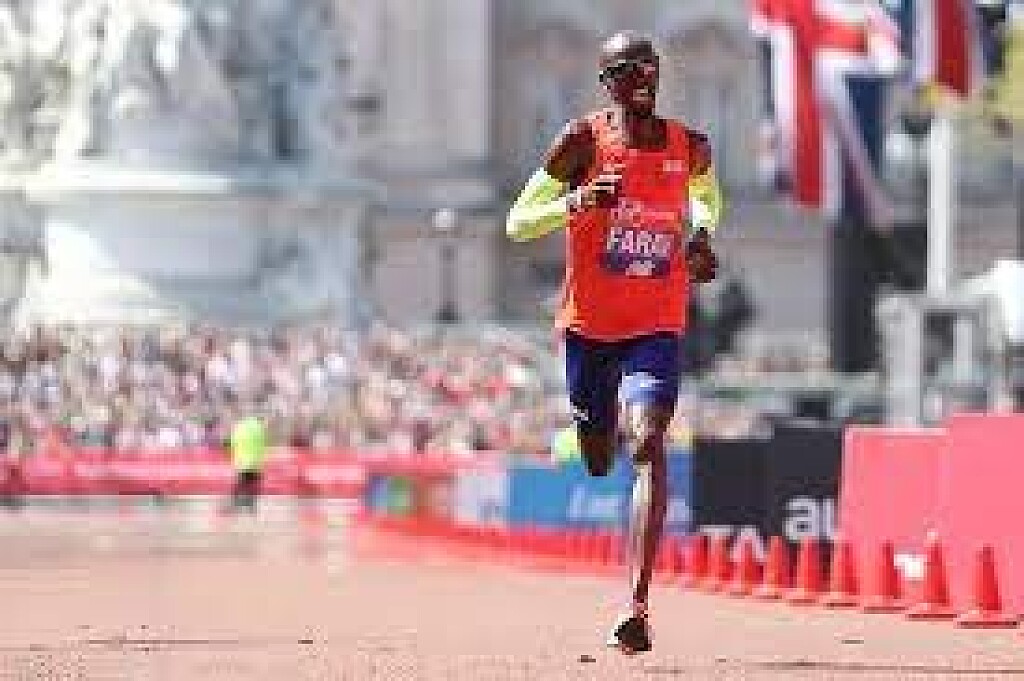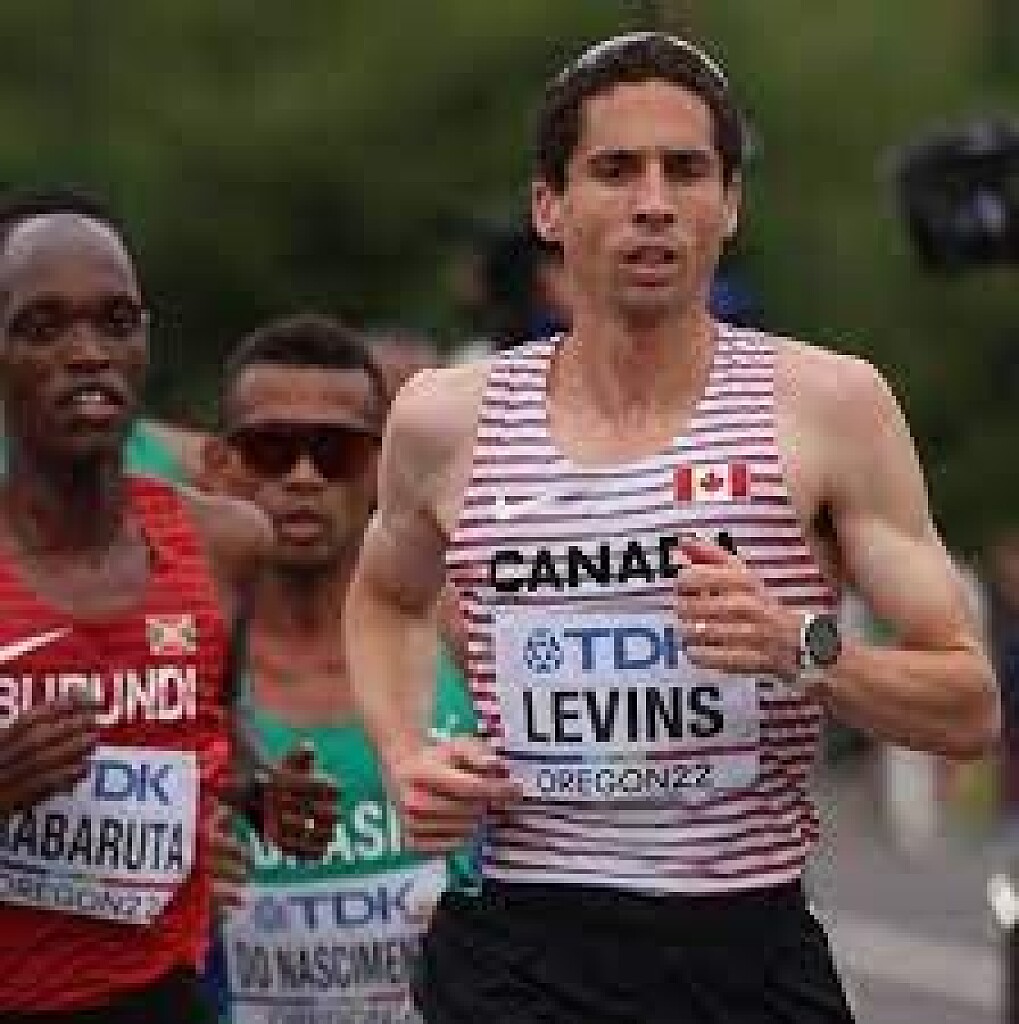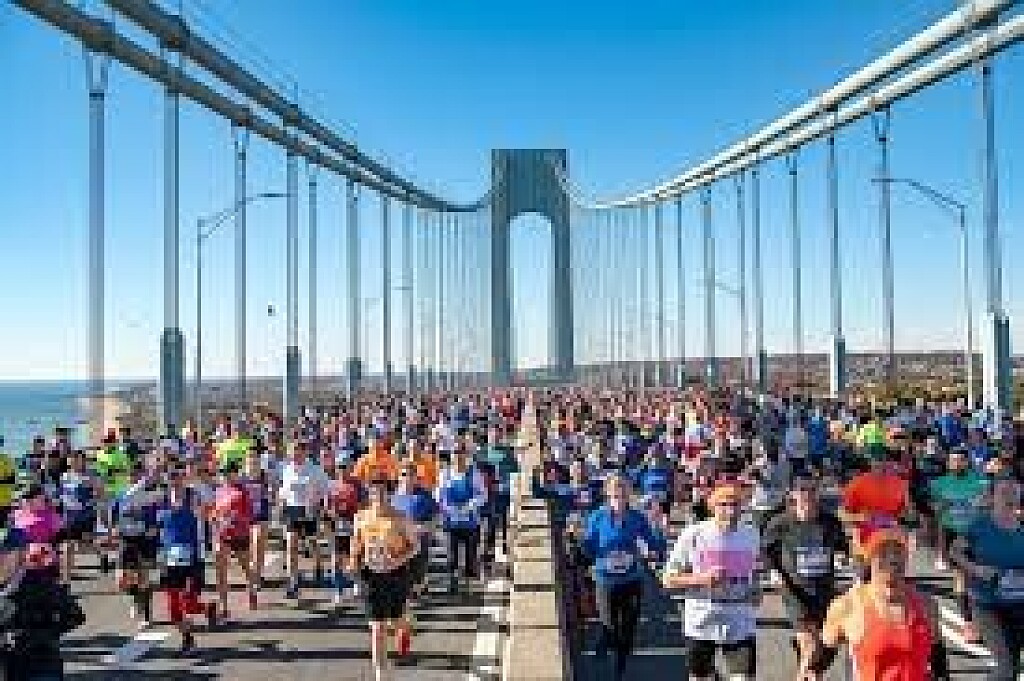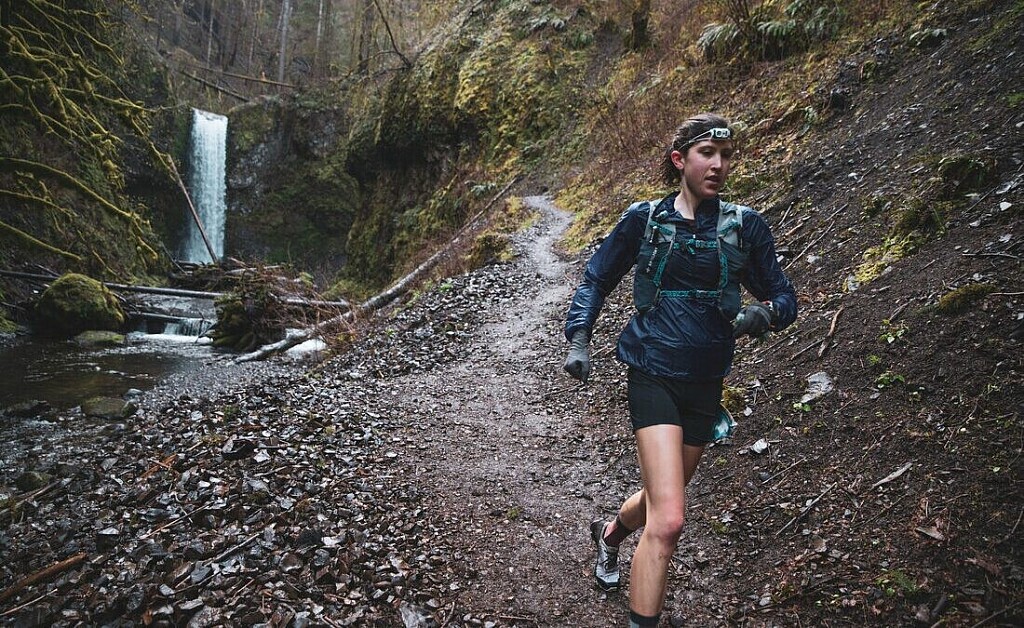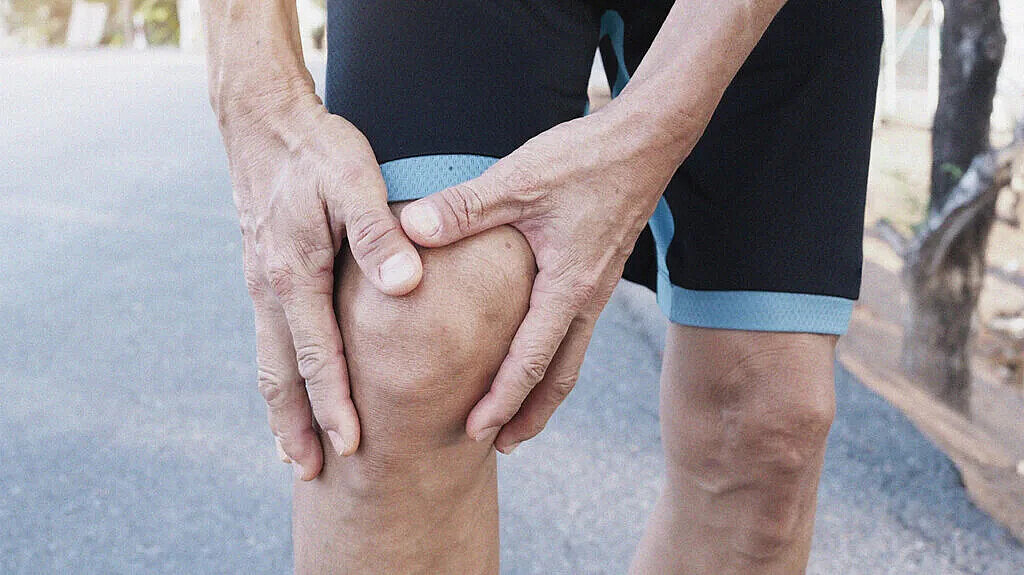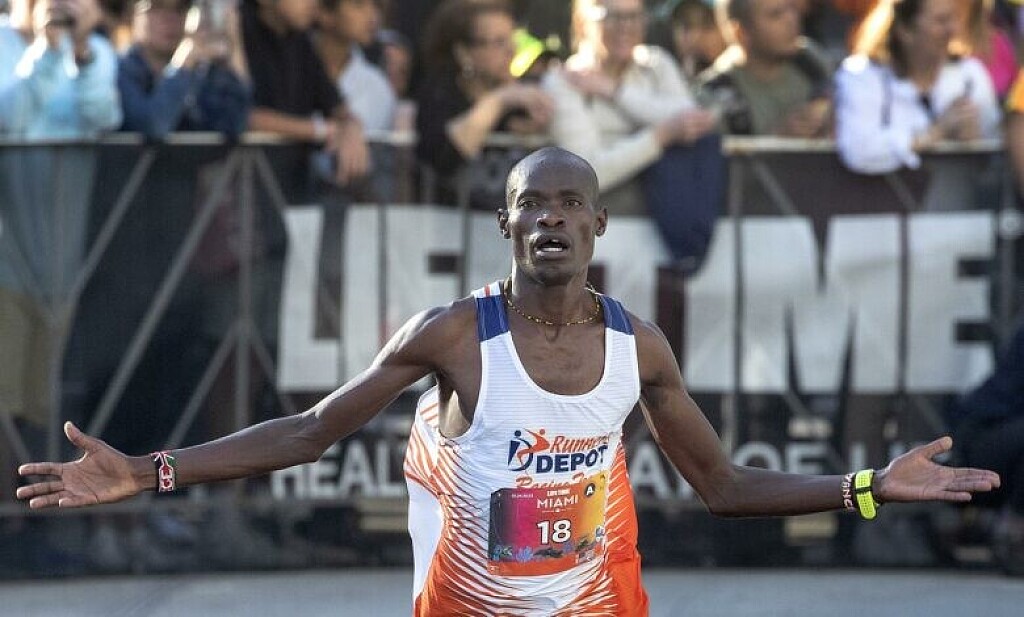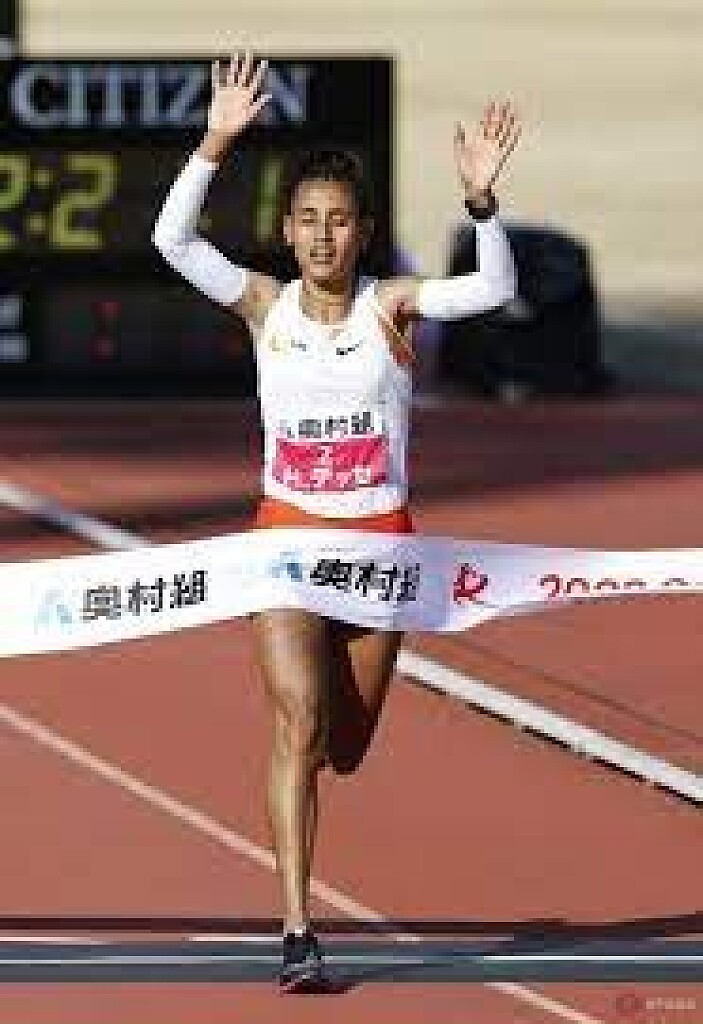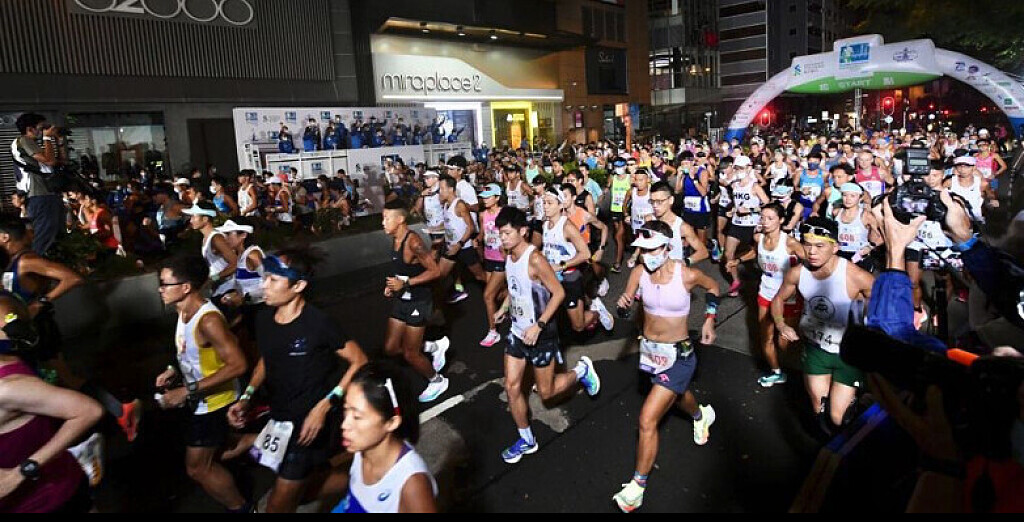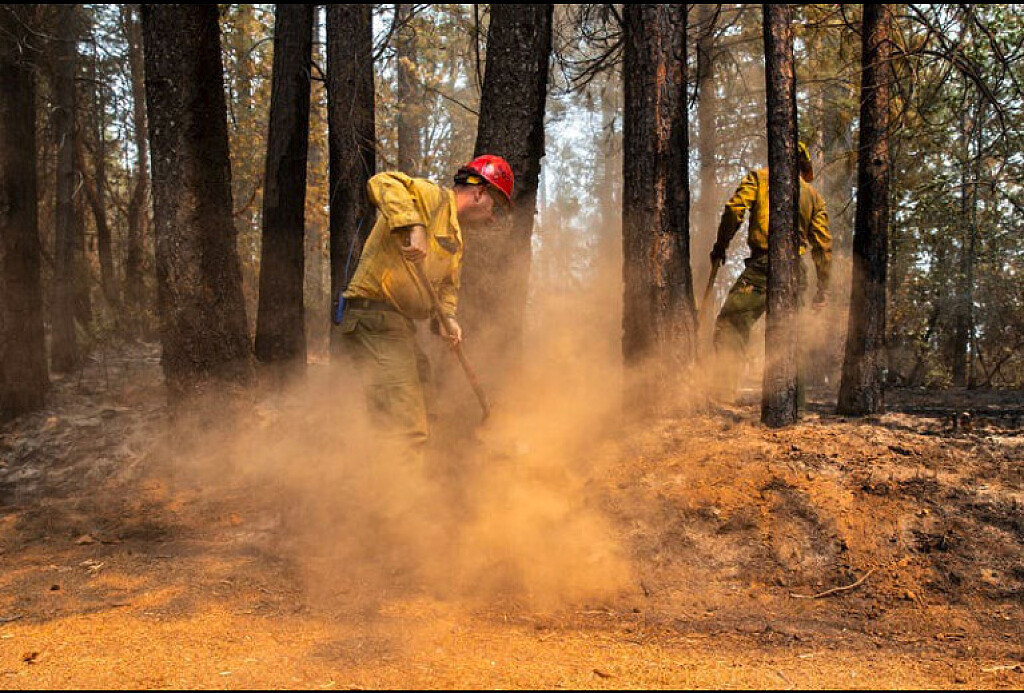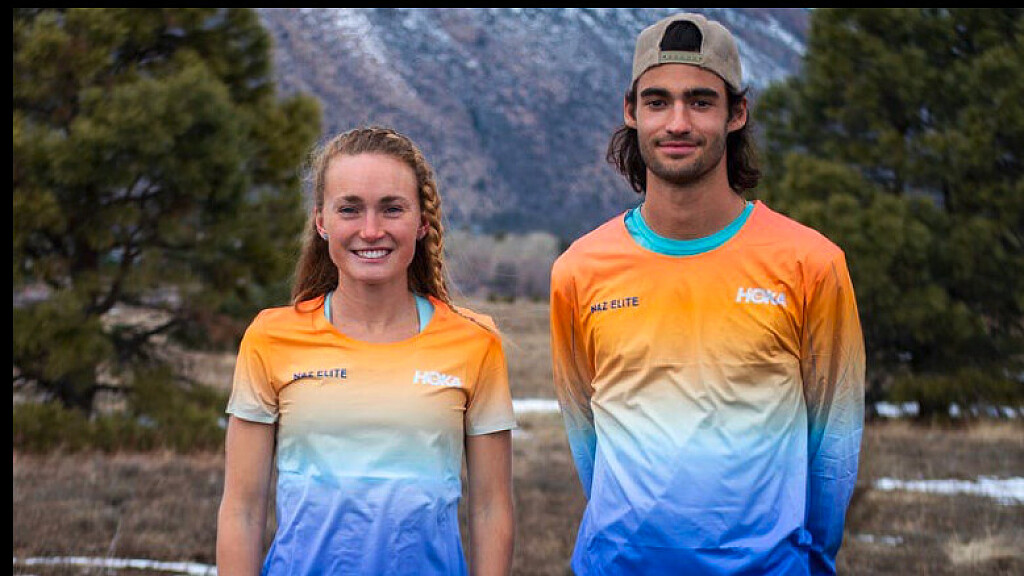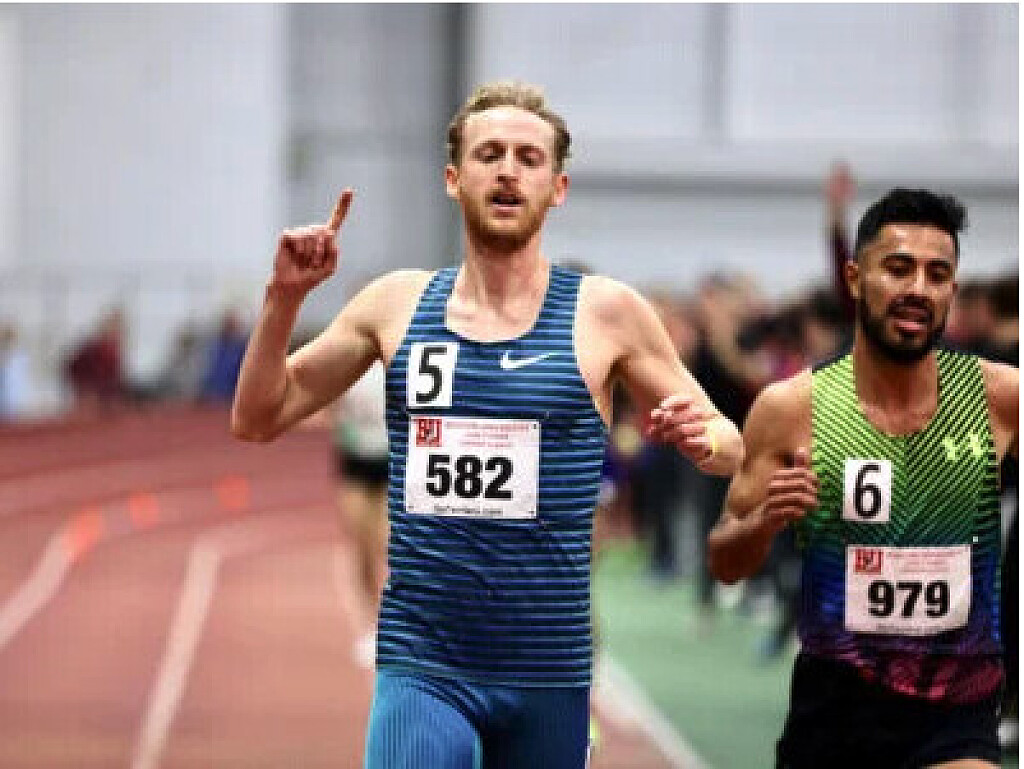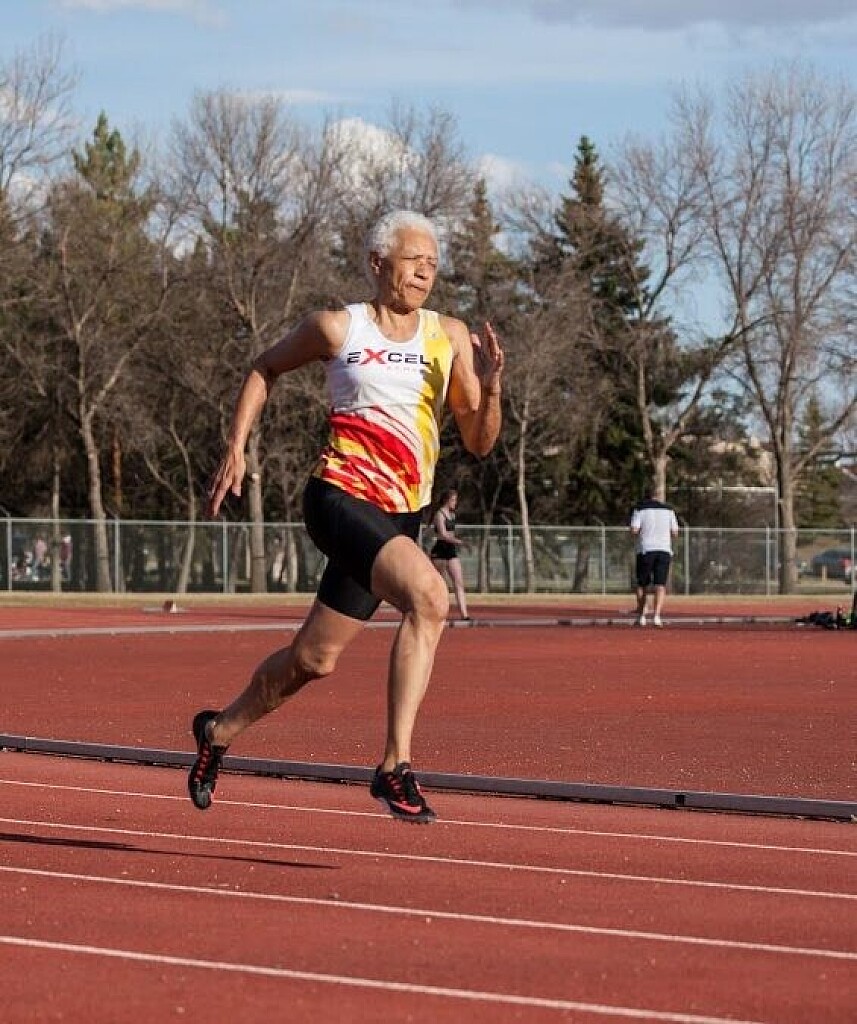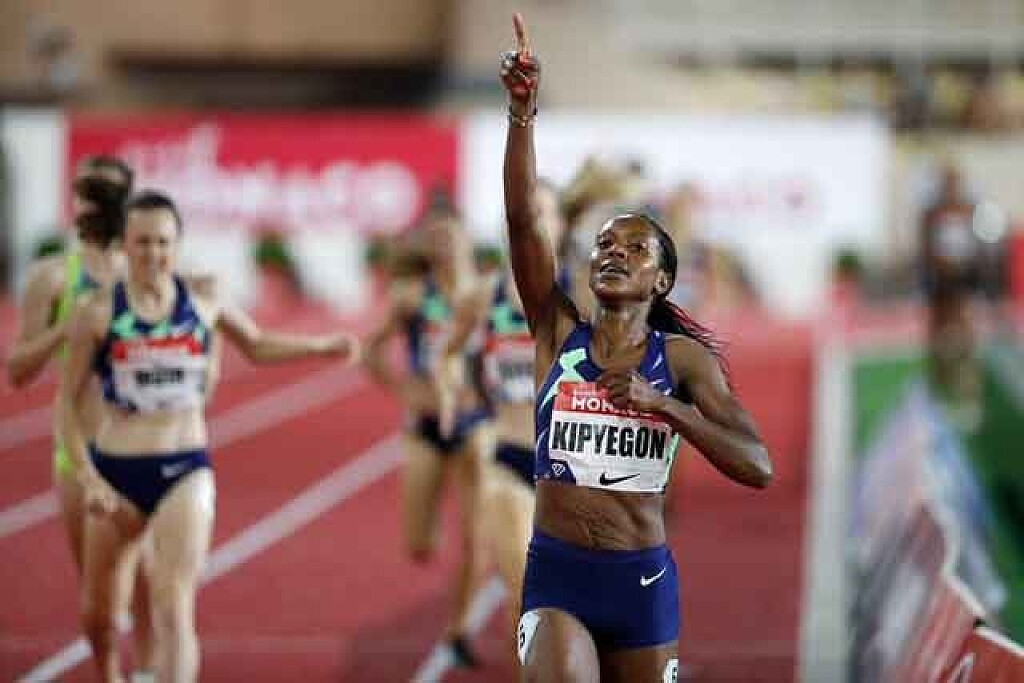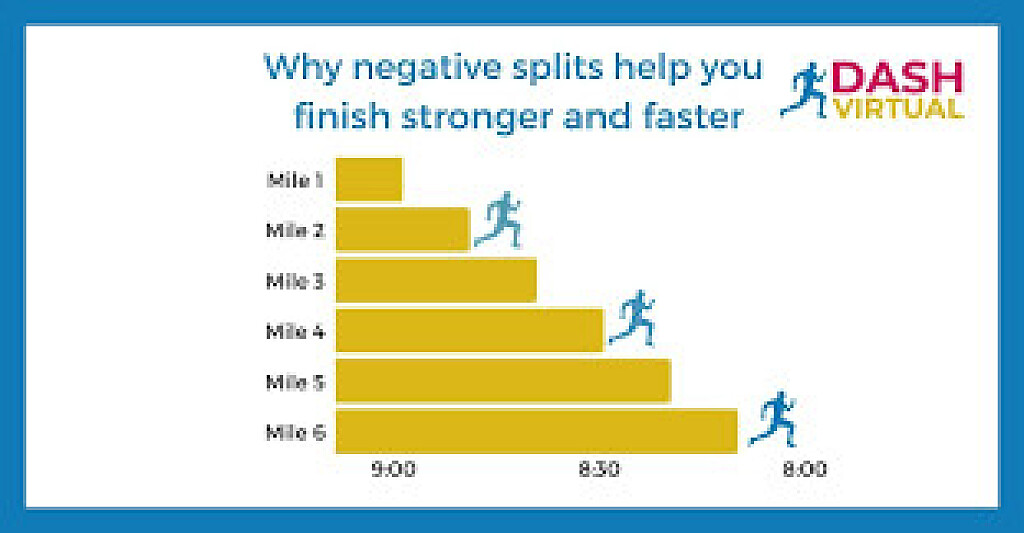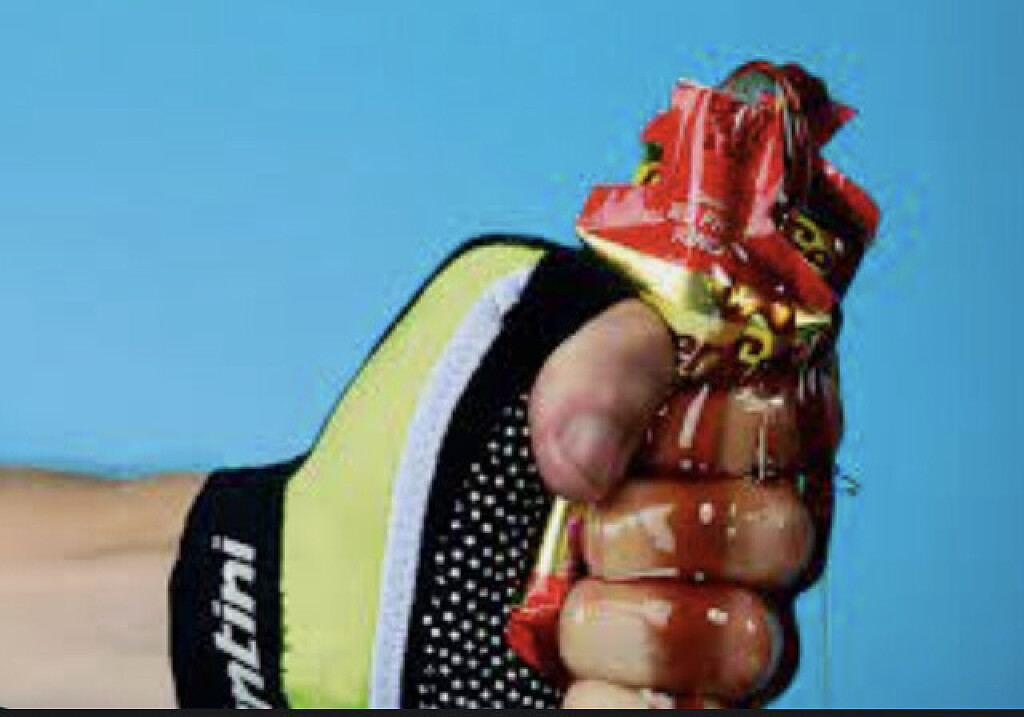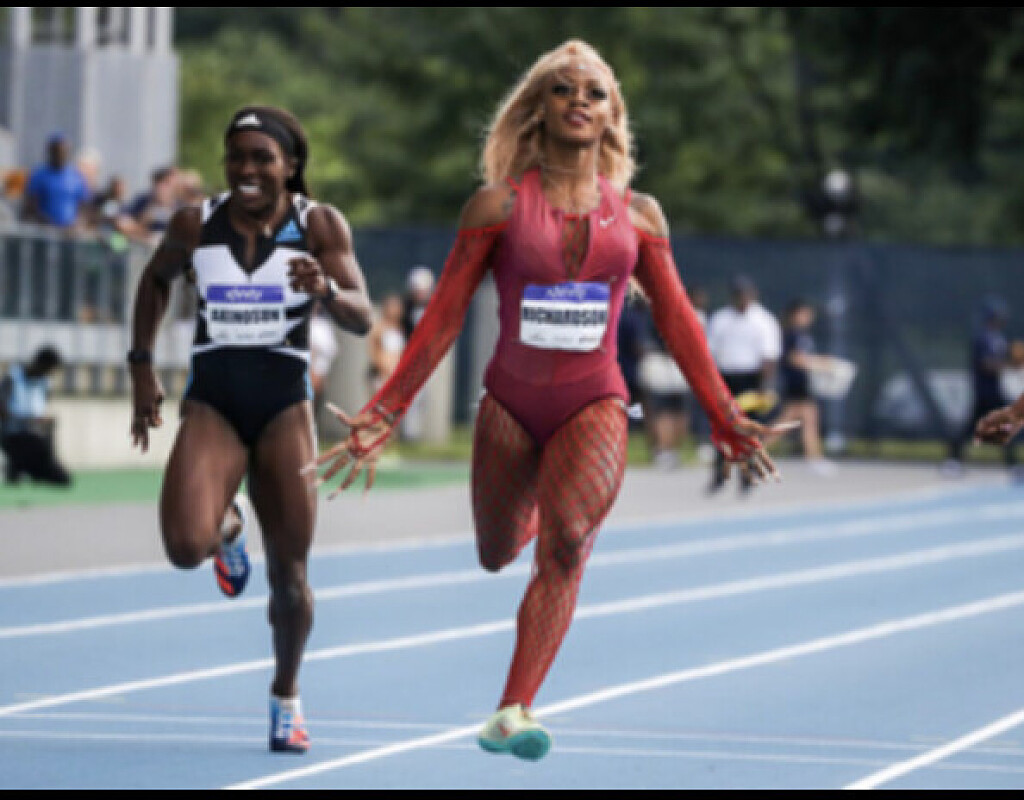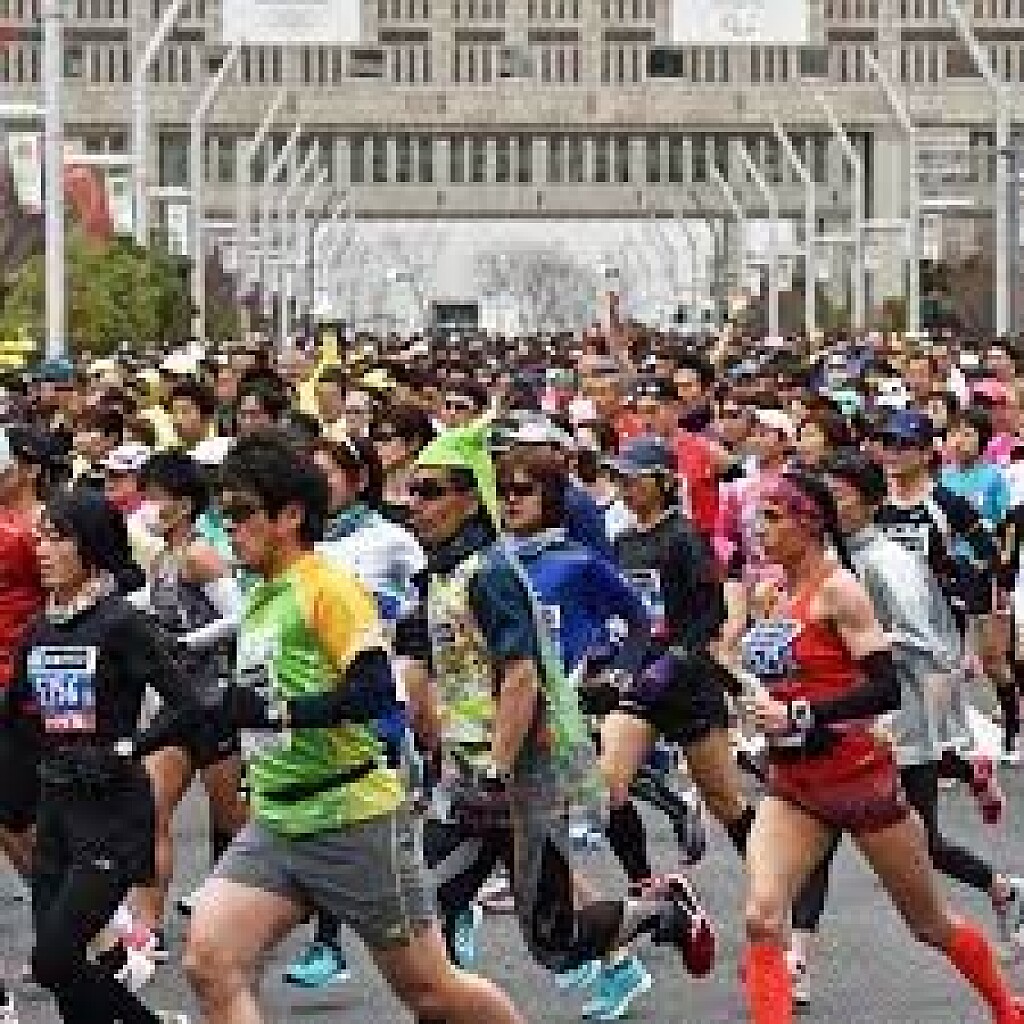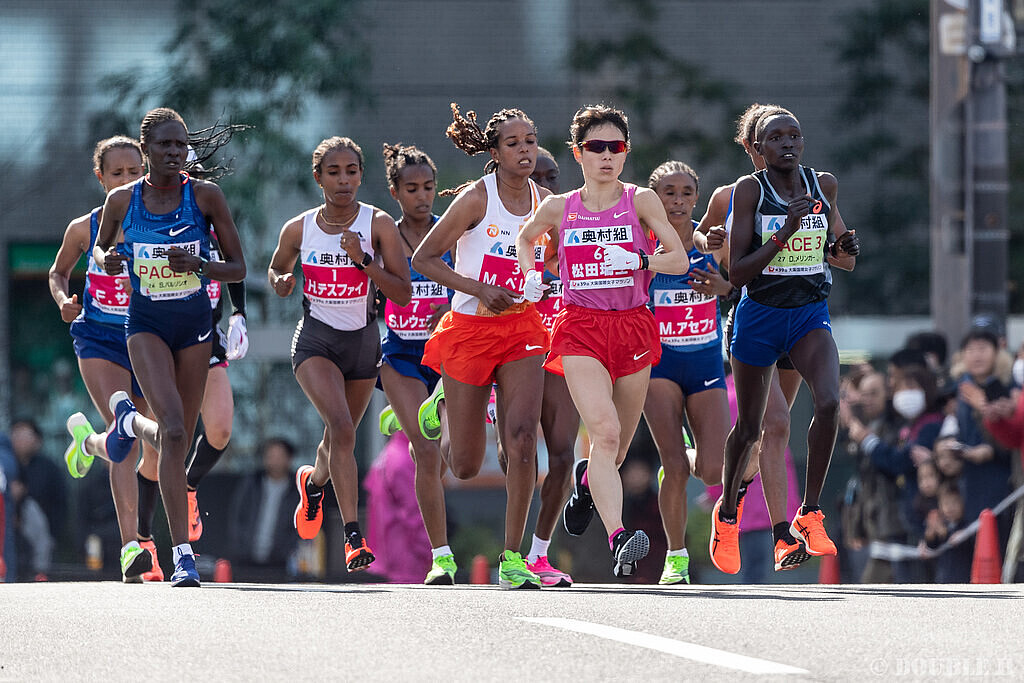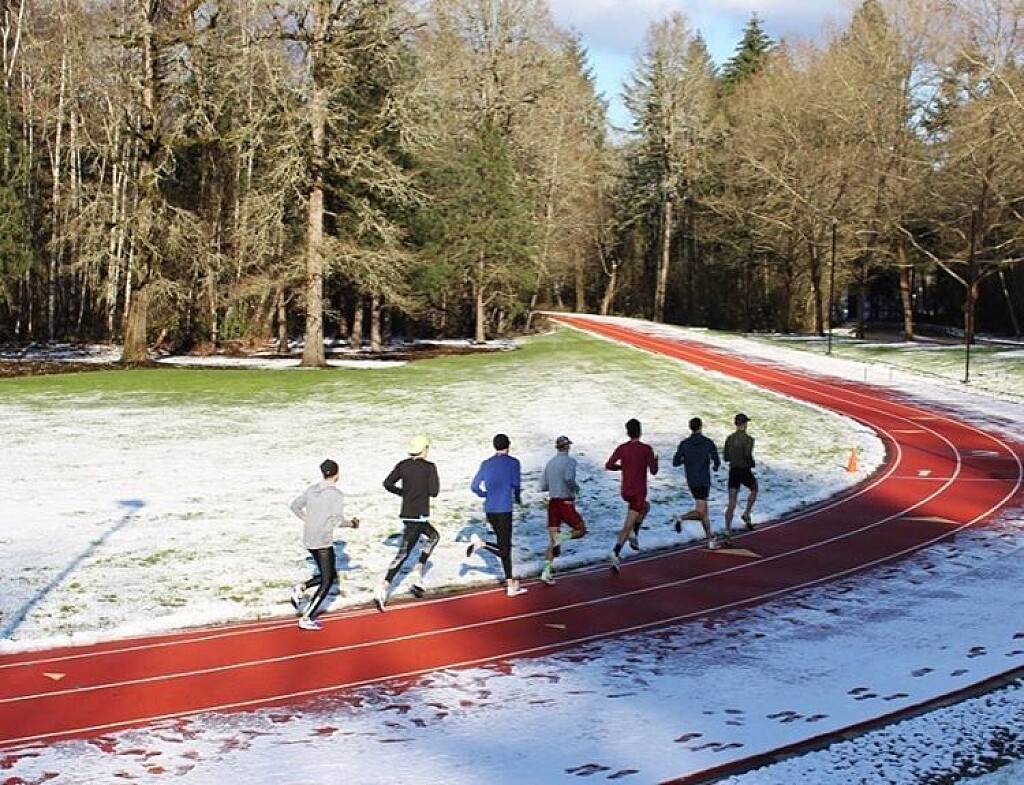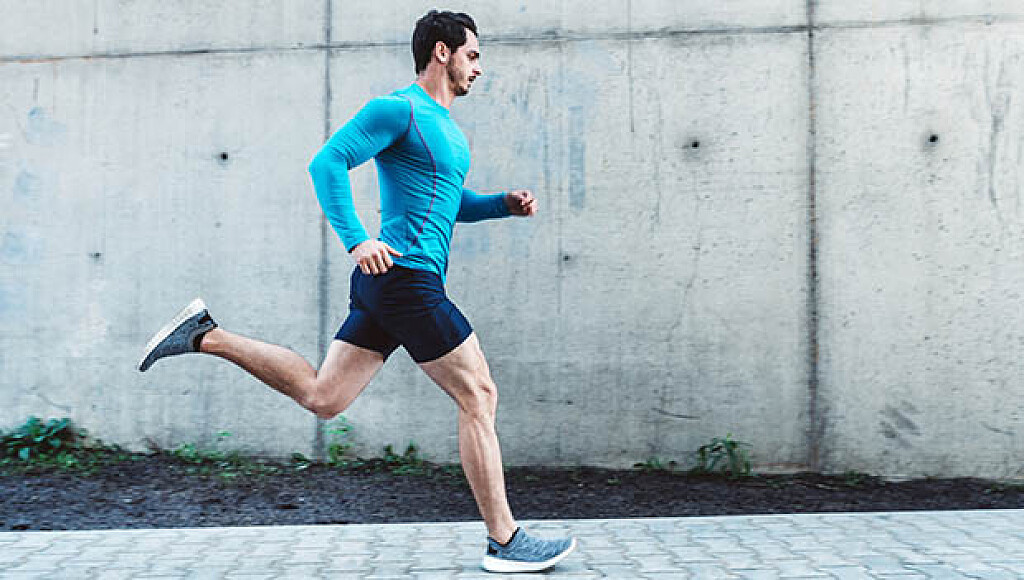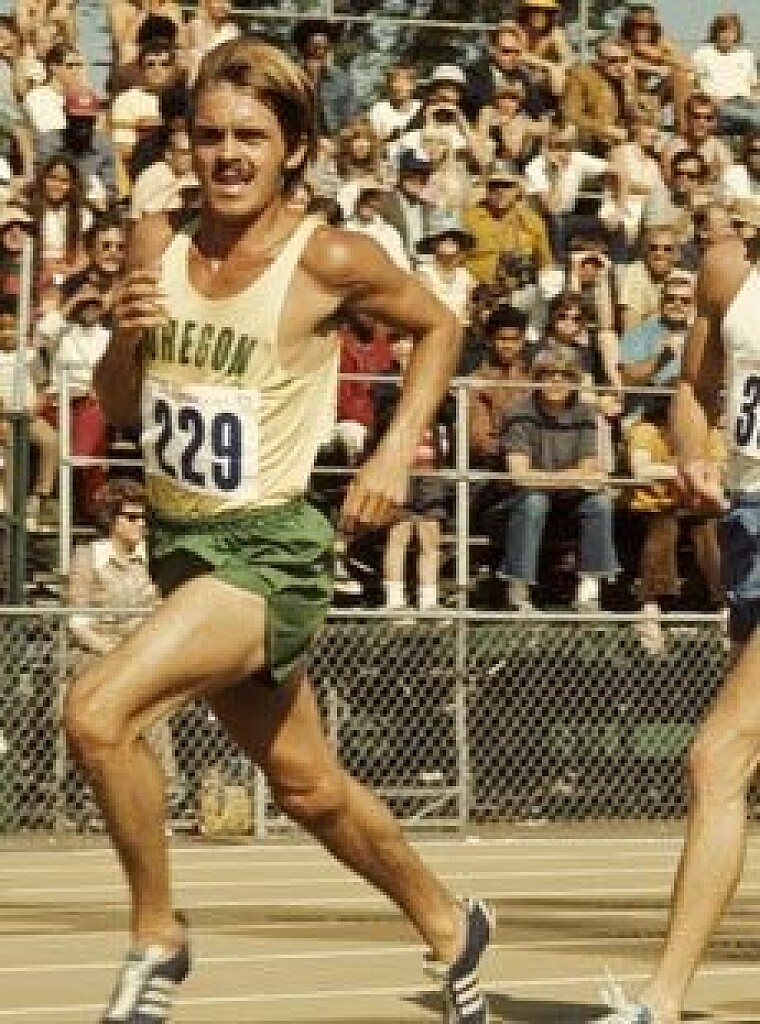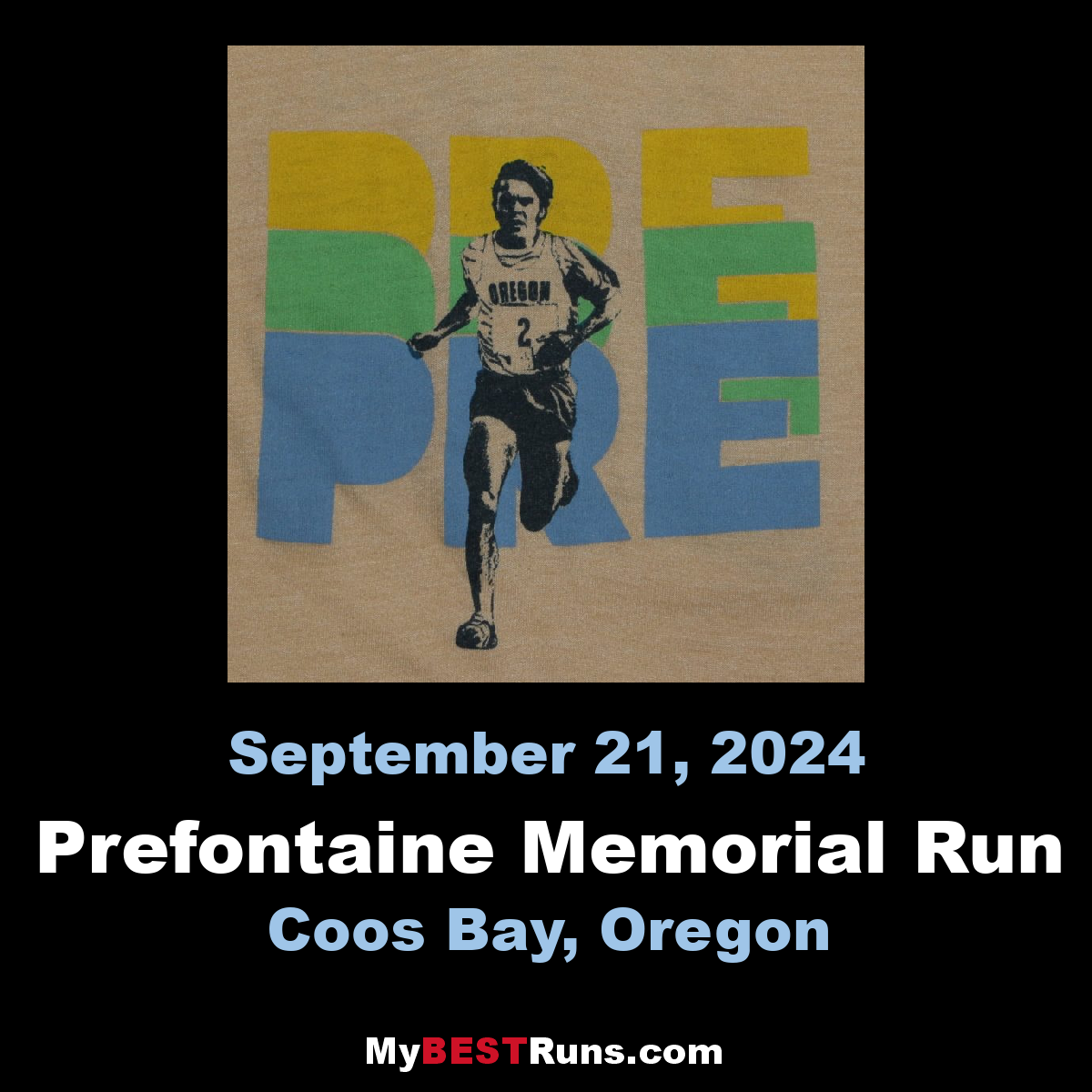Running News Daily
Running News Daily is edited by Bob Anderson in Mountain View, California USA and team in Thika Kenya, La Piedad Mexico, Bend Oregon, Chandler Arizona and Monforte da Beira Portugal. Send your news items to bob@mybestruns.com Advertising opportunities available. Over one million readers and growing. Train the Kenyan Way at KATA Running Retreat Kenya. (Kenyan Athletics Training Academy) in Thika Kenya. Opening in june 2024 KATA Running retreat Portugal. Learn more about Bob Anderson, MBR publisher and KATA director/owner, take a look at A Long Run the movie covering Bob's 50 race challenge.
Index to Daily Posts · Sign Up For Updates · Run The World Feed
How Listening to Podcasts Helped This Guy Drop 55 Pounds
Tuning in turned walking time into productive time and helped boost Daniel Tan's weight loss and muscle gain.
I put on a lot of weight during Covid. Lockdowns were especially harsh in Singapore; the days were long and boring at home and we found that having good food and wine helped make things bearable. And working from home meant wearing a lot of t-shirts and shorts.
When we started to go back to the office early in 2022, I realized that I couldn’t fit into my work clothes. Probably more important, I was probably in the poorest physical state I had been in my life. I was on medication for hypertension. I wasn’t happy with what I saw in the mirror and knew that I could do better.
It was either buy a new wardrobe or make some serious changes. Ready to get myself back on track, I signed up with Ultimate Performance Singapore.
Before I got started, I didn’t have much of a diet routine. I’d skip breakfast, then eat whatever I wanted for lunch or dinner. As I mentioned, during lockdown I’d often share a bottle of wine for dinner. So I had room for improvement.
Protein, protein, protein
My new diet kept me at a caloric deficit while still giving me enough protein to support muscle growth. Since so many of my daily calories came from protein in my new way of eating, I ate fairly large volumes of food, which kept me full all day. I never actually felt deprived or starved even when I was in the low-calorie phase. (Find out more about protein here.)
My meals were a lot more disciplined than they used to be. I hit specific portions of protein, carbohydrates, and fat. For the first month or so, I had a set of three pre-planned meals per day, which I supplemented with a protein shake. Later on, I started experimenting with some recipes from the UP Cookbook. My trainer was great about mixing up my meals so I didn’t get bored of any one thing. I generally stuck with three meals a day, no snacks. I very conscientiously drank at least four liters (1 gallon) of fluid a day. And I had vitamins and other supplements.

Weights and walking
I had in the past dabbled with weight training, but nothing very serious. My form was probably all wrong. I met with my trainer for an hour on Monday, Wednesday, and Friday mornings. Each session, we’d hit all of the major muscle groups; we’d usually start with dumbbell or barbell presses, then go on to legs, back, shoulders, and arms. I also took brisk walks every day; we started with a goal of 10,000 steps a day, which I gradually pushed up to 16,000 or more.
I’ve realized that walking as a weight-loss tool is severely underrated. I firmly believe that all the steps I put in were key to my transformation. The best part about walking is that it’s already a part of our normal lives—all you need to do is just walk farther and longer. I listened to podcasts while I walked, which made it feel like productive time. I wore out a brand new pair of sneakers in about 4 months!
In eight months I lost 55 pounds (25 kg), and my body fat percentage dropped from 35 percent to 11 percent. I’m not sure how much muscle I gained, but I am definitely much stronger than when I started!
It’s given me a real boost of confidence. I didn’t think I really had any mental blocks, but after this transformation, I have so much more belief in my physical abilities. I’ve internalized a lot of my trainer’s knowledge about form and paying attention to my body, which also makes me feel more in control. It really helped to have an expert in my corner.
My blood pressure has also improved significantly, and my doctor has agreed to start weaning me off of my blood pressure medication. Fingers crossed that soon I’ll be able to come off it completely. I also noticed that skiing doesn’t leave me with the same muscle aches that I used to get—my core and quads are a lot stronger.
This is still a work in progress. I have set a new goal of bulking up and packing on muscle. That means a completely different diet regimen, and it’s been interesting seeing how my body responds to this new phase.
Diet was such an important key for me, as it really is for anyone. I had to have a sustainable, healthy diet that didn’t leave me feeling starved. And I wanted food that tastes good! Having someone who knew how to make all of that work with my workout plan and fitness goals was invaluable. Left on my own, I’d just have been shooting in the dark. Instead, I’m transformed—and I’m just getting started.
(02/05/2023) ⚡AMPby Men’s Health
7 albums perfect for long-run listening
Every now and then, your go-to running playlists can get a little old. Fortunately, there are thousands of new songs and musicians out there, all just waiting for you to discover them. While there are many new playlists you could create specifically for your next run, there are also plenty of albums that are pretty much perfect for working out. Canadian Running spoke to runners to find out what their go-to albums are for their long runs, and while each collection is sure to have a few slower-paced songs, most are fast and energizing. There are many albums to choose from, but here are seven to get you started.
Absolution by Muse (2003)

What better way to get into a run than some fast-paced rock music? Absolution will immediately fire you into the zone and your run will fly by, thanks to the album’s fun and enjoyable lineup of songs. There are 15 songs in total, adding up to 57 minutes, making this album perfect for a Sunday long run.
Beyoncé by Beyoncé (2013)
Thanks to this album, Beyoncé earned herself five Grammy Awards, including Album of the Year. Anyone familiar with Beyoncé and her music will know that she never fails to create entertaining albums, and her album Beyoncé is no exception. At 14 songs spanning an hour and seven minutes, this album is another great way to not only get you pumped up for your run, but to keep you excited and energized right through to the end.
Recovery by Eminem (2010)
Like Beyoncé, Eminem‘s 2010 album Recovery was nominated at the Grammys for Album of the Year, and it won Best Rap Album. Eminem is well known for being one of the fastest rappers on the planet, which is great for anyone looking to keep a quick cadence on a run. The album is 78 minutes long with 17 songs, but it will fly by, and before you know it, your run will be done.
Currents by Tame Impala (2015)
Switching genres, Tame Impala’s 2015 album Currents is another great one to add to your running music library. Currents was nominated for Best Alternative Music Album at the Grammys, and its 13 songs are clocked at a total of just over 50 minutes, making it a great option for anyone eyeing sub-one-hour workouts.
YSIV by Logic (2018)
Like Eminem, pretty much anything Logic publishes is sure to be fast-paced. YSIV came out in 2018, and it’s another great option for any runners who like rap and are looking for a quick cadence. The album is 76 minutes long at 14 tracks, but once again, it won’t feel like that long by the time you’re through.
Songs in the Key of Life by Stevie Wonder (1976)
Throwing it back to the 70s, Stevie Wonder gives us our longest album on the list with Songs in the Key of Life. If you’ve never heard of Wonder or his music, you’re missing out, and this album is a great way to introduce you to him. The album is a great option for anyone doing half-marathon or marathon training, as its 21 songs add up to a whopping one hour and 45 minutes. Wonder’s music will never fail to get you jazzed up and rearing to run.
Future Nostalgia by Dua Lipa (2020)
Finally, we have yet another Grammy-nominated album with Dua Lipa‘s 2020 hit collection Future Nostalgia. This was nominated for Album of the Year, and it won Best Pop Vocal Album. At 43 minutes, Dua Lipa’s 13 songs add up to the perfect length for anyone looking to run longer than a 5K but still under an hour, and her constantly high energy is contagious.
(02/05/2023) ⚡AMPby Running Magazine
Zeyituna Husan and Ibrahim Hassan Break Beppu-Oita Mainchi Marathon CR
In its 71st edition the Beppu-Oita Mainichi Marathon saw new course records in both the women's and men's races. On a cold and slightly windy day Japan-based Ethiopian Zeyituna Husan took advantage of the big crowds of amateur men at her pace, going through halfway in 1:14:44 en route in her debut to win in 2:31:41. Her time took 1:19 off the previous record set in 2018 by Hiroko Yoshitomi.

Excellent pacing that saw every 5 km split through 30 km in the men's race land in the 15:01 to 15:03 range and a big pack that rolled with it set up a tough last 12 km. Djibouti's Ibrahim Hassaninched it up a notch as soon as the pacers were done, covering the next two 5 km in 14:59 each. That gave him a short lead over Kenyan Daniel Kipchumba, but Hassan almost lost it. Deeply in the zone, he didn't notice the turn into the stadium for the track finish and ran into the back of the camera truck. Kipchumba surged to take advantage of Hassan's loss, but Hassan managed to pull it back together and hold on for the win by 5 seconds in 2:06:43, a negative split even with the lost time. Hassan's time broke the Djibouti NR, set 9 years before he was born, by 24 seconds, and was the first 2:06 in Beppu-Oita history, beating last year's CR by 1:04.
The main Japanese pack couldn't match that closing speed over the last 12 km, but both 3rd-placer Tsubasa Ichiyama, 2:07:44, and 4th-placer Shungo Yokota, 2:07:47, bettered or tied the old CR. The 22-year-old Yokota also had the distinction of breaking the 2:08:12 collegiate marathon record set in 2003 by current Chuo University head coach Masakazu Fujiwara. 5th and 6th-place Kento Kikutani and Shin Kimura made it under 2:08 as well, with the next three under 2:09 and another four sub-2:10.
Ichiyama, Yokota, Kimura and 7th-placer Tsukasa Koyama all joined the ranks of qualifiers for October's MGC Race Olympic marathon trials, with 10th-place Naoya Sakuda and 13th-place Kazuki Muramoto also making it in through the two-race sub-2:10 average option. 9th-place Yuichi Yasui, 11th-place Takashi Ichida and 12th-place Riki Nakanishi all broke 2:10 in Beppu but will have to try one more time before the end-of-May qualifying deadline to hit the two-race standard. The Ottawa Marathon should be packed with Japanese men shooting for that desperate last chance.
71st Beppu-Oita Mainichi Marathon
(02/05/2023) ⚡AMPby Brett Larner Japan Running News
Beppu-Oita Mainichi Marathon
The Beppu-Oita Marathon is an annual men's marathon race that takes place every February between the cities of Beppu and Oita on the island of Kyushu in Japan. First held in 1952 as a 35km race, the looped marathon course begins at the bottom of Takasaki Mountain and reaches Beppu's Kankoko International Port before turning back towards the finishing point...
more...Pauline Kamulu and Alexander Mutiso Break Marugame Half CR
In its 75th anniversary race the Marugame Half saw new course records in both the women's and men's races and a near-miss on a new Japanese men's NR. Japan-based Kenyan Pauline Kamulusoloed a 1:07:22 CR to win the women's race by 49 seconds, 4 seconds under the old CR and her fastest time since her 1:06:56 for bronze at the 2018 World Half Marathon Championships. Rika Kaseda continued to climb the ranks among Japanese women with a 1:08:11 for 2nd, landing her in the all-time Japanese top 10. Australian duo Isobel Batt-Doyle and Sinead Diver were 3-4 just 2 seconds apart in 1:09:27 and 1:09:29.


In the men's race a lead sextet of Japan-based Kenyans Alexander Mutiso, Cleophas Kandie and Andrew Lorot, corporate leaguer Tomoki Ota, and collegiate runners Kotaro Shinohara and Reishi Yoshida went through 10 km together in 10 km before splitting into two groups. Lorot fell off the front group before 15 km and Yoshida off the back group by 15 km, leaving Mutiso and Kandie head-to-head up front and Ota and Shinohara on NR pace. In the last kick Mutiso got the win 30 seconds under the old CR in 59:17, the fastest time ever run in Japan, with Kandie 1 second behind him. Lorot was a distant 3rd but only 7 seconds over the old CR in 59:54.
Ota and Shinohara couldn't hold it together over the final 5 km and faded just off the 1:00:00 Japanese NR, Ota taking 4th in 1:00:08. Shinohara, who runs for 2023 Hakone Ekiden champ Komazawa University, was 5th in 1:00:11, the fastest time ever by a Japanese-born collegian. Yoshida hung on to take 6th in 1:00:31, also under the old JPN collegiate best of 1:00:40 set by Shinohara's teammate Chikara Yamano last February. Along with Ota, the Toyota corporate team put two others, Minato Oishi and Kazuya Nishiyama, inside the top 10, both under 1:01:20, and one more, Yusuke Nishiyama, under 1:02 in 1:01:56 for 19th. All told 56 men were under 63 minutes, one of the better years in Marugame's 75-year history.
75th Kagawa Marugame International Half Marathon
(02/05/2023) ⚡AMP
by Brett Larner Japan Running News
Kagawa Marugame Half Marathon
The Kagawa Marugame Half Marathon is an annual road running competition which takes place in early February in Marugame, Japan. It currently holds IAAF Silver Label Road Race status and the professional races attract over 1000 entries each year, and hosted by the Sankei Shimbun, Sankei Sports, Okayama Broadcasting, BS Fuji. The race in Marugame was first held in 1947...
more...Ruth Chepngetich says her next focus is on defending her Nagoya Women’s Marathon title
World Half Marathon record holder Ruth Chepngetich says her next focus is on defending her Nagoya Women’s Marathon title in march after clinching the National Cross Country title at the Kenya Prisons Training College.
Chepngetich clocked 0:32:56 in first place, ahead of the 2016 Africa 5000m champion Sheila Chepkirui (0:32:58) and Zena Jemutai (0:33:06).

“The race was not easy but I am happy I managed to hold on and win. I am preparing to go and defend my title at the Nagoya Marathon in March and running in this competition today was a good way to prepare myself,” the 2019 World marathon champion said.
The two-time Chicago Marathon champion, who was competing on behalf of Kenya Prisons athletics team, spoke of how she has become a better athlete by running in cross country races.

“It is my favorite race because it sharpens me physically and psychologically prepares me for more battles ahead. It is never easy, I admit…and you will always feel a lot of pain,” she said.
On the other hand, Chepkirui, who made her debut in the 42km races in December last year, is preparing for a shot at the Boston Marathon title in May – to improve on her third-place finish at Valencia Marathon.
“My eyes are on Boston…it will be my second ever marathon race and I want to do well. So, it means going back to the drawing board to intensify training because it will not be easy battling against other elite athletes,” the Kenya Defense Forces athlete said.
(02/04/2023) ⚡AMPby Athletics Kenya
Nagoya Women's Marathon
The Nagoya Women's Marathon named Nagoya International Women's Marathon until the 2010 race, is an annual marathon race for female runners over the classic distance of 42 km and 195 metres, held in Nagoya, Japan in early March every year. It holds IAAF Gold Label road race status. It began in 1980 as an annual 20-kilometre road race held in...
more...San Francisco Half Marathon returns for its 39th year this weekend
The San Francisco Half Marathon, 10K, and 5K presented by Pamakid Runners returns on February 5, 2023, after a renewal from title sponsor, Kaiser Permanente. This year marks the race’s 39th year running through the streets of San Francisco, and Kaiser Permanente’s 19th year as title sponsor.
The San Francisco Half Marathon started in 1983 and has become one of the city’s largest road races, with over 100,000 runners having crossed the finish line. Over the years the race has raised over $1 million which goes right back into the community. Registration numbers have rebounded to pre-pandemic levels as the race remains a long-time fixture on the Bay Area running calendar.
According to club President Jerry Flanagan, “Pamakid Runners take great pride in promoting a healthy lifestyle and supporting our local community and charitable causes through our participation, volunteering, and financial support. Through the continuing success of the Kaiser Permanente San Francisco Half Marathon, Pamakid Runners was able to donate over $120,000 in 2022 to many local and regional nonprofits. More to come in 2023!”

This year, the race’s charity partners include Girls on the Run, Salvation Army Harbor Light, Running for a Better Oakland, and Support for Families of Children with Disabilities.
Kaiser Permanente’s ongoing support has been instrumental to the success of the event. Over 100 Kaiser Permanente employees are involved in executing the race’s medical plan, ensuring a safe race day experience for all. “We approach the runners as if they were patients in our office. On race days, we see everything from minor injuries, such as scraped knees and sprained ankles, to hypothermia and shortness of breath. Our Kaiser Permanente health professionals work to assess and treat any issues,” says Race Medical Director, John Touhy who is a Kaiser Permanente San Francisco sports medicine physician.
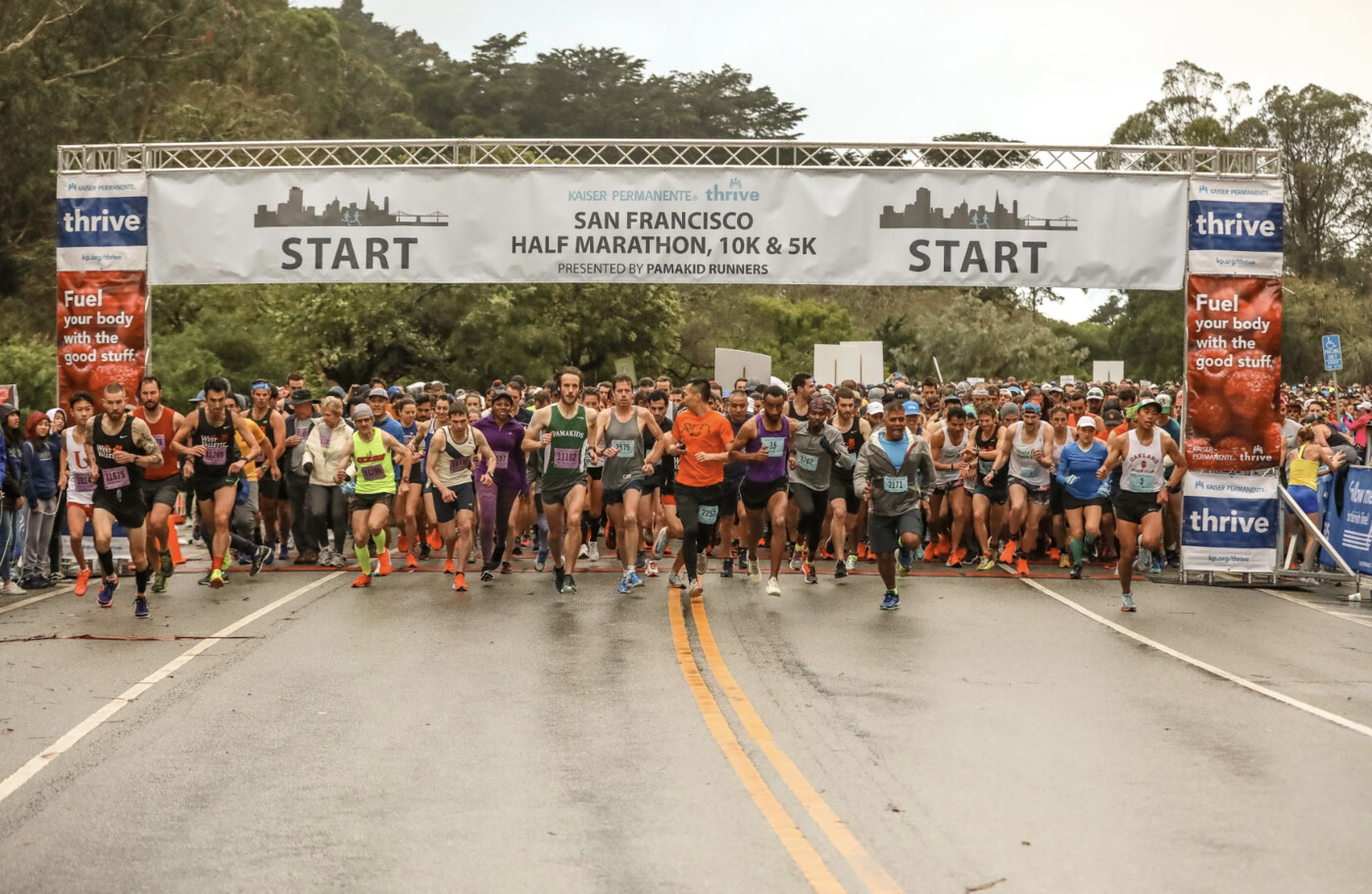
The 39th annual race, produced by Blistering Pace Race Management, is Sunday, February 5th in Golden Gate Park with three distances to choose from including a 5K, 10K, and Half Marathon. Registration is available at www.sanfranciscohalfmarathon.org
About Pamakid Runners: Established in 1971, the Pamakid Runners strive to promote a healthy lifestyle, support the running community and charitable causes by organizing, volunteering, and participating in running-related and social events in the San Francisco Bay Area. Visit www.pamakidrunners.org for more information.
About Blistering Pace Race Management: Founded in 2016, BPRM works in a variety of race management capacities, ranging from staffing to full operational oversight. Clients include the Kaiser Permanente San Francisco Half Marathon (10K & 5K), the Kaiser Permanente Napa Valley Marathon and Half Marathon, the Big Sur Marathon Foundation, Chicago Event Management, and the New York Road Runners. For more information, visit www.blisteringpace.com
(02/04/2023) ⚡AMPby Running USA
Kaiser Permanente San Francisco Half
The Kaiser Permanente San Francisco Half Marathon® is a runners’ favorite for its scenery and value. A fast and certified course through San Francisco’s scenic Golden Gate Park, the race has been selected as Road Race of the Year by the Road Runners Club of America several times. The 5K is a fast, downhill 3.1 mile course certified by USA...
more...Bigfoot Is Probably Just a Black Bear, According to Recent Research
Data of Sasquatch sightings in a new preprint finds a strong correlation with bear population density
“If Bigfoot is there, it may be many bears,” concludes Floe Foxon, a researcher who just published a preprint analysis of Bigfoot sightings. Their findings suggest that there’s a high correlation between documented Bigfoot encounters and dense populations of black bears.

Previous studies of the Pacific Northwest have identified that most Sasquatch sightings occur in areas with large numbers of black bears. But Foxon extended that analysis across the entire United States and Canada. Using a geographic database of sightings compiled by the Bigfoot Field Researchers Organization, Foxon compared entries with local black bear and human population densities.
“Sasquatch sightings are logically a function of the number of people in each state/province available to make a sighting, and the size (land area) of each state/province (because interactions between humans and animals are less likely when each populate an area sparsely),” explains Foxon in the analysis. “Consequently, models were implemented which investigated the possible association between sightings and bear populations while also adjusting for the potential impact of human population and land area.”
Foxon applied several regression models to the data sets in an effort to find out if changes to one variable were associated with changes in another.
The result? “Black bear population was significantly associated with Sasquatch reports such that, on the average, every 1,000 bear increase in the bear population is associated with [about] a 2.7 percent increase in Sasquatch sightings,” writes Foxon. “Thus, as black bear populations increase, sasquatch sightings are expected to increase also.”
Foxon does note that Bigfoot sightings have occurred in places without black bear populations. “Although this may be interpreted as evidence for the existence of an unknown hominid in North America, it is also explained by misidentification of other animals (including humans), among other possibilities,” Foxon writes.
Still, the association between the presence of black bears and Sasquatch sightings is strong enough that Foxon is able to draw a direct correlation between the two. The researcher concludes in the preprint, “One sasquatch sighting is expected for every few hundred bears in a given state or province.”
(02/04/2023) ⚡AMPby Outside
Transgender Runner Makes History with Women's Magazine Cover
Marathon runner and activist Amelia Gapin is the first transgender woman to appear on the cover of Women's Running
When Women's Running hits newsstands tomorrow, for the first time, you'll see a transgender woman on its cover. Marathon runner Amelia Gapin, 33, who was first named a finalist last fall for the magazine's cover contest, agreed to be featured in the July issue when she realized the impact her decision could have on the larger trans community.

"For me to be on the cover of a women's magazine is kind of a sense of validation that other people are seeing transgender women as women," Gapin told People.
"Running has literally saved my life time and time again. When I was transitioning, running was a safe place to deal with all of the things going on in my life and process both the ups and downs of it all. There is no way I would have survived transition without running," Gapin says in her Women's Running contest bio.
She goes on to explain how outside of transitioning, running has served as an escape for her during her battle with depression. "It's brought me peace and bliss when I most needed it. I've started runs feeling on the verge of suicide and by the end had a huge smile on my face and saw nothing but the beauty in the world. I wouldn't still be here if I didn't have running in my life." (Gapin isn't the only one. Another woman shares: "Running Helped Me Overcome Depression and Anxiety.")
As People reports, Gapin started transitioning four years ago with hormone treatments, and after a long debate ultimately decided to undergo gender reassignment surgery in order to qualify for the Boston Marathon as a woman (something she couldn't do without the surgery).
Gapin, who is a software engineer, activist, and co-founder of MyTransHealth, an organization that connects trans people with trans friendly doctors and quality health care, hopes that the cover will help others who are facing similar doubts by proving transitioning can be a "very positive thing"' and you can be successful-and even land the cover of a magazine while you're at it.
"I'm hoping that it shows people that are thinking about coming out, or want to transition and are afraid, that you can transition and things can go well," she says. "It's really scary to be a trans person right now with everything that's going on, and I know that a lot of people who were thinking about transition are reconsidering that."
In light of the mass shooting at an Orlando gay club this weekend, Gapin emphasized that sentiment by tweeting, "It's weird timing for this, but I hope it can be some positivity for trans people today" and "It's a scary time to have any visibility, let alone visibility like this, but I refuse to hide myself or ever stop fighting for trans people."
(02/04/2023) ⚡AMPby Shape Magazine
Do Super Shoes Give Regular Marathoners a Performance Boost?
Research shows economy gains at slower paces, but they’re smaller and not guaranteed.
It’s no coincidence that running records have been falling in droves in the era of super shoes. While researchers still may not be able to fully explain how the technology works, they have shown that the ultra-compressible foam, curved carbon-fiber plate, and rockered geometry that first appeared in the Nike Vaporfly 4% in 2017 provide competitive runners a 2.7–4.2 percent boost in running economy. In other words, thanks to these shoes, runners need 2.7-4.2 percent less energy to run the same pace—meaning that they can conserve that energy to run farther or expend it to run faster.

One caveat is that, until now, super shoes have been tested only at running speeds of 7:26/mile or faster. Translated into marathon times, that means the science is applicable to someone who runs a marathon in 3:15 or faster—a feat accomplished by only 21 percent of the 2021 Boston Marathon field.
However, new research has finally emerged that looks at whether the majority of runners get an edge from super shoes. The answer: probably yes, but less.
Research for Non-Elites
Dustin Joubert, Ph.D., a kinesiology professor at St. Edward’s University in Austin, Texas, likes to do research, in his words, “for the people.” This is how he came to conduct a study looking into whether super shoes, specifically the Nike ZoomX Vaporfly Next% 2, confer the same running economy advantage to athletes who run at slower paces.
“There’s a lot of people who don’t fit under the umbrella of the speeds that have been tested in all this laboratory research, and a lot of people are asking: Should I spend my money on this? Do they work for slower people?” said Joubert. “That was the next logical question to me.”
To answer the question, Joubert and his colleagues recruited 16 runners—eight men and eight women with prior-year 5K PRs averaging 19:06 and 20:18, respectively—and had them complete two sets of four 5-minute running reps on a treadmill. Each runner ran one set at a 12 kilometers/hour pace (8:00/mile, which would be marathon pace for a runner with a 5K PR of 22:15), and the other set at 10K/hour (9:40/mile, which would be on the slower end of easy pace for that same 22:15 5K runner). Within a given set, the runners tested two different shoes: they ran one 5-minute rep in an experimental carbon-plated shoe, the Nike ZoomX Vaporfly Next% 2, and the other rep in a control shoe, the Asics Hyper Speed. Then, the runners repeated the reps but reversed the order in which they wore shoes (e.g., Asics first, then Nike).
The researchers chose the Asics Hyper Speed as the control shoe because it lacks the technology of the Vaporfly (carbon plate and advanced foam) but matches its mass. This was an important variable to match because mass affects running economy; a heavier shoe will require more energy to move and could therefore confound results. One earlier study compared the Vaporfly to runners’ everyday training shoes, but most regular training shoes are more than 100 grams (3.5 ounces) heavier—the equivalent of about 40 pennies. Imagine lifting those pennies 55,000 times (the average number of steps in a marathon, for men; women take about 63,000 steps). That would require quite a bit more energy!
Economy Advantages for 3:30–4:15 Marathoners
The new study found that, on average, running economy was better in the Vaporfly than in the Hyper Speed. However, at these slower speeds, the improvements were smaller than at faster speeds: runners gained just 1.4 percent in running economy at 8:00/mile pace and 0.9 percent at 9:40/mile pace, compared to the 2.7–4.2 percent advantage runners gained at speeds of 7:26/mile or faster. (And, as we’ll see below, even those improvements came with a caveat.)
Joubert speculates that the reason for this difference comes down to how the foam in the shoes is working. Much of the running economy advantage comes from compressing the compliant/resilient foam in the shoes and then having that energy returned as the foam springs back. A faster runner who is generating larger ground reaction forces will compress the foam more than a slower runner who, because of their speed, isn’t generating as much ground reaction force.
“The shoe is not creating energy for you; it’s only giving back what you put into it,” explained Joubert.
Not Everyone Benefits
Before you decide “an advantage is an advantage,” there is one other finding from this study that should give runners pause. While the results from the 16 test subjects showed a 0.9–1.4 percent average improvement in running economy, one third of the participants actually showed worse running economy when they ran at the 9:40/mile speed in the Vaporflys, compared to the control shoe. This finding diverges from the results of testing done on the Vaporflys at faster speeds, where runners experienced varying degrees of running economy improvement, but no one saw a detriment.
One possible reason has to do with the Vaporfly’s carbon plate. Research has shown that increased longitudinal bending stiffness, or the rigidity of a shoe underfoot, helps to improve running economy at faster speeds by reducing the amount of energy your foot requires as you land and push off from the metatarsophalangeal joint (where your foot connects with your toes). Joubert hypothesizes that, at slower speeds, the stiff carbon plate might stop saving runners energy and instead create a need for more energy in order to get “up over” the plate.
“If the plate’s really stiff, maybe at these slower speeds that’s an impairment to economy,” Joubert said.
Nathan Brown, a doctor of physical therapy at Pineries Running Lab in Stevens Point, Wisconsin, and senior contributor at Doctors of Running, said that this finding in particular helps to reinforce the shoe selection guidance he already offers his patients and the runners he coaches.
“If your goal of picking a shoe for race day is to get faster, but there’s a 30 percent chance that you get worse, I care more about finding the shoe that you like to run in than the shoe that may or may not give you a benefit,” said Brown.
So, Should You Wear Super Shoes?
If you’re an 8:40-9:00/mile marathoner, what should you do? Do you gamble on being in the 66 percent of responders and plunk down your cash for a pair of super shoes? Or do you stick with what you have?
Footwear is ultimately a personal decision, so here are a few more points to consider.
Choose a shoe that’s comfortable.
If a super shoe feels uncomfortable, that might be an indicator that the shoe won’t help you make the economy gains you’re seeking. Joubert guesses that the comfort of your shoes could affect biomechanical aspects of your race-day performance, including economy. “I think if a shoe is uncomfortable, it’s probably not going to be economical,” he said.
Brown emphasizes focusing on comfort and confidence in a race-day shoe rather than “carbon [plate] or no carbon.” To determine whether it’s comfortable, Brown recommends trying your racing shoe in a few workouts and, if your goal race is a marathon, a few long runs in advance of race day.
“You want to feel comfortable [in the] shoe and confident psychologically,” he said. “To know what to expect on a long run from your race-day shoe can be a big deal for performance.”
Don’t wear a super shoe (or any one shoe) for every single run.
Heather Knight Pech, a decorated masters runner and coach for McKirdy Trained and Knight Training, tells every one of her athletes, from high schoolers to masters runners, to invest in a minimum of three pairs of running shoes: a trainer (e.g., Brooks Ghost), a lightweight trainer (e.g., New Balance Rebel), and a race-day shoe (e.g., Nike Vaporfly Next%). She then has them rotate among these shoes for several reasons. First, it decreases injury. Research has shown that runners who rotate their shoes decrease their injury risk by 39 percent compared to runners who wear the same pair for every run.
“Running is a repetitive motion, so you avoid overloading any one muscle, bone, or tendon,” said Pech. “And on the flip side, you’re simultaneously strengthening other structures by rotating your shoes.”
In his physical therapy practice, Brown has found that super shoes tend to reduce the loading on lower leg structures like the Achilles tendon and calf. As a result, he’s noticed a trend in repetitive stress injuries further up the chain, to the hamstrings and hip flexors, in runners who wear that shoe for most or even all of their runs.
The second reason Pech advises runners to rotate shoes is that it forces them to decide between shoes for a given run, which helps them gain a better sense of self-awareness. “We should be very dialed in to how we feel—that’s part of running training and racing,” said Pech. The saying she repeats is: different shoes for different runs for different days.
Look at a variety of styles and brands.
The Nike Vaporfly was the first high-stack carbon-plated shoe on the market, and as a result, it is arguably the most well known. Most brands now have a similar shoe, and while research shows they’re not yet up to par when it comes to running economy, that doesn’t mean different shoes won’t work better for certain runners based on foot anatomy, running stride, and even pure preference.
Pech points out that the Nike Vaporfly is a very high, very narrow, very bouncy shoe. The Saucony Endorphin Pro, on the other hand, she describes as “more stable underfoot, with firmer foam. It’s great for runners who want to feel the ground.” Meanwhile, the Asics Metaspeed, which is also slightly wider underfoot than the Nike Vaporfly, offers two versions between which runners can choose based on their running style: cadence (increasing their turnover) or stride (increasing their stride length).
“I think they’ve all caught up, in that, now, there are different shoes for different people,” said Pech.
Remember: economy isn’t everything.
While running economy does influence running performance, it’s only one small part; how well you eat and sleep, your level of anxiety, how consistently you trained, how well you tapered, and numerous other factors have an equal, if not greater effect on the time you ultimately run in any given race.
Therefore, if you’re a 3:30–4:15 marathoner and don’t want to shell out the money or risk finding yourself in the 33% “anti-responder” group, double down on some basics like pre- or post-run nutrition or even just sleep. Plus, when you beat your Vaporfly-wearing counterparts, you’ll never have to ask, “Was it the shoes?”
(02/04/2023) ⚡AMPby Runner’s World
Nike Sues Lululemon for Alleged Patent Infringement
Nike claims it suffered “economic harm and irreparable injury” as a result of four Lululemon shoes.
The shoe giant Nike is once again suing Lululemon Athletica for patent infringement related to four of its shoes, according to a CNBC report. The complaint was filed Monday in Manhattan federal court.

This is not the first time Nike is suing Lululemon. In January 2022, Nike filed a lawsuit against Lululemon for patent infringement on its Mirror workout technology, according to KGW8.
According to reports, Nike claims it has “suffered economic harm and irreparable injury” as a result of Lululemon’s shoes, Chargefeel Mid, Chargefeel Low, Blissfeel, and Strongfeel shoes.
Nike said its three patents focus on “textile elements, including knitted elements, webbed areas, and tubular structures on the footwear,” according to CNBC. One patent addresses the footwear’s performance.
Lululemon, an apparel company, launched its first shoe, the Blissfeel, last March.
“Nike’s claims are unjustified, and we look forward to proving our case in court,” a Lululemon spokesperson said in a statement, according to CNBC.
Nike’s 2022 lawsuit against Lululemon claims the company infringed on six patents over its Mirror fitness device, which Lululemon bought in 2020, and its related mobile apps, according to CNBC. The company is seeking triple damages in that case.
Nike, according to the CNBC report, says it invented (and filed a patent in 1983) a device that “determined a runner’s speed, calories expended, distance traveled, and time elapsed.” The Mirror platform leads users through cardio and other workouts. The lawsuit claims similarities between the technology enabling users to compete with others, record performances, and target certain exertion levels, per CNBC.
At the time, Lululemon said, in a statement: “The patents in question are overly broad and invalid. We are confident in our position and look forward to defending it in court.”
In September 2022, Lululemon settled a lawsuit with Peloton, after it claimed the fitness equipment company stole sports bra designs from Lululemon, according to CBC.
(02/04/2023) ⚡AMPby Runner’s World
Is Running in Shorts in the Winter Bad for Your Knees?
Gear editor Amanda Furrer learns that running like it’s summer year-round can actually be harmful.Always one to resist the call of running tights, I’ve been donning shorts for every run. Lucky for me, we’ve managed to have a relatively mild winter. However, it’s a sure thing I’ve become that crazy lady about town, exposing her knees running in below-freezing temps like it’s 55 degrees. I am the symbol of forever spring, the promise of summer, the speed demon reassuring worried friends and strangers, “If I get cold, I’ll just run faster!”
While charging down the snow-dusted path in denial of the changing seasons, I can’t ignore the dull ache I feel in my knees every run. It started as a small bother and morphed into a full-blown, “But am I actually doing irreparable damage by running in shorts in this bone-chilling cold?”Cold Tolerance Is a Factor


According to Davis, who is a physiatrist of non-operative medicine at Tufts University School of Medicine in Boston, the definition of “cold” and if it’s safe to run outside without your legs covered is relative. Besides low air temperature, other conditions to consider before suiting up and heading out are wind chill and precipitation. Individual characteristics also come into play, including a runner’s body composition and how hard they’re exercising—“the more energy you expend, the more you’ll heat your muscle tissues,” said Davis to RW on a phone call, proving my quip that running faster is keeping me warmer. But that doesn’t mean you should start sprinting right out the gate.
Davis compared cold’s effects on tissues to the elasticity of a rubber band. Just as stretching a rubber band in the cold will cause it to snap, this lack of flexibility can lead to performance decrements or even potentially a slightly increased risk of injury if you’re not adequately warmed up and protected. Skin coverage factors in, as well. “Shorts versus pants or tights will certainly affect the warmth of the tissues themselves,” said Davis. “Tissues, when they’re exposed to cold, particularly at greater levels, lose some of their ability to do certain things. You’ll have decreased muscle force, decreased ability to contract, decreased velocity so the nerves will fire slower, and decreased pliability of tissue.”
Arthritis and Aging Could Be Culprits
Runners with arthritis may notice joint pain as the weather changes due to decreased blood flow. The change in barometric pressure, said Davis, can also cause tissues to swell and increase pressure in certain areas. Other pre-existing conditions, such as tissue damage, can lead to increased wear on the joints, higher risk of pulling a muscle, “or even falling or twisting something just because you’re not able to react as quickly,” said Davis. Appending that to my list of hypnic jerk nightmares.
Continuing to dash my dreams of wearing shorts year-round, Davis named the offender that will eventually come for us all: time.
“As we age, we lose cushioning on our cartilage over time,” he said. “This ‘wear and tear’ doesn’t necessarily mean that you have some advanced arthritis—it may be something you can’t even detect on an X-ray or MRI. But as with everyone, things are kind of stiffening up as we age.”
There is a chance your body will acclimatize to the cold, but warming up with dynamic stretching, starting slow, and wearing the right outfit will decrease your risk of injury. When considering apparel, runners should look for sweat-wicking material. Davis warns against fabrics like cotton that become damp with sweat, eventually causing increased heat loss.
Warm Up, Stretch, Repeat
Updegrove, a physical therapist at St. Luke’s North Medical Center in Bethlehem, PA, recommends these three dynamic stretches. Do any or all of these exercises for two to three minutes, or longer. “The goal is to raise your heart rate and get your muscles warmed up,” said Updegrove.
High knees: Stand with feet hip-width apart, arms bent at 90 degrees at sides. Drive right knee up toward chest, driving left arm forward and right arm back, elbows still bent. Step foot back down and repeat on opposite side. Build speed so you're running in place, knees driving up as high as you can without leaning back. Go for 30 to 60 seconds.Toe and heel walking: Stand with feet hip-width apart. Lift heels off floor so you're on toes. Walk forward on toes at regular walking speed for 30 to 60 seconds. Then, drop heels and lift toes off the floor. Walk forward on heels for 30 to 60 seconds.
Frankensteins: Stand with feet hip-width apart. Kick left leg straight up, foot flexed and knee straight, reaching to touch toes with right hand, or as close as you can reach. Keep chest tall and core tight. (Don't bend forward or round shoulders to touch toes.) Step left foot back down. Repeat on other side. Continue alternating for 30 to 60 seconds.What to Do if Your Knee Pain Is Caused By a Fall
For actual knee injuries (those not caused by running in shorts in freezing temps), wait until your skin temperature goes back to normal before applying ice at home.
Said Updegrove, “If you feel that there’s a need to ice something, wait until your skin temperature goes back to normal. Make sure there’s no more redness, no more odd sensation [from being outside in the cold].”
Taking an ibuprofen or any other type of anti-inflammatory before a run may seem like a safeguard, but Updegrove warns against it.
“Generally we try not to have people running if they need to take ibuprofen or an anti-inflammatory during it,” he said. “If there’s some kind of injury and you just keep running on it, it’s going to get worse.”
Will I Change My Ways?
As I write this, the temperature is 22 degrees, with a 7-degree real feel. Despite Davis and Updegrove’s advice, I’m chafing at the mere thought of putting on running tights.
Which has me turn to plan B: Dreadmill, here I come!
(02/04/2023) ⚡AMPby Runner’s World
Why you should run in nature, there are numerous benefits to getting outside in nature for your run
There’s something dreamlike about running along a quiet, country road or through a park with grand, overarching trees. The gentle sounds of a babbling brook or sweet birdsong can sweep away the pain during a long or tough run. Whether you’re new to running outside or enjoy an occasional jog through your neighbourhood, here’s why you should embrace the outdoors and explore some new, nature-filled routes on your next run.
Running outside isn’t always a pleasant experience. Rain, snow, gusting winds, and sweltering or freezing temperatures can make your workout much more challenging. You may have to look out for trip hazards or icy patches that aren’t present while running indoors. But would I swap this for a run on a treadmill in a temperature-controlled gym, watching a movie? Absolutely not.
Surrounding yourself with nature can be refreshing and motivating

Choosing a running route with some greenery or natural scenery can improve your mood and potentially motivate you to step outdoors for a run more often. A survey of 1,581 Dutch novice runners published in Environment and Behaviour found that runners preferred to run in parks or out of town. Running in spaces with greenery made runners feel mentally refreshed, reflecting growing evidence that exercising in natural areas helps reduce stress. It’s possible that elements of these routes (e.g., the absence of cars) also make runners feel safer, which may increase motivation to run.
Running outside can build mental toughness

Running outdoors on a rainy, cold, or windy day may not appeal to some, but these runs may make you mentally tougher. A study in The Sport Psychologist interviewed 12 ultrarunners about their perceptions of mental toughness. Ultrarunners race events of 50K or longer, which can take several hours or days to complete, so these runners need to train and prepare well.
According to this study, an important component of mental toughness for ultrarunners was the ability to work through tough and unpredictable environments. Running in the elements can make you feel powerful and build self-confidence. And if you’re training for an event, occasionally embracing suboptimal weather conditions can help mentally prepare you for whatever conditions are present on race day.
You can “flex your muscles” and get stronger by running outside
There are some differences in how your leg muscles respond to running outdoors versus on a treadmill. Some muscles activate more or at different times to help absorb the greater impact from running on harder outdoor surfaces. Some outdoor running surfaces, like trails, get your stabilizing muscles working harder to help keep you balanced on an uneven surface. Without a doubt, training on a variety of surfaces helps strengthen various muscle groups and makes you a stronger runner.
Try running with nature
To reinvigorate your running routine, next time it’s a little snowy or rainy, consider embracing nature and running outside through a green or natural area As always, put safety first. Dress appropriately for the weather, listen to your body, and ensure that others know where you are going and when you expect to return.
(02/03/2023) ⚡AMPby Lauren Moretto
Sifan Hassan to debut in stacked women’s London Marathon field
Aday after releasing the men’s start list for the 2023 London Marathon, race organizers have announced the women’s field, and it is jam-packed with stars. The race will feature marathon world record holder Brigid Kosgei, reigning Olympic champion Peres Jepchirchir and Sifan Hassan, who will be making her highly anticipated marathon debut. The race is April 23, and with so many amazing runners set to toe the line in London, it will be incredible to watch.
Who to watch for in London

Kosgei has the fastest seed time of the women’s field–by a long shot. (Her 2:14:04 world record is a full minute and a half faster than that of Ethiopia’s Tigist Assefa, who owns the fifth-fastest marathon in history at 2:15:37.) However, Kosgei isn’t necessarily a lock for the win, as there are far too many other extremely successful athletes in the mix. Jepchirchir has had an incredible string of marathons, winning the last five she has entered, including the Tokyo 2020 Olympic marathon, Boston and New York. She’ll be a heavy favourite to make it six in a row (and grab yet another World Marathon Major) in London.
Ethiopia’s Yalemzerf Yehualaw is another must-watch athlete; not only is she the 10K world record holder, but she also won her debut marathon in Hamburg last spring. Just a few months later, she followed up with a win at the London Marathon and is the defending champion.

Like Hassan, Great Britain’s Eilish McColgan will be running her debut marathon. She’s coming off an amazing season in 2022 that saw her win Commonwealth Games gold in the 10,000m and silver in the 5,000m and set three national records, including her 1:06:26 half-marathon best. Canadian marathon record holder Natasha Wodak is also set to race in London.
Hassan’s debut
Hassan is one of the fastest runners in history. She is the reigning Olympic champion in the 5,000m and 10,000m (she also won bronze in the 1,500m last Olympics) and the owner of two world championship gold medals, plus she has multiple Dutch, European and world records to her name. What’s so impressive is not simply that Hassan has so many world records, but also the breadth of her success. Her shortest record is over 1,000m (her time of 2:34.68 is the Dutch record). Jumping up to the 1,500m, she has the European best of 3:51.95, and her mile PB of 4:12.33 is the world record. The European records in the 3,000m, 5,000m, 10,000m and half-marathon all belong to Hassan, and she owns the one-hour world record, too.
With so much success over so many distances, she will likely do something amazing in the marathon. It shouldn’t be a surprise if it takes her a race or two to get into the marathon mindset (going from the half to full marathon is a big jump, even for the world’s best runners), but it also won’t be a surprise if she ends up running one of the fastest marathon debuts in history on April 23.
(02/03/2023) ⚡AMPby Ben Snider-McGrath
TCS London Marathon
The London Marathon was first run on March 29, 1981 and has been held in the spring of every year since 2010. It is sponsored by Virgin Money and was founded by the former Olympic champion and journalist Chris Brasher and Welsh athlete John Disley. It is organized by Hugh Brasher (son of Chris) as Race Director and Nick Bitel...
more...Ethiopia’s Worku Leads World-class Runners to 2023 Lagos City Marathon
Ethiopia’s Hayla Bazu Worku will be leading the team of foreign world-class runners that will compete at the Gold-label 8th Access Bank Lagos City Marathon on Saturday, February 4th.
Worku, is one of the fastest full marathon runners in the world, having ran six world-class marathons in less than 2hours 9 minutes.
The 2014 Houston Marathon winner, ran his fastest time of 2:05:25 when he finished third place at the Berlin Marathon in 2010.

He ran a time of 2:06:16 when he finished second place at the Paris Marathon in 2009, ran 2:06:47 when he placed 6th at the Zurich Marathon in 2020.
Another world-class foreign runner ready to burn the route at the February 4 Gold-label Access Bank Lagos City Marathon is Kenya’s John Komen, a 2019 Athens Marathon winner at a time of 2:16:34.

The 42-year- old Komen had recorded better time in past races; 2:07:13 in 2011 when he won the La Rochelle Marathon, 2:08:06 in 2008 at Reims Marathon, 2:08:12 at Paris Marathon and 2:08:13 when he won the Vanezia Marathon in 2009.
Kenya’s Barmasai David is another worldclass foreign runner with the biggest chances to prove a point at the Gold-Label 8th Access Bank Lagos City Marathon.
David, has a personal best of 2:07:18 when he won the 2011 Dubai Marathon, the same year he placed fifth at the World Marathon Championships.
The 2020 Access Bank Lagos City Marathon winner has a very rich resume and the brightest opportunity to stay tops following his familiarity with the Lagos City Marathon route, having won the 2020 race at 2:10:23 and placed second in 2022, at the 7th edition of the Access Bank Lagos City Marathon at 2:13:37. Its the same route and same weather.
In the women class, the top leading world-class foreign runners include; Tinbit Didey, former champion of the Marrakesh Marathon, Esther Macharia, a former winner of Graz Marathon and winner of Bregenz Marathon. She has a personal best of 2:27:15 recorded in 2022 at the Grandma’s Marathon in USA.
Kenya’s Mercy Jerop Kwambai, is yet another world-class runner, with the most recent performances that may change some expectations at the Gold-Label 8th Access Bank Lagos City Marathon.
A total of 76 foreign runners were invited by the organizers, Nilayo Sports Management Limited, for the Gold-Label 8th Access Bank Lagos City Marathon, made up of 47 men and 29 women world class runners.
(02/03/2023) ⚡AMPAccess Bank Lagos City Marathon
“The IAAF and AIMS have a special interest in the Access Bank Lagos City Marathon so if you see their top officials at the third edition, don’t be surprised. Lagos is one of the few marathons in the world that got an IAAF Label after just two editions. This is a rare feat. The event had over 50,000 runners at...
more...Olympic 100m champion Marcell Jacobs signs with Puma
On Feb. 2, German sports brand Puma announced they have signed the reigning Olympic 100m champion, Italy’s Marcell Lamont Jacobs, to a long-term contract.
In 2021, Jacobs sprinted onto the scene by winning a series of big races, including Olympic gold in the 100m and the 4x100m relay. He is also the reigning European 100m champion and the world and European 60m indoor champion, two titles he won in 2022. His personal best over the 100m is 9.80 seconds.

“We are thrilled to welcome Jacobs, as Usain Bolt’s successor, to the PUMA Family,” said Pascal Rolling, head of sports marketing at Puma. “With Jacobs, Andre de Grasse, Shericka Jackson, Elaine Thompson-Herah and many others, PUMA has an incredible lineup of sprint athletes ahead of some very important track and field events this year and next.”
Last summer, Jacobs pulled out of the World Championship semi-final in Eugene due to an injury he suffered to his biceps femoris (part of the hamstring). His injury also resulted in him withdrawing from three Diamond League meets earlier in the season.

Jacobs has over one million followers on Instagram, where he is known as “crazylongjumper”, a reference to the event he first competed in as a pro—the long jump. Jacobs was previously with Nike during all four of his major championship wins.
“The combination of his athletic success and his great personal style makes him an ideal ambassador for Puma,” said Rolling in a press release.
Jacobs will make his season debut this Saturday in Poland, wearing Puma’s new exclusive evoSPEED Tokyo Nitro spikes, which offer the ultimate combination of power and propulsion for maximum speed.
(02/03/2023) ⚡AMPby Marley Dickinson
Five ways to stay motivated in the middle of your training build up
When it comes to training, the end goal of your A-race is sometimes so far in the future that it can be easy to lose focus and motivation. At first, reminding yourself of why you started working so hard may be enough to kick you into gear, but soon enough, you may find yourself feeling less and less motivated as the weeks drag by. If you don’t do something to nip that in the bud and climb out of that rut, then you may make it to race day grossly underprepared. To avoid crashing out before your big race, here are five ways to stay motivated in your training build.
1.- Add another race or a TT to your schedule
Your A-race may be your main goal for the season, but that doesn’t mean you can’t add more to your schedule. If you find your motivation waning, signing up for another run could be just what you need to revamp your competitive drive and desire to train. You don’t even have to sign up for a real race. Instead, you can run a time trial. The key here is to act like your individual time trial is an actual race. Pick a date and work toward it.

The morning of, go through your normal race-day routine. Tackle the time trial like you would any other race. By the end of your race or time trial, you’ll likely be hungry for more, once again motivated to work toward your ultimate goal.
2.- Try different types of cross-training
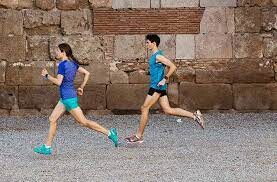
You should be doing some cross-training anyway, but if you’re not, adding some non-running workouts to your schedule is a great idea. Cross-training will not only help you stay fit while relieving your body of some of the physical stress caused by running, but it is also a great way to break out of the monotony of your everyday training schedule. Hop on the bike, go to the pool, try out a rowing machine at the gym—whatever you choose, it will be a welcome break from running your same old routes around town while still helping you improve your fitness.
3.- Get a training partner
Lots of runners work out solo, but if you find yourself lacking motivation, getting a training partner or joining a running group may be a good way to fall back in love with running. When you have a set running date with a training partner or a group, you’ll feel obligated to get out of bed and get to work. This feeling of obligation will soon turn to anticipation and excitement, as you’ll look forward to joining your friend(s) for your weekly run meetup.
4,- Set incremental goals
Setting a long-term goal is great, but they’re not the only goals you should consider for yourself. With a long-term goal, the payoff is months away, but if you set incremental goals that will help you reach that ultimate objective, you’ll give yourself regular validation throughout training. Aim to hit PBs in training, to get faster at specific workouts and to lengthen your long runs. Whatever the goals may be, they will give you something to chase in the moment every day.
5.- Update your listening library
Sometimes your lack of motivation will be due to boredom, and that might be cured by adding to your music or podcast library. You’ve already been training for months, and if you’ve been listening to the same music or shows day in and day out, you’re probably getting sick of them (even if you might not consciously realize it). Look for a new playlist, a new album or a new podcast to keep you entertained next run. It may just be the key to you getting re-energized in training.
(02/03/2023) ⚡AMPby Running Magazine
Should I increase my distance or speed?
New runners are often confused about how to set goals for speed and distance. If you are a beginning runner, you may wonder if you should improve your distance first or if you should train to get faster. The short answer: Train for distance first.
It's better for you to start by building an endurance base. That means that you increase your aerobic capacity first. You increase your mileage so that longer runs are more comfortable. As you build up your endurance, your speed will also improve.
Once you have established some strength and stamina for going the distance, you can train for distance and speed at the same time. Varying your routine by mixing distance runs with shorter, faster workouts can actually help ensure that you are getting the most out of your training and minimize your chances of injury.

Distance vs. Speed for New Runners
As a new runner, you may be tempted to get faster first. Certainly, better race times are satisfying. But if you participate in speed training before you build a strong endurance base, you put yourself at risk for injury.

Gradually building your distance as you begin your training is a good way to ensure that you are building the strength and aerobic capacity you will need to start training harder and faster. And if you want to prepare for a race such as your first 5K, it makes sense to go for distance before you start to build speed. After all, it doesn't matter much if you are fast but lack the stamina to finish the race.
When you are ready to add speed, begin with some basic speed training via high-intensity intervals. You might do 200-meter, 400-meter or longer repeats that require you to run at paces faster than your current pace.
It's important that when you do these drills your form is good and that you have the aerobic capacity to avoid injury. If you have spent time building an endurance base, then these speed drills will be more effective.
Distance Training for New Runners
To build your endurance base, follow these guidelines to make the most of your training time.
Use a Run/Walk Strategy
Don't put pressure on yourself to run the entire length of your desired distance. By doing a run/walk combination, you'll be able to cover more distance and you'll still get a great workout. And you'll build the fitness—and confidence—you need to run longer without walking.
Run at a Conversational Pace
One of the most common reasons why beginner runners stop running before they reach their goal distance: They're running too fast. When you first start running, you should be running at a conversational pace. That means that you can very easily talk in complete sentences while running. If you're gasping for air, you're definitely going too fast.
Some beginning runners are actually physically fit enough to run a certain distance, but they don't have the confidence or mental strength to push themselves farther. In many cases, it's simply "mind over matter." Try to distract yourself by playing mind games, choosing new running routes, or running with other people.
Add no more than 10% of your current distance per week. So if you are currently running five miles per week, you might add about a half-mile to your weekly run until you feel comfortable running that distance. Then add slightly more.
Speed Training for New Runners
Once you have established a solid endurance base, you can start incorporating more speedwork into your training routine. But as with adding distance, it is important to ease your body into speed training gradually.
Running is a high-impact sport. Adding distance or speed to your routine puts a lot of strain on your muscles, joints, and bones, as well as your heart and lungs. If you start tackling too much too soon, you run the risk of getting hurt, fatigued, or burned out.
How do you know when you are ready to start speeding things up? If you are a new runner, you should train consistently for four to six weeks before you start building up your speed.
After you've been running regularly for four to six weeks and have a nice base, you can start by adding strides into one of your weekly runs. You can also try picking up the pace towards the end of one of your runs. After three to four weeks of this, you can start to add tempo runs, fartlek runs, or interval workouts.
Fartleks
One of the best ways to start increasing your speed, fartleks involve running slightly faster for about two minutes before easing back to your normal pace to recover for about four minutes. Repeat these intervals several times throughout your run.
Tempo Runs
This type of run involves starting at an easy pace to warm up, then moving into a speed that is about 10 seconds slower than your race pace for the next 20 to 25 minutes of your run. The goal of this pace is to increase your anaerobic threshold, a critical component for boosting your speed.
Interval Runs
In this type of speedwork, you add short bursts of faster running with recovery intervals at an easier pace.
Mile Repeats
These are a standard for improving your run time and are easy to do. Start by running a mile at a fast pace, then slow down for a recovery period. After about a half-mile at a recovery pace, pick back up for another faster-paced mile. Always be sure to include a warm-up and cool-down before and after your run.
Adding speed work to your runs is a great way to improve your fitness, strength, and aerobic capacity. If you are new to running, it is essential to start by building a solid endurance base before you start working on your speed. Eventually, you can incorporate both speed and distance training, which can be a great way to make your runs more fun and rewarding.
(02/02/2023) ⚡AMPby Christine Luff
Kenyan Charles Lokir said he is now preparing for the World Championships in Budapest
Fresh from winning his maiden national cross country championships title, Charles Lokir said he is now preparing for the World Championships in Budapest, Hungary.
Lokir said he plans to use this weekend's Sirikwa Classic World Athletics Cross Country Tour at the Lobo Village in Kapseret, Uasin Gishu County.

Lokir, who also won the North Rift Athletics Kenya region title during the regional championships in Maralal, Samburu County said: "I want to register better results this year."
"I know it will be a very competitive race but I have been training well for the race. I was fifth during last year's edition and I want to improve on this by finishing in the podium places."

Speaking during Sunday's Discovery Kenya Cross Country Championships at the Eldoret Sports Club, Lokir said winning the national title was a good thing but he cannot celebrate for long.
Instead, he said this will only serve as inspiration to train harder.
“Winning the national cross country for the first time was a motivation for me and my career. This means I will have to work harder to remain at the top and i am certain this is possible," he added.
Lokir said his mission is to represent the country at the World Championships in Budapest to atone for his failures at the 2019 World Cross Country in Aarhus, Denmark, where he finished a disappointing 15th.
“I ran very well at the national trials, finishing third, but I could only manage a 15th-place finish in Denmark. It was disappointed but that in the nature of competition,” said Lokir, who was accompanied by his coach Daniel Ng’eitch..
He observed that Sirikwa Classic will test him accordingly as he targets a slot in the Team Kenya 10, 000m category.
“I want to compete in 10,00m at the world championships in Budapest. It has been a while since Kenya won gold in this race and I want to try my luck,” he concluded.
(02/02/2023) ⚡AMPby Emmanuel Sabuni
World Athletics Championships Budapest 23
From August 19-27, 2023, Budapest will host the world's third largest sporting event, the World Athletics Championships. It is the largest sporting event in the history of Hungary, attended by athletes from more than 200 countries, whose news will reach more than one billion people. Athletics is the foundation of all sports. It represents strength, speed, dexterity and endurance, the...
more...Defending champion Kipruto to take on Bekele, Kamworor, Farah, Tola and Kiptum at London Marathon
The 2023 TCS London Marathon elite men’s field will be a landmark occasion when, for the first time in history, two men who have run inside 2:02 will be together on the same start line at the World Athletics Platinum Label road race on 23 April.
Ethiopia’s Kenenisa Bekele, the second-fastest man ever with a PB of 2:01:41, and Kenya’s Kelvin Kiptum, the winner of the 2022 Valencia Marathon and the fastest marathon debutant in history (2:01:53) have both been confirmed for the race.
With Ethiopian duo Birhanu Legese (2:02:48) and Mosinet Geremew (2:02:55) also in the field, it means this year’s London Marathon will have four of the five fastest men in marathon history on the start line.

In addition, the defending champion Amos Kipruto of Kenya and world champion Tamirat Tola of Ethiopia will also return to London, along with multiple world and Olympic champion Mo Farah and two-time New York Marathon winner Geoffrey Kamworor.
Kipruto’s win at last year’s London Marathon was the biggest victory of his career and his first Abbott World Marathon Major triumph. “Winning last year’s TCS London Marathon was an incredible experience for me,” said the 30-year-old, who was second at last year’s Tokyo Marathon behind world record-holder Eliud Kipchoge and third in the 2019 World Championships. “I am now preparing hard for this year’s race and I can’t wait to return to London as the champion.

“London always has a really strong field and this year is the same so I know I will face a battle to defend my title, but I’m confident and looking forward to it.”
Tola, who won the world title in Oregon last year, will be one of several men aiming to prevent Kipruto from winning back-to-back titles. Tola, 31, is in a fine run of form over the 26.2-mile distance, winning the 2021 Amsterdam Marathon and finishing third at the 2022 Tokyo Marathon (behind Kipchoge and Kipruto) before winning his world title last summer.
Also in the field is last year’s runner-up Leul Gebresilase of Ethiopia, and the second-placed finisher in London in both 2020 and 2021 Vincent Kipchumba.
The new holder of the Oceanian marathon record Brett Robinson, who ran 2:07:31 in Fukuoka last year, returns to London after finishing eighth in 2022. Japan’s 2018 Boston Marathon champion Yuki Kawauchi is making his London Marathon debut in what will be his 114th marathon. By finishing in London, Kawauchi will be eligible for his Abbott World Marathon Majors six star medal for finishing all six major marathons: London, Tokyo, Boston, Berlin, Chicago and New York.
The elite women’s field will be announced tomorrow.
Elite men’s field
Kenenisa Bekele (ETH) 2:01:41
Kelvin Kiptum (KEN) 2:01:53
Birhanu Legese (ETH) 2:02:48
Mosinet Geremew (ETH) 2:02:55
Amos Kipruto (KEN) 2:03:13
Tamirat Tola (ETH) 2:03:39
Kinde Atanaw (ETH) 2:03:51
Leul Gebresilase (ETH) 2:04:02
Vincent Kipchumba (KEN) 2:04:28
Seifu Tura (ETH) 2:04:29
Mo Farah (GBR) 2:05:11
Geoffrey Kamworor (KEN) 2:05:23
Yuki Kawauchi (JPN) 2:07:27
Brett Robinson (AUS) 2:07:31
Dewi Griffiths (GBR) 2:09:49
Rory Linkletter (CAN) 2:10:24
Chris Thompson (GBR) 2:10:52
Tom Gröschel (GER) 2:11:03
Ben Connor (GBR) 2:11:20
Joshua Griffiths (GBR) 2:11:28
Frank Lara (USA) 2:11:32
Luke Caldwell (GBR) 2:11:33
Weynay Ghebresilasie (GBR) 2:11:57
Emile Cairess (GBR) debut.
(02/02/2023) ⚡AMPby World Athletics
TCS London Marathon
The London Marathon was first run on March 29, 1981 and has been held in the spring of every year since 2010. It is sponsored by Virgin Money and was founded by the former Olympic champion and journalist Chris Brasher and Welsh athlete John Disley. It is organized by Hugh Brasher (son of Chris) as Race Director and Nick Bitel...
more...Yalemzerf Yehualaw, Brigid Kosgei headline stellar women's London Marathon field
Ethiopia's Yalemzerf Yehualaw will defend her London Marathon title in April, with world record holder Brigid Kosgei and Olympic champion Peres Jepchirchir of Kenya also set to run, organisers said on Thursday.
Reigning Olympic 10,000m and 5,000m champion Sifan Hassan of the Netherlands will make her marathon debut at the age of 30, with 1,500m world record holder Genzebe Dibaba, 2016 Olympic 10,000m champion Almaz Ayana and Berlin Marathon champion Tigist Assefa also taking part.
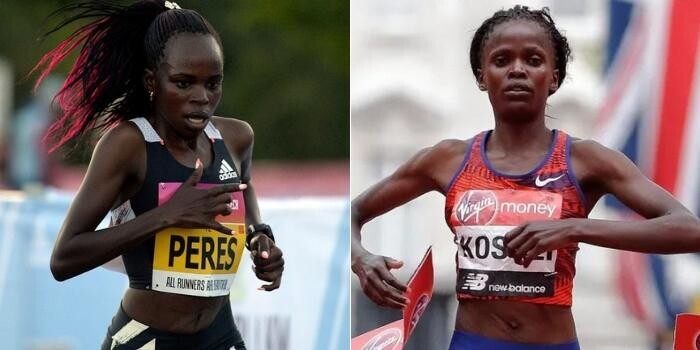
Home hopes will be carried by Britain's Eilish McColgan, the Commonwealth Games 10,000m champion, who will also be making her marathon debut.
"My victory at last year's TCS London Marathon was a day I will never forget. I can't wait to go back to London and be part of this amazing team," world 10km record holder Yehualaw said.

Hassan said she was considering both track and marathon options ahead of next year's Olympic Games in Paris.
"I need to test myself over the marathon distance... I'm really excited to be making my marathon debut. It will be a step into the unknown in many ways for me but I'm looking forward to it," she added.
Race director Hugh Brasher is delighted with the strength of the field.
"This is quite simply the greatest women's field ever assembled for a marathon – arguably the greatest field ever assembled for a women's distance race," he said.
"We have two reigning Olympic champions, three world record holders and multiple national record holders, in addition to an incredibly strong British contingent led by Eilish McColgan."
(02/02/2023) ⚡AMPby Reuters
TCS London Marathon
The London Marathon was first run on March 29, 1981 and has been held in the spring of every year since 2010. It is sponsored by Virgin Money and was founded by the former Olympic champion and journalist Chris Brasher and Welsh athlete John Disley. It is organized by Hugh Brasher (son of Chris) as Race Director and Nick Bitel...
more...Two-time Olympian Natoya Goule set to compete at Millrose Games
Two-time Olympian Natoya Goule has joined the list of athletes down to compete at the Millrose Games set to take place in three weeks time on February 11 at the Nike Track & Field Center at the Armory in New York.

The national 800 meters record holder Goule will join several Olympians and national champions at the meet including world and Olympic 800 meters champion Athing Mu of the USA to contest the women’s 600 meters event.

World Championships semi-finalist Ackeem Blake is also listed to compete at the World Athletics Indoor Tour gold meet where he will compete against Christian Coleman, Noah Lyles, and Ronnie Baker, three of the best sprinters in the world, ……………….in the men’s 60 meters dash
Olympic sprint relay gold medalist Briana Williams will line up against the U.S. Olympic bronze medalist and sprint sensation Gabby Thomas in the women’s 60 meters and Olympic finalist Christopher Taylor will take on 800 meters World Champion Donavan Brazier in the men’s 400 meters.
(02/01/2023) ⚡AMPby Dwight Fraser
NYRR Millrose Games
The NYRR Millrose Games,which began in 1908 as a small event sponsored by a local track club, has grown to become the most prestigious indoor track and field event in the United States. The NYRR Millrose Games meet is held in Manhattan’s Washington Heights at the New Balance Track & Field Center at the Armony, which boasts a state-of-the-art six-lane,...
more...Seven albums perfect for long-run listening
Every now and then, your go-to running playlists can get a little old. Fortunately, there are thousands of new songs and musicians out there, all just waiting for you to discover them. While there are many new playlists you could create specifically for your next run, there are also plenty of albums that are pretty much perfect for working out. Canadian Running spoke to runners to find out what their go-to albums are for their long runs, and while each collection is sure to have a few slower-paced songs, most are fast and energizing. There are many albums to choose from, but here are seven to get you started.
1.- Absolution by Muse (2003)
What better way to get into a run than some fast-paced rock music? Absolution will immediately fire you into the zone and your run will fly by, thanks to the album’s fun and enjoyable lineup of songs. There are 15 songs in total, adding up to 57 minutes, making this album perfect for a Sunday long run.

2.- Beyoncé by Beyoncé (2013)
Thanks to this album, Beyoncé earned herself five Grammy Awards, including Album of the Year. Anyone familiar with Beyoncé and her music will know that she never fails to create entertaining albums, and her album Beyoncé is no exception. At 14 songs spanning an hour and seven minutes, this album is another great way to not only get you pumped up for your run, but to keep you excited and energized right through to the end.

3.- Recovery by Eminem (2010)
Like Beyoncé, Eminem‘s 2010 album Recovery was nominated at the Grammys for Album of the Year, and it won Best Rap Album. Eminem is well known for being one of the fastest rappers on the planet, which is great for anyone looking to keep a quick cadence on a run. The album is 78 minutes long with 17 songs, but it will fly by, and before you know it, your run will be done.
4.- Currents by Tame Impala (2015)
Switching genres, Tame Impala’s 2015 album Currents is another great one to add to your running music library. Currents was nominated for Best Alternative Music Album at the Grammys, and its 13 songs are clocked at a total of just over 50 minutes, making it a great option for anyone eyeing sub-one-hour workouts.
5.- YSIV by Logic (2018)
Like Eminem, pretty much anything Logic publishes is sure to be fast-paced. YSIV came out in 2018, and it’s another great option for any runners who like rap and are looking for a quick cadence. The album is 76 minutes long at 14 tracks, but once again, it won’t feel like that long by the time you’re through.
6.- Songs in the Key of Life by Stevie Wonder (1976)
Throwing it back to the 70s, Stevie Wonder gives us our longest album on the list with Songs in the Key of Life. If you’ve never heard of Wonder or his music, you’re missing out, and this album is a great way to introduce you to him. The album is a great option for anyone doing half-marathon or marathon training, as its 21 songs add up to a whopping one hour and 45 minutes. Wonder’s music will never fail to get you jazzed up and rearing to run.
7.- Future Nostalgia by Dua Lipa (2020)
Finally, we have yet another Grammy-nominated album with Dua Lipa‘s 2020 hit collection Future Nostalgia. This was nominated for Album of the Year, and it won Best Pop Vocal Album. At 43 minutes, Dua Lipa’s 13 songs add up to the perfect length for anyone looking to run longer than a 5K but still under an hour, and her constantly high energy is contagious.
(02/01/2023) ⚡AMPby Ben Snider-McGrath
11-year-old runner breaks two world age group records in three days
Last weekend, Sophie Hall, an 11-year-old runner and swimmer from Melbourne, Australia, made local headlines as she set not one, but two world age group records in three days.
On Jan. 24, Hall ran a personal best time of 4:28.19 over 1,500m at the Victorian Milers Club meet, then she followed it up with a 3,000m in 9:38.16 at the U14 Victoria Track and Field Championships in Geelong. Both Hall’s times have shattered the previous 11-year-old age group records held by fellow Aussie runner Imogen Stewart.
In the 3,000m, Hall ran against girls three years older than herself and still managed to beat them by over a minute.

Hall is a youth athlete training with one of Australia’s most successful track clubs, Box Hill Athletics Club in Melbourne. The club has produced many national team athletes and Olympians in the last 20 years.
Running isn’t all Hall does; she is also a talented swimmer. Earlier this month, she won a silver medal at her state’s swimming championships in the 50-metre freestyle, and won another swimming medal one week later.

Last year, Hall hit a growth spurt, which has helped improve her times by nearly 40 seconds over 1,500m and by a minute for 3,000m. In the 2022 XC season, she also went undefeated, winning at the regional, state and national levels for her age group.
Most experts advise against heavy training for youth athletes if they are still developing. But in Hall’s case, it seems she has a lot of natural talent, a love for the sport and isn’t overtraining.
(02/01/2023) ⚡AMPby Marley Dickinson
Kenenisa Bekele leads list of all-stars in London
Four of the five fastest marathon men in history go head-to-head in mouth-watering race in London on April 23.
The TCS London Marathon has pulled out all the stops to put together one of the greatest men’s line-ups of all time. When it comes to the best marathon runners on the planet, only Eliud Kipchoge, is missing.

Kipchoge is racing in Boston instead but he would have his work cut out if he had chosen to race in London as the field includes:
» Kenenisa Bekele – No.2 on the all-time rankings with 2:01:41, former world 5000m and 10,000m record-holder and multiple winner of Olympic and world titles on the track and country.
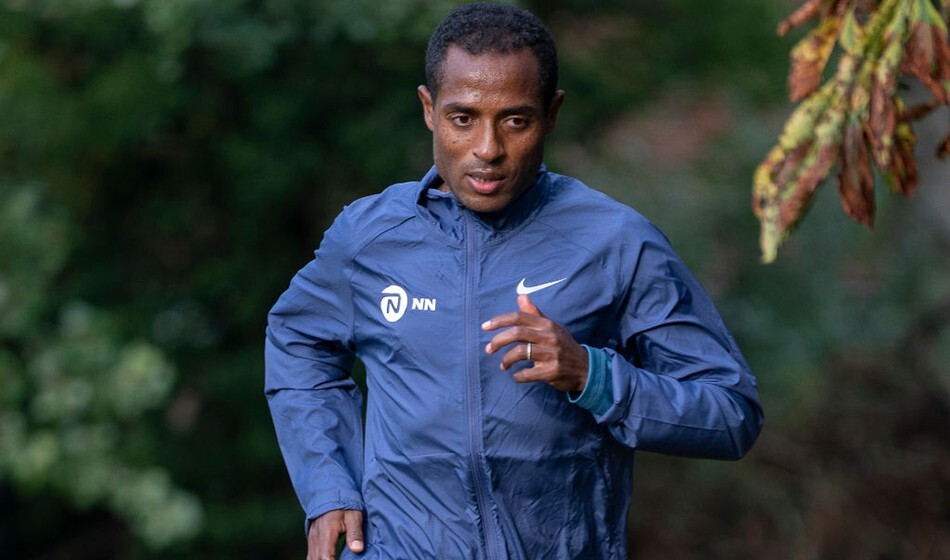
» Kelvin Kiptum – the fastest debutant in history with a best of 2:01:53 from Valencia in December.
» Amos Kipruto – defending London Marathon winner from last October.
» Tamirat Tola – reigning world champion from Eugene last summer.
» Mo Farah – British record-holder and 10-time global track champion.
In addition to this the field boasts Ethiopians Birhanu Legese and Mosinet Geremew, who have both run 2:02 marathons, plus last year’s London runner-up Leul Gebresilase, the 2020 and 2021 runner-up Vincent Kipchumba and two-time New York City Marathon winner Geoffrey Kamworor.
Kipruto, the Kenyan who won last October, said: “I am now preparing hard for this year’s race and I can’t wait to return to London as the champion.
“London always has a really strong field and this year is the same so I know I will face a battle to defend my title, but I’m confident and looking forward to it.”
Brett Robinson, the Australian who ran an Oceania record of 2:07:31 in Fukuoka late last year, will hope to improve on his eighth place from London last October. Sean Tobin, who earned headlines recently for his Antarctic marathon exploits, makes his road marathon debut in London.
Yuki Kawauchi, the Japanese runner who prevailed in terrible weather to win the 2018 Boston Marathon, is also in the line-up.
TCS London Marathon – elite men’s field
Amos Kipruto (KEN, PB 2:03:13)
Kenenisa Bekele (ETH, 2:01:41)
Kelvin Kiptum (KEN, 2:01:53)
Birhanu Legese (ETH, 2:02:48)
Mosinet Geremew (ETH, 2:02:55)
Tamirat Tola (ETH, 2:03:39)
Kinde Atanaw (ETH, 2:03:51)
Leul Gebresilase (ETH, 2:04:02)
Vincent Kipchumba (KEN, 2:04:28)
Seifu Tura (ETH, 2:04:29)
Sir Mo Farah (GBR, 2:05:11)
Geoffrey Kamworor (KEN, 2:05:23)
Yuki Kawauchi (JPN, 2:07:27)
Brett Robinson (AUS, 2:07:31)
Dewi Griffiths (GBR, 2:09:49)
Rory Linkletter (CAN, 2:10:24)
Chris Thompson (GBR, 2:10:52)
Tom Gröschel (GER, 2:11:03)
Ben Connor (GBR, 2:11:20)
Joshua Griffiths (GBR, 2:11:28)
Frank Lara (USA, 2:11:32)
Luke Caldwell (GBR, 2:11:33)
Weynay Ghebresilasie (GBR, 2:11:57)
Phil Sesemann (GBR, 2:12:10)
Charlie Hulson (GBR, 2:13:34)
Andrew Heyes (GBR, 2:13:52)
Adam Craig (GBR, 2:13:58)
Alex Monroe (USA, 2:14:15)
Ross Braden (GBR, 2:14:32)
Nick Earl (GBR, 2:14:38)
Nigel Martin (GBR, 2:15:19)
Ronnie Richmond (GBR, 2:16:59)
Nicholas Bowker (GBR, 2:17:35)
Alex Milne (GBR, 2:17:40)
Josh Lunn (GBR, 2:17:59)
Fraser Stewart (GBR, 2:18:40)
Matthew Dickinson (GBR, 2:19:23)
Emile Cairess (GBR, Debut)
Sean Tobin (IRL, Debut)
Ryan Forsyth (IRL, Debut)
The men’s and women’s wheelchair fields will be announced on Wednesday afternoon (Feb 1) while the elite women’s field will be announced on Thursday (Feb 2).
(02/01/2023) ⚡AMPby Jason Henderson
TCS London Marathon
The London Marathon was first run on March 29, 1981 and has been held in the spring of every year since 2010. It is sponsored by Virgin Money and was founded by the former Olympic champion and journalist Chris Brasher and Welsh athlete John Disley. It is organized by Hugh Brasher (son of Chris) as Race Director and Nick Bitel...
more...Eilish McColgan makes the London Marathon a priority
Eilish McColgan believes her athletics future lies in marathon operating as she prepares to make her debut within the occasion at London.
McColgan loved a ground-breaking 2022 on the monitor, profitable her first main title within the 10,000 metres on the Commonwealth Games in August.
The 31-year-old Scot additionally completed second within the 5,000m in Birmingham earlier than including 10,000m silver and 5,000m bronze medals on the European Championships a couple of weeks later.
But McColgan is now very a lot targeted on the marathon and says she may even compete within the occasion on the 2023 World Championships in Budapest “if it goes seriously well” in London.

“I’d like to think it (my future) is the marathon,” stated McColgan as she confirmed her entry for the London race on April 23.
“My mindset is certainly that London is step one to doing extra highway racing and extra marathons.
“I don’t suppose I’ll go completely away from the monitor and I nonetheless need to be aggressive over 10,000 metres.
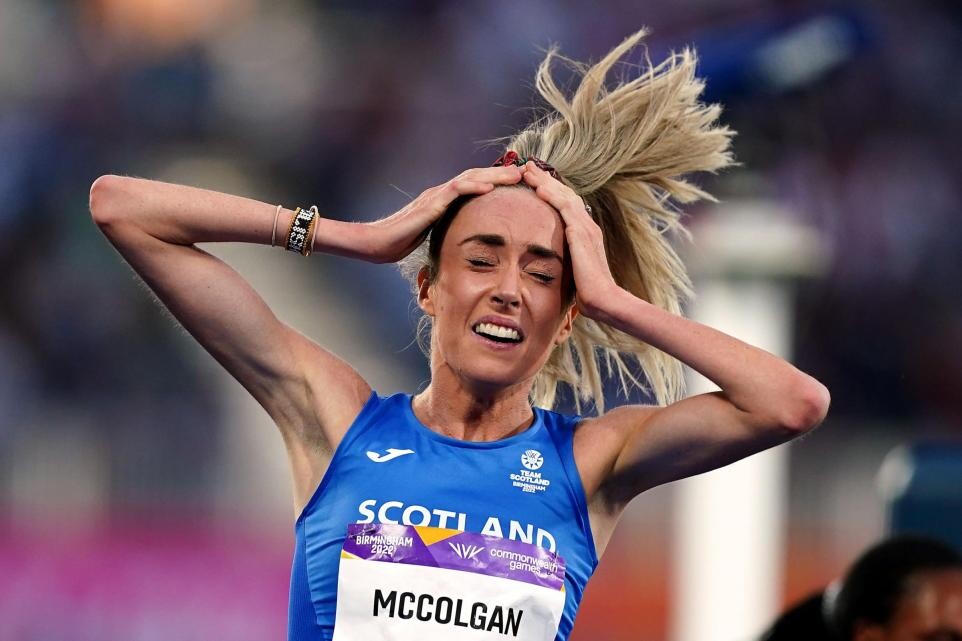
"My mindset is certainly that London is step one to doing extra highway racing and extra marathons," says Eilish McColgan.
“But the priority is definitely the marathon, although that might change if I’m no use at it.
“That’s the sort of way my mum planned it. One day we’d move up, it’s just happened maybe a couple of years later than we’d originally scheduled.”
McColgan’s mom Liz gained the girl’s elite race on the London Marathon in 1996 and it’s a race that she has a powerful affinity with.
She says when her mom was racing down The Mall she was typically “eating all the buffet food at the hospitality tents” and “watching on a tiny TV screen”.
“I just remember a buzz around the whole city and a busy place to be in,” stated McColgan.
“I’ve seen those images of my mum finishing the final 200 metres in front of Buckingham Palace. It’s an image I’ve created in my head from the pictures.
“My mum didn’t speak too much about running, but that was something she spoke about.
“It’s such an iconic race, even people who haven’t got an interest in running know about the London Marathon. It’s definitely a bucket-list race for me.”
McColgan had deliberate to run the 2022 London Marathon final October earlier than being pressured to withdraw as a consequence of a medical difficulty.
The downside was recognized as rebound hypoglycemia, a typical incidence amongst endurance athletes which results in lowered blood sugar ranges and never sufficient glucose within the blood to satisfy the physique’s wants.
But thorough testing seems to have resolved the fuelling difficulty, with McColgan saying she has already felt the advantages of a brand new carbohydrate drink.
“They said there were a few things different to what they’ve seen in other athletes,” stated McColgan, who underwent a 90-minute treadmill take a look at at Leeds Beckett University final week.
“But they think this carbohydrate drink will be the best solution going towards London, and I didn’t have the same crashes I was experiencing previously.
“I felt a lot more confident about it. When I was running I didn’t have that same low and heaviness and tiredness.
“I had a mask on and there were wires everywhere. It was really uncomfortable, so it better be worth it for the amount of discomfort you’re in for that long.”
McColgan will construct in the direction of the 2023 season at excessive altitude in Colorado Springs over the following few weeks and plans to run a half-marathon in March earlier than London.
On making a potential championship marathon debut as early as this August, she stated: “It’s really difficult to know without the hindsight of doing a marathon or recovering from one.
“I’m very wary with this being my first one, so I don’t want to definitely set my sights on the Budapest marathon.
“Realistically, it’s probably too soon. I’d be asking a lot of myself to do London and back it up with another one in close succession.
“But I’ve seen people do it before, and maybe I’ll be swayed if it goes seriously well.
“Deep down, I believe the right decision would be to do London, see how it goes, and then potentially do the 10k in Budapest before building towards another marathon.”
(01/31/2023) ⚡AMPby Mirza Shehnaz
TCS London Marathon
The London Marathon was first run on March 29, 1981 and has been held in the spring of every year since 2010. It is sponsored by Virgin Money and was founded by the former Olympic champion and journalist Chris Brasher and Welsh athlete John Disley. It is organized by Hugh Brasher (son of Chris) as Race Director and Nick Bitel...
more...National 100m record holder Maximila Imali eyes World Athletics Championships in Budapest
National 100m record holder Maximila Imali wants to become the first woman sprinter to represent Kenya at the World Championships.
Speaking at the track and field season opener at Mumias Sports Complex in Kakamega County, where she bagged the 100m title in 11.7, Imali said she is targeting to attain 11.0 seconds qualifying time.

The Kenya Police athlete has a personal best time of 11.19 secs and faces a herculean task to improve her time ahead of the World Athletics Championships set for August 19-27 in Budapest, Hungary.
During the Commonwealth Games in Birmingham, Imali who is coached by Perpetua Mbutu, finished fifth in the semi-finals.
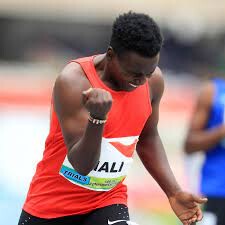
To help her achieve her dream, her manager Lee-Roy Newton has lined up pre-season training in South Africa and races in Europe to help her meet the qualifying standards.
“My problem is that I ran out of gas in the last 40m in Birmingham. However, I will work on that so that I achieve my dream of representing Kenya at the World Championships,” she said.
Coach Mbutu said they are focusing on Imali’s mental strength which she says is her weak point. “I’m very confident that by the time we go for trials, she will be mentally strong,” said Mbutu.
During the two-day AK sprints, middle distance and field events build-up in Mumias, Imali beat Monica Safenia (11.9) and Eunice Kadogo (12.1) to second and third places respectively.
World Under-20 400m silver medalist Damaris Nduleve, 17, stole the show in Mumias by clinching the women's 200 and 400m races. She also anchored her team to victory in the 4x400m relay. Nduvele leaves for specialized training in France next week.
In 200m, Nduleve finished in 24.4 seconds, beating Sharon Machoka to second place in 25.3 secs while experienced Kadogo came home third in 25.5 secs.
William Mbevi bagged the men’s 400m hurdles in 53.0 ahead of Peter Kithome (53.6) while Rono Kipkorir (55.4) came third.
Mbevi also won the 110m hurdles in 14.7 while the second place went to Kipkorir Rono in 15.0.
In the 400m, Joshua Ndombi emerged winner in 47.6 secs, beating upcoming Gilbert Nyamao (48.0) and Elkanah Chemelil (48.3) to second and third places respectively.
Moses Wasike (10.5 secs) upset Davis Kiviasi (10.6 secs) to win the hotly contested 100 race. Hesbon Ochieng finished third in 10.8 secs.
Wasike reigned supreme again, winning the 200m race in 21.7 secs and was trailed by Zablon Ekwam (22.0 secs) and Sammy Tihel (22.2 secs).
Duncan Kengere won the men’s 800m in 1:49.2. He was followed by Haron Kemei in second place in 1:49.8 while Francis Leshoo completed the podium finish in 1:50.1.
Brian Komen clinched the men's 1,500m in 3:42:1 and was followed by Mathew Kiprop (3:45.7) in second and Robert Biwott (3:46.8) third.
After the Mumias event, the action moves to Moi Stadium in Kisumu for the first AK track and field weekend meeting on February 10- 11.
(01/31/2023) ⚡AMPby Angwenyi Gichana
World Athletics Championships Budapest23
Budapest is a true capital of sports, which is one of the reasons why the World Athletics Championships Budapest 2023 is in the right place here. Here are some of the most important world athletics events and venues where we have witnessed moments of sporting history. Throughout the 125-year history of Hungarian athletics, the country and Budapest have hosted numerous...
more...Mo Farah confirms he will be on the elite start line for the TSC London Marathon in April
Britain’s most successful track athlete has confirmed he’ll be on the entry list for this year’s men’s elite race around the capital.
Sir Mo Farah, who missed last year’s event due to a hamstring injury, says he is now recovered and looking forward to racing in his hometown again.

Farah has signalled that 2023 will be the final year of his athletics career after confirming he will give the TSC London Marathon "one more shot" in April.
“It’s been an amazing career and taking part in the London Marathon is a very big deal,” he said. “I was gutted not to race last year, and I just want to give it one more shot.“It depends on my body.

I just want to get to the start line and see what I can manage. I’m just taking one race at a time.“I’m not a spring chicken anymore. You can’t keep coming back in the right shape and, for me, I’d love to be able to finish it at home.“We are getting closer to the end of my career, for sure.”
Farah has ruled out a fourth Olympics next year but hinted that with the World Athletic Championships in August, he could still be tempted to put on the GB vest one last time.“I’m not going to go to the Olympics, and I think 2023 will be my last year,” he added.
“But if it came down to it towards the end of the year and you did get picked for your country, I’d never turn that down.“But like I say, I’m just taking it one race at a time and getting ready for the London Marathon, which is a big one.”
In 2018 Farah finished third at the London Marathon, setting a new British record, which he later went on to beat again when he won the Chicago Marathon that same year in a time of 2:05:01.
This April will be his first-time racing over the marathon distance since 2019 where he came 5th in the London Marathon.Last year he raced just twice, winning The Big Half and coming second in a shock defeat to club runner Ellis Cross in the Vitality 10km.
“It’s been a little different,” he said.“Throughout my career I’ve always approached every race knowing you’ve got to do the right training. “So, it’s been a little while. But I’ll be preparing well, I’ll head out to Ethiopia and put in a lot of solid training and see what I can do when it comes to April.”
(01/31/2023) ⚡AMPTCS London Marathon
The London Marathon was first run on March 29, 1981 and has been held in the spring of every year since 2010. It is sponsored by Virgin Money and was founded by the former Olympic champion and journalist Chris Brasher and Welsh athlete John Disley. It is organized by Hugh Brasher (son of Chris) as Race Director and Nick Bitel...
more...Canadian Cam Levins to headline 2023 Tokyo Marathon
We are just over a month away from the first Abbott World Marathon Major of the calendar year, the 2023 Tokyo Marathon on March 5, and headlining the list of elites is none other than Canadian record-holder Cam Levins.
Last year, Levins had a season to remember, setting personal bests in the half-marathon and the marathon. His record-setting 2:07:09 performance came at the 2022 World Athletics Championships, where he shattered his own record by two minutes to finish fourth overall—the highest-ever finish by a Canadian male in the marathon at a major championship.
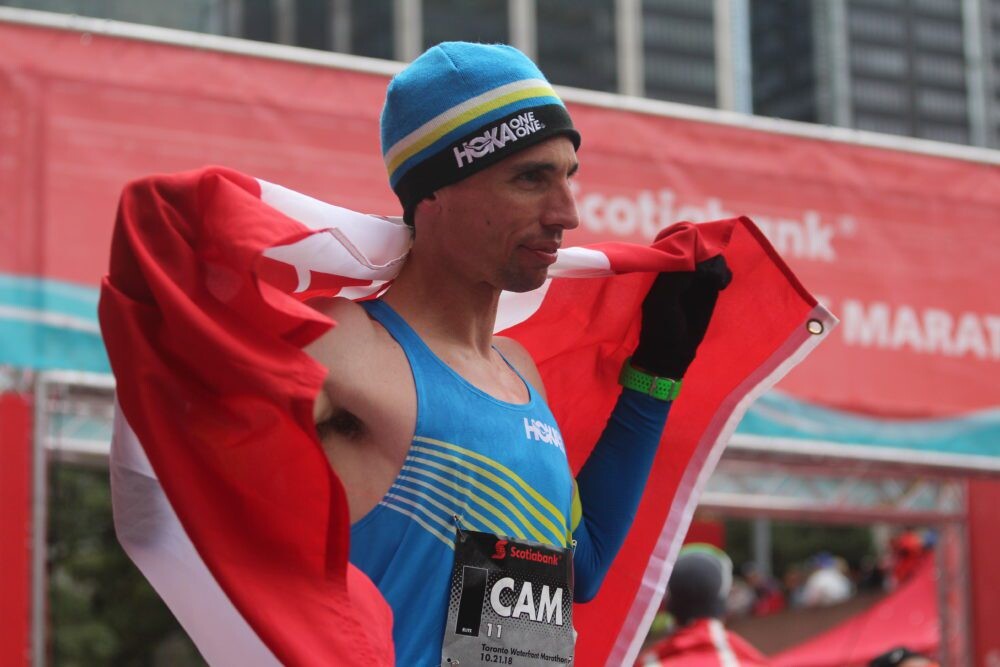
He followed that up with a half-marathon personal best at the 2022 Valencia Half Marathon, where he finished 19th in 61:04.
“I am excited to head back to Japan for another opportunity to compete in a major marathon,” Levins said on Instagram.

The last time Levins was in Japan, it was for the 2020 Olympic marathon in Sapporo, where he ended up finishing 72nd place. “The Olympics were a low point for me,” Levins said in an August 2022 interview. “I felt I was right there, but I realized I was so far behind the best in the world.”
With his time of 2:07 at Worlds, Levins ended the year as the top North American marathoner in the world, according to World Athletics.
Levins will need another magical performance to contend with some of the world’s best marathoners in Tokyo. The men’s field features nine sub-2:05 runners, including 2022 Amsterdam champion Tsegay Getachew, London 2021 champion Sisay Lemma and his former training partner and Japanese 5,000m (and formerly, the marathon) record holder, Suguru Osako.
The 2023 Tokyo Marathon is scheduled for Sunday, March 5. On Feb. 12, Levins will compete in the Vancouver First Half in the lead-up to his marathon.
(01/31/2023) ⚡AMPby Marley Dickinson
TCS New York City Marathon Launches New Brand Campaign and Logo
New York Road Runners (NYRR) has unveiled its new brand campaign and logo for the 2023 TCS New York City Marathon that takes place on November 5. The TCS New York City Marathon is one of the city’s most anticipated and iconic annual sporting events, attracting runners and spectators of all backgrounds, ages, and abilities from around the world. Last year, the marathon made its triumphant return to full capacity with nearly 50,000 runners.
“The TCS New York City Marathon is unlike any other marathon – it is the biggest, the boldest, and the most diverse,” said Rob Simmelkjaer, CEO, NYRR. “As NYRR embarks on its next chapter, the organization has created a new dynamic brand identity and campaign aimed to match the emotions and energy the marathon brings each year.”

To launch NYRR into the next generation, the organization worked with renowned brand consultancy Chermayeff & Geismar & Haviv to create a new brand identity. The new design and visual identity strengthen the logo by making it simpler and bolder. It keeps the conceptual origins but evolves and modernizes its visual aesthetic. In this updated design, the stripes of the five boroughs converge into Lady Liberty, and the colors reflect the official flag of New York.
In alignment with the brand identity, NYRR tapped creative agency YARD NYC to enhance and set the stage for its new campaign, which elevates the iconic “It Will Move You” campaign by establishing a new focus on the entirety of the marathon, not only the runners, but also the unique, interconnected roles everyone plays. By broadening the aperture of “It Will Move You,” the campaign conveys the indescribable feelings the day imprints each year, and illustrates how every action, big or small, builds a crescendo toward race day.

The new brand campaign and identity will launch in conjunction with the start of the participant journey when runners start applying for entry to the marathon.
The application for the 2023 TCS New York City Marathon entry drawing includes the following dates:
Important Dates for Runners
February 8: Application for the entry drawing opens at 12:00 p.m. ET
February 22: Application window closes at 11:59 p.m. ET
March 1: Drawing takes place and runners are notified of their status
If runners do not receive entry through the drawing, they can still obtain entry to the TCS New York City Marathon through the methods outlined at this link. For more information and to apply for the 2023 TCS New York City Marathon, visit tcsnycmarathon.org.
(01/30/2023) ⚡AMP
TCS New York City Marathon
The first New York City Marathon, organized in 1970 by Fred Lebow and Vince Chiappetta, was held entirely in Central Park. Of 127 entrants, only 55 men finished; the sole female entrant dropped out due to illness. Winners were given inexpensive wristwatches and recycled baseball and bowling trophies. The entry fee was $1 and the total event budget...
more...Run through the winter like a pro with these tips
Unlike many endurance athletes who switch to skiing in the winter months, elite ultrarunner Ellie Pell runs all winter. Her experience running through the cold, dark months has resulted in some wisdom–when it’s coldest out, Pell often fits her running in the early mornings, before sunrise.
Pell was a fan favourite at Western States last year, where she finished 14th among the women (this year she’ll be back to crew her best friend and golden ticket winner Riley Brady). From Ithaca, N.Y., Pell recently relocated to Boulder. “I also have poor circulation in my hands, which can complicate both running enjoyment and opening nutrition packets,” says Pell. Here are a few things she has found to help.

Use gloves with a wind mitt, or gloves under mittens
The friction between the fingers in the gloves increases warmth, and the wind mitt protects the heat from leaving your fingers. If it is especially cold, I put a pair of hand warmers inside the mitt to cling to, but unless you are under 10 degrees (or have Raynaud’s syndrome) the wind mitt is surprisingly good at trapping that heat.

Keep fuel close to the body (for warmth) or drink your nutrition
“There is nothing worse than a frozen gummy or cold gel when it is cold outside,” says Pell. “It also stinks when sports drink freezes in the nozzle or bottle.” Pell solves this issue by keeping her nutrition as close to her body (and heat centre) as possible. She also tries to limit the number of packets she has to open, so she doesn’t waste time struggling to open packaging with cold fingers.
Pell says she favours gummies or chews on really cold days, because she can open them pre-run. “The hardest thing in the winter is drinking cold fluid when it’s cold, she says. “I try to prepare by using warmer water in the morning when I prepare my bottles and keeping them near the heater in my car–every little bit helps.”
On icy roads, experiment with trail shoes/microspikes
“I find the winter is a great time to test out different trail shoes on the icy or snowy roads,” Pell says. “The traction on soft surfaces after a big snowstorm is a better focus for me than trying to maintain a pace.” Pell explains that a good road-to-trail pair of shoes work really well for this, and help a runner get to know the feel underfoot. Later, when things thaw, this training makes it easy to decide whether the shoes would be a good pick for a race day in the mountains.
“Having recently moved to a place that has mountains to run all year, the ice doesn’t stop our training,” she says. Pell carries a nice pair of microspikes in her pocket or pack to use if she hits icy sections.”It sounds a lot more burdensome than it is, and when your luck runs out dancing over the ice, that extra few ounces of gear is worth it,” she says.
Use the tools available for you (no shame in hitting the treadmill or track)
Even if you’re a hardcore all-season trail and mountain runner, the treadmill is worth considering on really cold days. While you’ll certainly gain mental toughness from running in the cold, Pell says sometimes an indoor run may be more beneficial if it’s nasty out, especially if you have speedwork scheduled.
“When it’s under a certain temperature (which varies for everyone), it becomes difficult for muscles and tendons to adequately warm up to assume the turnover needed for effective speedwork,” she says.”Instead of chancing a pulled muscle or tendon, if a treadmill is an option, take it!”
If indoor training is not an option, Pell says winter is a good time to focus on effort over pace.”Tuning in to how your body feels at a certain effort, rather than pace, is very useful for trail runs and races with varied terrain,” she adds.”Keep the effort honest, do your best and get ready to fly, come spring.”
(01/30/2023) ⚡AMPby Keeley Milne
Ways To Rehabilitate A Knee Without Surgery
One in four adults in the US suffers from chronic knee pain. For some, knee discomfort might be nothing more than a minor annoyance. However, for most people experiencing knee injuries, their condition can come with debilitating pain and have a profound impact on their professional life and sports performance.
In this case, knee surgery might seem inevitable. Luckily, there are other non-surgical, less invasive options to ease the pain and rehabilitate your knee. Here’s what you need to know!
Corticosteroid Injections

Knee pain – or runner’s knee – is one of the most common running injuries you should be aware of. In most cases, athletes and amateur runners will use a mix of compression, ice packs, and over-the-counter pain medications such as ibuprofen to treat their condition.
However, if these remedies are not as effective as expected, you might opt for cortisone injections. These injections can efficiently ease flare-ups, reduce pain, and treat inflammation. However, given the side effects involved (i.e.: articular cartilage damage) you should always use injections with caution and work with a specialized medical professional.

PRP Therapy
If you are looking for an efficient knee treatment without surgery, platelet-rich plasma (PRP) injections might be an option to consider. These injections use concentrated PRP, which is extracted through the centrifugation of your blood to separate the plasma from white and red blood cells. Injected into the affected area, the plasma will promote growth factors and speed up the healing process.
Stem Cell Transplantation
Thanks to advances in regenerative medicine, you now also have the option to use stem cell transplantation therapies to treat your knee pain. This treatment involves harvesting stem cells from other, healthy parts of your body. The cells are then re-injected in the affected area (i.e.: your knee area) to speed up the body’s regenerative mechanisms, reduce inflammation, and repair any tissue that might have been damaged.
Physical Therapy
According to estimations, 40% of all running injuries are related to the knee area, and as much as 22.7% of the general population suffers from what’s known as patellofemoral pain syndrome – or, more commonly, “runner’s knee”.
Although incredibly widespread, this condition affects each person differently, and the first step toward recovery should always be to work with an experienced physical therapist.
Nutraceuticals and Knee Supplements
If you are looking for a natural, non-surgical, and non-invasive option to treat your knee pain, nutraceuticals might help. These dietary or herbal knee supplements leverage the health benefits of naturally-found chemicals and substances such as glucosamine and chondroitin.
Although some athletes have reported improvements thanks to nutraceuticals, don’t forget that some of these substances might not be regulated by the FDA and have side effects.
Joint Fluid Therapy
Joint fluid therapy, or viscosupplementation – refers to a type of non-invasive treatment that uses injections of a natural gel-like fluid. This fluid aims to protect your knee by improving the quality and quantity of the joint fluid. In turn, this will cushion and lubricate the knee, thus reducing pain and discomfort during movements.
Knee Braces
Knee braces might be a valid option to temporarily reduce knee pain and alleviate the weight on the joints. Although off-loading braces can be efficient, you should always opt for custom-made alternatives rather than generic splints, which can be costly.
Lifestyle Modifications
Studies conducted in 2016 on the link between knee pain and obesity have shown that nearly 20% of those overweight are affected by knee pain, against only 3.7% of those with a healthy weight.
Modifying your lifestyle and working with a specialized nutritionist can help you alleviate the load on your knees, thus making it easier for your joints to heal damaged tissue and reduce inflammation.
The R.I.C.E. Method
The R.I.C.E. method – which stands for rest, ice, compression, and elevation – is an at-home technique that can help you rehabilitate your knee naturally if you have been suffering from pain and discomfort. This method is more effective when combined with other treatments and plenty of rest.
Work With a Knee Health Professional
A knee injury can have a devastating effect on multiple aspects of your life. Because of this, you should always start your rehabilitation journey by consulting an experienced professional. A specialist will also be able to inform you about new non-surgical therapies, such as IV therapy, electroanalgesia, and lifestyle counseling.
(01/30/2023) ⚡AMPby Colorado Runner
Kenyans take Home Life Time Miami Marathon Titles
They were nearly 8,000 miles from home in the urban center of Kisii, Kenya, but their individual pursuits for Life Time Miami Marathon titles brought them together in South Florida on Sunday. Originating from farming families in southwest Kenya, George Onyancha and Damaris Areba both secured easy victories in their inaugural appearances in Miami's signature running event.
Twenty-nine-year-old Onyancha (2:18:25) finished nearly six minutes ahead of Siraj Amda (2:24:16) of New York in the men's Marathon. Twenty-seven-year-old Areba turned in the second fastest time in Miami Marathon history (2:33:49) bettered only by fellow Kenyan Martha Akeno's course record (2:29:00) last year. Isgah Cheruto (2:36:19) of Minneapolis was second behind Areba.

Onyancha and Areba were winners of few words. "I was leading and had another runner behind me until the 25K mark," Onyancha said. "Since I didn't know what his strategy was, I thought: 'Let me take off."
Areba was more focused on the uniqueness of the course route. The U.S.TAF-certified and Boston Marathon-qualifying circuit showcased the best views of Miami's cityscape and waterways during the 26.2-mile and 13.1-mile races. "The lights on the big ships, they're so beautiful," Areba said.
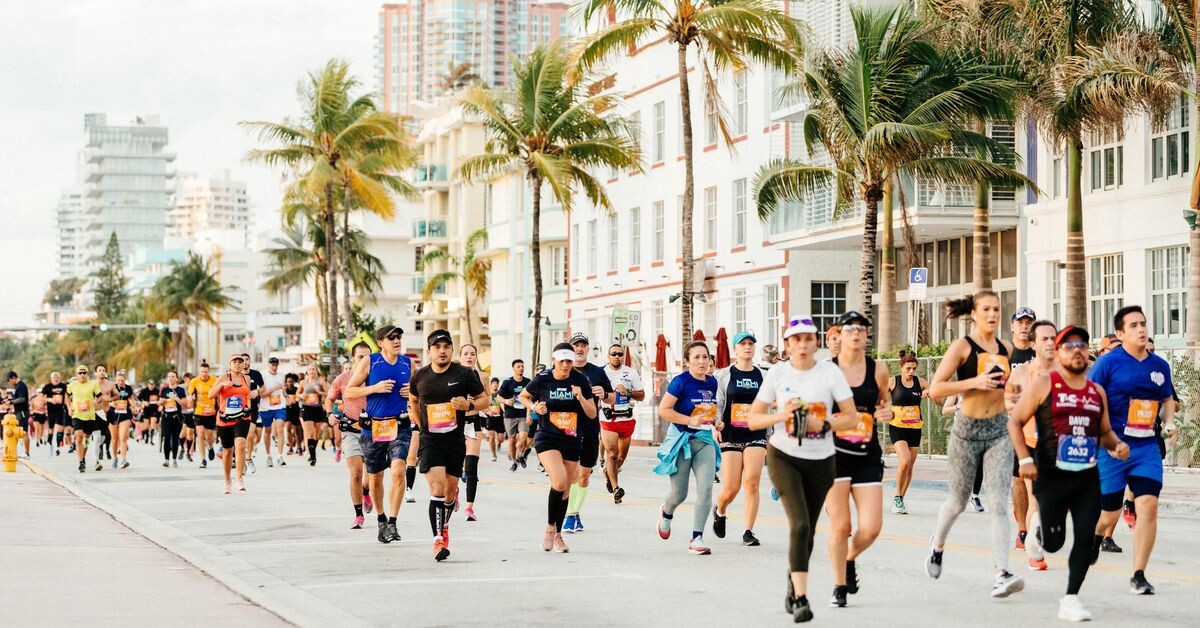
It was the 21st edition of the Life Time Miami Marathon and Half, which wound through downtown Miami, Miami Beach and Coconut Grove. The event's sold-out field of 18,000 runners came from all 50 states and 69 countries – generating upwards of $50 million in economic impact to the Miami community. Colombia (1,300) and Mexico (1,100) led a wave of Latino runners, while nearly 1,000 U.S.-based runners represented the state of New York.
The Marathon began in front of the downtown Miami-Dade Arena before heading to South Beach via the MacArthur Causeway and then back downtown along the Venetian Causeway. Runners then headed south through the lush Coconut Grove community before turning north through the Brickell Avenue financial district and across the finish line at Bayfront Park.
The temperature at race start was 72 degrees and eventually settled into the mid-70s. Runners were able to experience the South Florida sunrise nearly an hour into their run, and the sparkling cruise ships docked at the Port of Miami put an exclamation point on the Event's iconic views.
Onyancha races mostly in Europe and China, and Sunday's marathon was his first in the United States. Areba has been on a tear, winning four marathons in eight months. Prior to her Miami victory Sunday, Areba won titles at the Green Bay Marathon (May), the Quad Cities Marathon (September) and the Des Moines Marathon (October). In November, she was fourth at the Philadelphia Marathon.
When Nacho Hernando-Angulo (1:08:36) arrived first to the finish line of the Half Marathon, he was almost home. The 29-year-old broke the tape just 800 meters from the hi-rise where he lives in downtown Miami. "To be home with the (2023) title is awesome," said Hernando-Angulo. "This title has to stay home, in Miami."
Veteran French triathlete, Brice Daubord (1:10:11), and 24-year-old, Alberto Mena (1:10:21) of Ecuador, were nearly two minutes off Angulo's pace to secure second and third place while event-defending-champion, Cesar Lizano, was sixth (1:14:01). The 40-year-old Costa Rican was fourth in 2012, third in 2014 and fifth in 2015 before winning last year's Miami title.
A native of Madrid, Spain, Hernando-Angulo settled in Miami in 2018 following running careers at New Hampshire Technical Institute and Southern New Hampshire University. He works as a sales director for a European importer. "I moved to Miami for work, definitely not for training," he said. "It's very tough to be an elite runner here. So we do what we can."
Ethiopia's Weynshet Ansa Weldestadisk (1:14:55) won her second career half-marathon Sunday, ahead of Ukraine's Valentyna Veretska (1:18:41) and defending champion, Lisa Brooking (1:18:50) of Canada. "It was a good course, but very windy and hot," said Weldestaisk. "The city is so beautiful. I wish I could live here. Everybody was telling me 'good job.' It gave me power."
The tall and slender Weldestadisk has been based in Washington DC for the last four months while competing in a series of U.S. races. The 26-year-old smashed the course record at the Extra Long Bronx (NY) 10-Mile Race last September and won both the Philadelphia Marathon and the Virginia 10 Miler in November.
Veretska, the women's half-marathon runner-up, continued her good results since fleeing Ukraine last year and winning the Jerusalem Marathon a month later in borrowed shoes and gear. The 32-year-old ran her first race in the U.S. in November, finishing third at the Princeton Marathon.
Onyancha and Areba each received $4,500 for their first-place finishes. Onyancha will use the funds to pay for two of his brothers' tuition payments while Areba will donate a portion to Kenyan youth developmental running programs and use the remainder to buy land to build a house. She and her husband are currently living in a rental unit. "I loved the city and the palm trees," Onyancha said about his first experience in Miami. "They look like umbrellas."
More information about the Life Time Miami Marathon may be found at www.themiamimarathon.com and on social media at Facebook.com/RunMiami, Instagram.com/TheMiamiMarathon, and Twitter.com/RunMiami. The Life Time Miami Marathon And Half operates with the tremendous support of the Miami Beach Visitor and Convention Authority.
The Miami Marathon And Half is owned and produced by Life Time, the premier healthy lifestyle brand. It is among more than 30 premier athletic events owned by the Company, including the Chicago Spring Half Marathon, Garmin UNBOUND Gravel, and Leadville Race Series. For more information about Life Time (NYSE: LTH), visit www.lifetime.life. More information about Life Time athletic events is available at lifetime.life/athletic-events.
(01/30/2023) ⚡AMPThe Miami Marathon
Over the past 16 years of the existence of the current Miami Marathon, there was only just over 90 athletes who had run every single event. Before the inception of the Miami Marathon as we know it now (est. 2003), the race was originally known as the Orange Bowl Marathon which began in the late 1970s. One of our very...
more...Hailu wins Osaka Women's Marathon
Ethiopia’s Haven Hailu returned to winning ways to triumph at the Osaka Women’s Marathon, this year’s first World Athletics Platinum Label road race, on Sunday (29).
The 24-year-old led an Ethiopian top two, clocking 2:21:13 to win by almost a minute ahead of Meseret Gola (2:22:12). Japan’s Yuka Ando finished third in 2:22:59.

The event, which started at the Nagai Stadium practice track, immediately turned into a race of attrition. At 1km the lead pack featured Hailu, Gola and Kenya’s Maurine Chepkemoi together with Japan’s Ando, Sayaka Sato, Mao Uesugi and Reia Iwade behind the three pacemakers.
Sato clashed with Iwade and fell after 7km, immediately losing ground on the lead group. She would eventually drop out at 18km, when her coach came out to the course to stop her.
The leaders reached 10km in 32:56 and Iwade lost touch with the pack a short while later.
Uesugi started to drift back at 19km, the chase group eventually catching her and they ran together for the rest of the race.
The second of the pacemakers dropped out at 20km, reached in 1:06:00, and at this stage it was Chepkemoi who was struggling to keep pace.
By the half way point, passed by the leaders in 1:09:45, Chepkemoi was 10 seconds behind and she dropped out after 25km.
Hailu, Gola and Ando forged on when the last pacemaker left the race at 30km, reached in 1:39:34. It was at this point that Hailu made her move, covering the next kilometre in 3:05. Gola was able to stay with Hailu, but Ando fell behind.
Gola couldn’t stick with that pace for long, though, and by 35km Hailu had built a 13-second lead.
She only increased the gap and eventually won by 59 seconds, Gola holding on to second place and Ando finishing third, feeling frustrated as she failed to improve her 2:21:36 PB from Nagoya in 2017.
Hailu, who was unable to finish her last marathon in Chicago in October, adds this latest win to her victory in Rotterdam last April.
Behind the top trio, the chase group had reduced to Uesugi, debutante Yumi Yoshikawa and Sairi Maeda with 5km to go. Uesugi had the strongest finish and held off Yoshikawa by two seconds, 2:25:18 to 2:25:20, with Maeda finishing a further four seconds back in her first marathon since 2019 and following maternity leave.
The race was an opportunity for Japan’s leading contenders to qualify for the Marathon Grand Championship – Japan’s Olympic trial race – in October. Ando and Uesugi had already qualified, and Yoshikawa, Maeda, Chiharu Ikeda and Yuna Daito joined them in achieving the feat in Osaka, Ikeda finishing the race in seventh place in 2:25:59 and Daito running 2:26:09 to place eighth.
(01/29/2023) ⚡AMPby Ken Nakamura World Athletics
Osaka International Womens Marathon
The Osaka International Ladies Marathon is an annual marathon road race for women over the classic distance of 42.195 kilometres which is held on the 4th or 5th Sunday of January in the city of Osaka, Japan, and hosted by Japan Association of Athletics Federations, Kansai Telecasting Corporation, the Sankei Shimbun, Sankei Sports, Radio Osaka and Osaka City. The first...
more...You Can Earn $1,250 If You Break This Time at the Hong Kong Marathon
However, the prize-earning time standards make it easier for male runners to earn cash than female runners.
Turns out, you don’t have to be a professional athlete to earn money from running. The Hong Kong Marathon on February 12 is giving out 10,000 Hong Kong dollars (about $1,277 USD) to every male finisher under 3:00 and every female finisher under 3:30 who are permanent residents of Hong Kong.

“We estimate there may be around 300 to 350 runners that can reach the standard,” Simon Yeung Sai Mo, senior vice-chairman of the Hong Kong Association of Athletics Affiliates, told South China Morning Post. That means the Hong Kong Marathon is prepared to give out nearly $400,000 in prizes to non-professional athletes.
In a email to Runner’s World, the Hong Kong Marathon shared the following statement:“The increase in prize money is a ‘one-off’ special award this year to celebrate the 25th edition of the Standard Chartered Hong Kong Marathon. Participants in the Marathon Challenge Category, who are also permanent residents of Hong Kong, finishing marathon under 3 hours (sub 3) for men and under 3 hours 30 minutes for women (sub 3:30) will be awarded with the Special Incentive Award HKD10,000, which is 10 times the amount of the same awards in previous marathons.”
According to numbers crunched by South China Morning Post, 147 participants finished below 3:00 in the men’s race in 2018. In the women’s race that year, there were only 52 runners that finished below 3:30.
The women’s time standard is more challenging than the men’s. According to World Athletics scoring tables, a 3:00 marathon by a male runner is equivalent to a 3:50:18 marathon by a female runner. The Hong Kong Marathon prize-earning standard for women is 3:30, so female runners have a harder challenge by 20 minutes—that comes out to 46 seconds per mile.
In the statement to Runner’s World, the Hong Kong Marathon clarified the reasoning for the standards: “Based on previous records, the men to women [participation] ratio is approximately 8:2.”
On the professional side, the Hong Kong Marathon offers $30,000 to the individual winners in the men’s and women’s races. Professional men who finish faster than 2:10 and women who finisher faster than 2:28 earn an additional $10,000. The course record bonus is $12,000; the men’s record stands at 2:09:20, the women’s at 2:26:13.
The Hong Kong Marathon first occurred in 1997. It has been run every year since, with the exception of 2020 and 2022 due to the coronavirus pandemic. Therefore, this year’s race is the 25th edition.
(01/29/2023) ⚡AMPby Runner’s World
After Mosquito Fire and Heavy Rains, Western States Trail Requires Serious Work
California's largest fire of 2022 never quite grew to a tenth of the size of 2021's nearby Dixie fire, but that isn't to say it did not have an oversized impact.
Over 46 days spanning a portion of September and October, the Mosquito Fire burned more than 76,000 acres of forest from the town of Foresthill up to the edge of the Sierra Crest near Olympic Valley, costing state and federal fire agencies $181 million in firefighting salaries and resources. Beyond the monetary cost of the fire, far greater impacts were felt in the surrounding communities, including the loss of 78 structures and residual effects to livelihoods. The U.S. Forest Service (USFS) has focused a lot of its efforts on recreational infrastructure because of its economic importance in the area. The USFS has since performed an internal study to quantify the impacts of the wildfire, and related these findings to local stakeholders including residents and businesses.


Existing within the boundaries of the Mosquito Fire is the Western States Trail, specifically, the 12.4 miles between Last Chance and Michigan Bluff, often known as the "canyons" of the Western States 100 course-one of the most well-known sections of the course. This relatively short section of trail ascends 5,226 feet and descends 6,406 feet, cresting at Devil's Thumb, traversing over 36 switchbacks, and passing Deadwood Cemetery that hosts the remains of the miners and Chinese laborers who built this trail, once among a litany of trails developed by the Washoe people that lived on this land, in the late 1850s.
Thankfully, for those chasing a golden ticket entry or already accepted into this year's race, the staff at Western States has been communicating with the USFS since the beginning of the blaze and have been "working full-time on getting the trail open ever since," said Craig Thornley, Western States race director. Thornley says an agreement has been reached between the race and the USFS, to leverage private funds in order to repair the trail and open in time for the late June race. This is anything but the normal or anticipated result, Thornley said.
"Both races I direct, the Waldo 100K and Western States, were impacted by wildfire in 2022, and that was in a relatively light fire year," he says. "What most race directors appear to do is take the approach of waiting for land managers to tell them when the trail can be used again. In this case we were front and center, asking: 'what do we need to do to get this open?' If we hadn't, it could be several years until the race would be feasible."
This work had, up until the December holiday break, included a number of volunteer days aimed at adding water bars and other trail fortifications to reduce erosion impacts from typical winter rains. These volunteer days were made feasible, in large part, thanks to the quick action of the USFS Burned Area Emergency Response (BAER) teams, which typically address wildfire areas to fell hazard trees and create plans for restoration work.
Wildfire had impacted this trail in the past, most notably during the American Fire of 2013, lending the Western States team experience as to how to ensure the event would go forward. Also, the 2008 Western States 100 was canceled because of poor air quality, due to numerous wildfires in the area.
Based on the efforts made last fall, Thornley believed the trail would re-open in plenty of time for the race this June. But that confidence was shaken at the end of December, when a number of atmospheric rivers crossed the Pacific Ocean and dumped heavy precipitation in California.
On the evening of January 5, 2023, a forest order was issued by the Tahoe National Forest, noting extreme damage to the burned sections of both Western States Trail and Mosquito Ridge Road, a key artery to access aid stations in this stretch. Due to the damage, the USFS issued an access closure until December 31, 2023, which would threaten the possibility of this year's race happening. In most cases, this closure would last until the USFS accrued funding and fully repaired the trail and road, which typically takes two to four years, with orders being renewed each calendar year, depending on the forest region budget.
A New Approach
The Western States team is confident that the order will be reversed once trail maintenance is completed. However, due to USFS budgetary constraints, this trail maintenance will be funded by private donors through the Western States nonprofit structure, on the behalf of the government, a strong partnership and plan between event promoters and land managers.
While it is impressive that the Western States staff has been able to, in all likelihood, stave off race cancellation or delay, there is a larger question to ask: what do individuals, race promoters, and sponsoring brands do under the face of rising hazards in the present and future?
In California, the Santa Ana winds have driven wildfires followed by rain events for centuries, but climate modelers warn that the number and severity of wildfires of the past several years, as well as the frequency of high-severity extreme precipitation events, highlight a worsening climate trend.
No longer is climate change and public land management solely impacting individual communities for discrete periods of time. It is also placing a serious threat to the start line of arguably the most lauded trail running event in North America. The burning of one trail, which will likely require hundreds of thousands of dollars to restore and treat for public safety, is forcing the hand of major race promoters, and the entire outdoor industry, to consider where climate change fits in their yearly budgets.
While the question as to what Western States runners should expect this year is clearly front and center, most see the writing on the wall-the industry must adapt to and address climate change. Fortunately, Western States will almost assuredly happen this year, but only because of the immense work ethic, generous donor giving, and long-term community building of the event staff.
While Western States has the funding to avert disaster this year, both Canyons Endurance Runs by UTMB and the Tevis Cup equestrian event are held in April and July, respectively, on the same trails. There is no guarantee the trail will be open and usable as early as April, or in good condition for horses by July. At the time of publication, UTMB staff were in communication with Western States and land managers to find solutions for Canyons in 2023. However, no official statement has been issued at this time.
Of course, these three races alone are not the first to be impacted by both natural disasters and a limited federal budget for trail restoration. For example, in the last decade, Santa Barbara's Nine Trails has seen the same cascading disaster chain. Such complications have also been experienced along trail systems in Flagstaff, Arizona, Glenwood Springs, Colorado, and across the Pacific Northwest.
Thornley credits the decade-long relationship building with the USFS, California State Parks, and private landowners for their ability to quickly avert closure, noting the volunteer trail work days and private fundraising the event has done in collaboration with these land managers over the years. Western States has acted as an exemplar for other events to emulate in the coming decades, under a shifting climate system. However, one must ask whether other trail running event organizers have considered the time necessary to build these relationships with land managers, and to make plans accordingly before the next natural disaster strikes. The future of the sport depends on the urgent planning and trust-building of these various stakeholders.
(01/29/2023) ⚡AMPby Trail Runner Magazine
Here's Why It Feels Like Every Elite Runner Is Changing Sponsors Right Now
Tim Tollefson celebrated the new year shoveling a lot of snow, dreaming about a summer of possibility, and changing his shoes.
After six years with Hoka, Tollefson, 37, the well-known elite American ultrarunner from Mammoth Lakes, California, signed a new multi-year sponsorship deal with Craft. It might seem like a curious move this time of the year, but, in reality, most athlete sponsorship contracts in running are one-year partnerships that end on December 31. That typically gives brands the upper hand in these situations because they can have an easy out whenever an athlete doesn't have a great year of results, or they no longer fit with their marketing goals. It always comes down to the money, though sometimes it's in the athlete's best interests to start fresh, to leverage their recent results and social media platform to find a better deal with a brand that better fits their racing goals.


Because there are more brands partnering runners than ever before, and presumably more sponsorship money available, top-tier distance runners who are still at the top of their game-like Tim Tollefson, Allie McLaughlin, Josette Norris, Paige Stoner, David Ribich, Dani Moreno, Erin Clark, Natosha Rogers, Colin Bennie, Dillon Maggard, Camille Herron, and others-have been able to seek out new opportunities to continue their careers with the necessary support.
The terms of the newly signed deals haven't been disclosed, but there is a huge range in pay for professional distance runners-roughly $15,000 on the low end for a partially sponsored trail runner without significant international results, to $300,000 at the high end for a top-tier marathoner with Marathon Majors podium results. Certainly that means some live a life of luxury, while others are forced to work part-time jobs and pinch pennies to get by.
But there are also often signing bonuses, as well as premiums paid for earning appearance fees, major victories, global medals, podium finishes, breaking records, and other incentives, so running faster can be a fast track to a boost in income. However, most athletes are considered independent contractors, and many have to pay for their own healthcare, body work, and travel, depending on the details of their brand partnership.
"You start getting an idea of who's going to be available, for one reason or other, in the last few months of the year, and that's when brands and athletes start talking," said Mike McManus, Hoka's global sports marketing director. "As an athlete, you're as valuable as whatever money anyone wants to give you, but it's a process and all about negotiating. Sometimes you can match the money being offered; sometimes it just doesn't make sense for the partnership."
What Tollefson liked about Craft was similar to what he liked about Hoka six years ago-an upstart brand ready to make an impact in trail racing, its new line of trail shoes, and the trail community overall. Craft sees Tollefson as a runner with name recognition and several significant race wins in the past three years, not to mention a leader in the sport who started the Mammoth Trail Fest last year.
"This [new partnership with Craft] has reignited my deep passion for the sport and has reminded me of the things I want to accomplish," he said. "It's almost like a start-up situation led by passionate people who are excited to make an impact and want to support the people who are along for the journey. Curiosity drives me and I like a challenge. I know I am going to have some lifetime achievements ahead."
More Big Moves in Trail and Ultra
After an extraordinary year of racing on the trails, Allie McLaughlin changed from On to Hoka as her primary sponsor. The charismatic 32-year-old from Colorado Springs won the daunting Mount Marathon race in Alaska, placed among the top five in several Golden Trail Series races, and won both gold and bronze medals in the inaugural World Mountain and Trail Running World Championships in Thailand. She'll be representing the U.S. in this year's World Championships in Austria, in June, while also returning to the OCC 54K race, as part of the Ultra-Trail du Mont-Blanc (UTMB) festival in Chamonix, in August.
"It was really interesting to see how much trail means to them [Hoka], not only with their sponsorship of UTMB, but in general how they're helping push the sport forward," said McLaughlin, who had been with On since 2021. "There are a lot of reasons I like what Hoka is doing, but ultimately, the emphasis they're putting on the team and their athletes is really exciting."
Other trail and ultrarunners who have switched brands include Erin Clark, who finished 7th at last year's CCC, who left Hoka to sign with Nike, even though her partner, Adam Peterman, the 2022 Western States 100 champion and ultrarunning world champion, re-signed with Hoka.
Spanish trail runner Sara Alonso has changed from Salomon to ASICS, while Craft also signed Arlen Glick, a prolific 100-mile specialist from Ohio, and Mimmi Kotka, a Swedish runner with numerous podium finishes in Europe, to its team. Meanwhile, previously unsponsored American trail runners Tabor Hemming (Salomon) and Dan Curts (Brooks) are among those who have signed new deals.
Meanwhile, Dani Moreno, a world-class mountain runner from Mammoth Lakes, California, and Camille Herron, a record-setting ultrarunner from Warr Acres, Oklahoma, are both also leaving Hoka for yet-to-be-announced brands that offered better deals.
Bigger Transitions for Road and Track Runners
For track athletes and marathon runners, a change of shoe brands is often a more involved change, mostly because it often means changing training groups and coaches, too.
For example, Josette Norris, the fifth-place finisher in the 1,500m at the 2022 World Athletics Indoor Championships, not only switched from Reebok to On, but she left Reebok's Virginia-based Boston Track Club, and coach Chris Fox, and moved west to Boulder, Colorado, to join the On Athletics Club under Dathan Ritzenhein.
Similarly, David Ribich, one of the best American mile runners on the track last year, switched from the Seattle-based Brooks Beasts track club to the Nike-backed Union Athletics Club under Pete Julian.
Colin Bennie, the top American finisher in the Boston Marathon in 2021-previously with Reebok but unsponsored last year-signed with the Brooks Beasts but will be training on his own in San Francisco. Dillon Maggard, who was second at the U.S. cross country championships and ninth in 3,000m at the indoor world championships in 2022, is returning to Seattle to train with the Brooks Beasts, after being unsponsored last year. Natosha Rogers, who was a finalist in the 10,000m at last summer's World Athletics Championships in Eugene, Oregon, has changed from Brooks to Puma, but will continue to train on her own in Colorado. Middle-distance runner Cruz Culpepper, after short stints at the University of Washington and the University of Mississippi, gave up his remaining college eligibility to sign with Hoka and its NAZ Elite (NAZ) team.
Last summer, Paige Stoner left the Virginia-based Reebok group and Fox, her longtime coach, to train in Flagstaff, Arizona, partially because she didn't have other marathoners to train with on a regular basis in Charlottesville. She increased her volume last fall training with Sarah Pagano and Emily Durgin and won the U.S. championship at the California International Marathon in December with a course record of 2:26:02, her debut at the distance.
In January, Stoner parlayed that into a new deal with Hoka, as she also joined the Flagstaff-based Northern Arizona Elite and will be training with a group of strong marathoners-including Aliphine Tuliamuk, Alice Wright, Kellyn Taylor, and the recently unretired Stephanie Bruce-under the guidance of coaches Alan Culpepper, Ben Rosario, and Jenna Wreiden.
"I was especially drawn to NAZ because they have proven to be a powerhouse in the marathon, which will likely be my primary focus in the years to come," Stoner said. "I believe the team has all of the tools it takes to compete at the highest level in the sport, and I am eager to begin this new chapter."
Learning the Ropes
For track and road running, the path to success for elite-level, post-collegiate athletes typically includes earning a sponsorship right after the track season in June and joining a sponsored training group and coach. From there, it's all about improving times and placing high in U.S. championship races, with hopes of becoming fast enough to earn a spot in elite track meets in Europe or one of the World Marathon Majors.
But most road and track runners have agents to help smooth out those transitions, whereas most trail runners do not. Plus, trail running is considerably more unstructured, with a greater range of race distances and a lot more unknown variables. That means the challenge of figuring out what opportunities exist on the trails-what races to run, how to train on trails, what gear is needed, how to race considerably longer distances, and how to attract sponsors-often requires them to learn on the fly.
Those are all reasons professional trail runner Andy Wacker recently formed The Trail Team, a non-profit organization that will help guide young runners along the path becoming successful, potentially sponsored trail runners, while also playing a role in boosting the level of competitive trail running in the U.S.
The Trail Team put out a call for candidates to become one of six inaugural team members in 2023. Once selected this spring, those athletes will go through a training camp, receive a stipend, get continued mentorship from Wacker, McLaughlin, Adam Peterman, and Grayson Murphy, and prepare for a variety of U.S. races.
"I've reached out to a lot of young athletes and the main thing I found is they need a mentor," said Wacker, a Salomon-sponsored athlete. "They don't necessarily need a coach-a lot of them have a college coach that they might continue working with-but they need someone who is going to help them with all of their questions and translate everything to trail running.
"It's still really hard to be an individually sponsored athlete, and I think it's hard for a young athlete to get recognition and build their brand, so we're hoping to help with that," he added. "There are more participants and more excitement than ever in trail running, but there are also growing pains. So there are a lot of ways we think we can help so they don't have to figure it out on their own."
Like Wacker, Tollefson is one of those athletes who did have to figure it out on his own. He was a good runner in high school and college, but he never qualified for the state meet and never earned All-American honors. But, with a relentless work ethic, he's become one of the most successful American trail runners of the past decade, having placed second at the CCC 100K in Chamonix, in 2015, and twice placed third in the Ultra-Trail du Mont-Blanc 171K in 2016 and 2017.
Although his personal race plans aren't finalized yet, those deals are allowing him to step away from his career as a physical therapist and become fully immersed in running for the first time in his career.
"All of us athletes are multidimensional; we're more than just a pretty face rocking a bib," Tollefson said. "Everyone has a unique story. I think there are more brands interested in telling those stories, and Craft is definitely one of them. Some people have written me off, but I'm confident my best races are ahead of me. Craft believes in me, and I feel like I need that belief to get the best out of myself."
(01/29/2023) ⚡AMPby Trail Runner Magazine
The Best Goal-Setting Apps And Services for 2023
You're a week into 2023, and maybe your New Year's Resolution is going to plan-or maybe it's already slightly derailed. That's OK! There's still time to get the train back on track before the trail running season (finally) wakes up and starts moving a bit again. But you'll need help. Don't worry, we've got your back with a simple goal-setting app or online training log that'll help you knock out the little things that add up to big ones later on down the line. Let's dig in.
Find a challenge

While there aren't a ton of races to sign up for in January, that doesn't mean you can't find something to motivate you to train. Use a challenge-like our Multisport Mobility Bootcamp - to get you jump-started. Don't worry if you didn't start on Jan. 1, the expert workouts and plans from big-name coaches will help you set up training zones that'll give you momentum (and valuable info) into the spring. Not only will a benchmark challenge make you fitter and faster for running, it'll give you some invaluable zone/pace training info when you're done. If nothing else, you should absolutely start 2023 with some concrete training zones to help build your training.
Don't build off resolutions - build habits instead
Everyone knows about The Quit Date-just about two weeks into the year, some say around Jan. 12, some say Jan. 10. That's the day most people's New Year's Resolutions come to a crashing halt. The bad news is that experts say habits-these are the big, strong things that you want your little resolution-seed to grow into-take about 66 days. Building a habit isn't easy, but once you've got one, you'll be glad you did (unless it's a bad one, but that's not what we're talking about here). A habit is a behavior that basically becomes subconscious, like getting up with the sun or reaching for healthy snacks in the cupboard. The good news is that there's still hope for your little germinating resolution, and if you haven't set a resolution yet-or you don't believe in them-work on building a habit instead. We'll get to some tools that will help below, but for comprehensive expert habit advice, take a look at our healthy habit guide.
Call in outside support
Challenges are good tools to help take a resolution to a goal to a habit, but everyone needs a little help once the lights of the challenge fades, and you're still trying to bridge the gap between March and your first race. The best way to help keep the habit fire burning into some excellent training-and eventually big results come race season-is to use one of the many tools available. Training logs are a good place to start, and online training logs are better than ever. If your goals are simpler and/or you already have an online training plan, read on for our top picks for goal-setting apps to help push your potentially doomed resolution before it needs to be put on life support!
The Best Goal-Setting App For Absolute Customization And Organization
Strides
Free for basic (max of seven habit trackers, no iCloud syncing, or tags/filters), $30/year for Strides Plus; Stridesapp.com
If you're the type of athlete who likes to log everything about your workout and is super detailed in your training plans, this is the app for you. Though it's only available in iOS (sorry Android users), this is probably one of the most "powerful" goal-setting apps in terms of depth and scope. For literally dozens of both positive (drink water, meditate, say "thank you," etc.) and negative (play video games, limit caffeine, no soda, etc.) habits and goals, there are unlimited options on how often, how much, setting streaks, and creating organizational tags/filters. The free version is quite good, but if you want to do more than seven tracked habits (and organize them with tags), you'll need to upgrade. This is the one for keeping control, but not necessarily for quick use and a simple interface.
The Best Goal-Setting App For Those Who Like Simplicity
Horizons
Free for basic (max of three trackers, no multiple reminder for each habit), $7 for premium; Treebetty.com
While Strides is the do-everything-always goal-tracking app, Horizons takes a much simpler approach. The app starts with a vision board to help you to visualize the life you want in seconds, then the user is prompted to write out an action plan with the steps you'll need to take to get there. Finally, you'll be prompted to review your vision board daily and journal your progress toward your goal. The interface and setup is very user-friendly. If you're on iOS, and you're looking to simplify the process rather than organize/analyze everything, this is for you.
The Best Goal-Setting App For Those Who Strive Socially
Coach.me
Free for the tracker app, $25/wk and up for personal coaching; Coach.me
Though Coach.me's main goal is to get their users hooked up with a personal coach-who will help you with everything from productivity to finances to beating addiction-the tracker app (iOS, Android, or web) is decent and has a very cool set of community features that make you feel not-so-alone in this otherwise-isolated time. Once you select a habit to track, you instantly join a community of other users looking to either create or beat that same habit. You can ask the habit group questions, help others with answers, check out a leaderboard, and of course see coaches to hire who specialize in that field. While most of the other apps in this category are totally self-contained, this is the one for people who miss their running club and flock to every Zoom happy hour they can find. Consider this one of the best options for beating back some of the very unique challenges we're facing right now. Also, to be clear, this isn't the place to find a coach-there are much better places for that.
The Best Goal-Setting App ForNerds?
Habitica
Free for basic features, $5/mo. for fun little in-game perks; Habitica.com
Describing everything that happens in this goal-setting RPG is more than we can detail here, but if you like video games-gaining experience points, gaining (and losing) health points, customizing characters, collecting mythical digital objects, and (way) more-then this is the most fun and effective way for you to set your goals. Using a little 8-bit-looking character via an iOS/Android app or web, Habitica lets you set your tasks and habits and rewards (or punishes) you for completing them or not. There's a serious community factor at play in this world, as you can team up with other users to fight "battles," join "guilds," and create "parties"-all the while encouraging each other with your own real-world goals or pre-created challenges. The only downside to this very fun (and complex) platform is that it may consume more of your time than you might like.
The Best Goal-Setting App For Consistency Above All
Streaks
$5 (one-time purchase); Streaksapp.com
While setting a streak is usually the kind of goal that's served up best on January 1, there's something to be said for our current situation feeling like a "new year." What better way to re-motivate yourself in the absence of upcoming goals than to get a streak going? This super well-designed app for iOS or Mac lets you track up to 12 tasks/day with the hopes of not breaking your streak. The streaks can be preset or user-created events that are single (walk the dog, drink a smoothie, etc.), health tasks (swim/bike/run, sleep, etc.-it connects automatically to the Apple Health App), and timed tasks (read, practice an instrument, meditate, etc.). Streaks also don't have to happen every day-you can set them to be active for certain days of the week, a few times per month, and way more. Reminders and stats help keep things flowing, and the user experience is probably the best of the list.
The Best Goal-Setting App For Tri/Swim/Bike/Run
Pkrs.ai
$90/mo. after free 30-day trial; Pkrs.ai
Ok, so this one is a little different than the other more "general" goal-setting apps and platforms in this list, but it bears mention because it's one of the most complete and unique online soup-to-nuts training platforms out there. Using a combination of super sharp programming via their iOS and Android app, real human coaches and experts, and some almost-unsettling AI, Peakers effectively saturates you with run-, or bike-specific knowledge based on your specific goals. You put in your goal event you go through an intake process, and a plan emerges with concierge-level service from coaches, nutritionists, strength-training experts, and more. The app is easy to use, and the interaction between the living coaches, you, and the AI system is eerily seamless. Of course, it ain't cheap, but if you need an army of tech and experts to help get you through to the other side, this is the most all-hands-on-deck option.
(01/29/2023) ⚡AMPby Trail Runner Magazine
Woody Kincaid (12:51) and Yared Nuguse (7:28) Break American Records on Historic Night in Boston
The Boston University Track & Tennis Center has been hosting meets for 20 years. In that time, it has seen collegiate records, American records, and two world records.Inarguably, it was BU’s fastest night in the men’s 3,000- and 5,000-meter runs. At 5:30 p.m. ET, Yared Nuguse ran 7:28.24 to break Galen Rupp’s 10-year-old American record in the 3,000. Nuguse’s time was also faster than the 7:28.48 outdoor record Grant Fisher set last summer in Monaco.
Barely two hours later, Woody Kincaid used a brilliant 26.27 final lap to run down Joe Klecker and win the men’s 5,000 in 12:51.61, shaving more than two seconds off Fisher’s American indoor record of 12:53.73 set on this track in 2022.

This time last year, no American had ever run 12:51, indoors or out. Now we have to debate whether it was even the best run by an American that day. Heady times for American distance running.
Nuguse and Kincaid weren’t the only men to run fast. Klecker’s 12:54.99 made him the 11th American under 13:00 and moved him to #4 on the combined US indoor/outdoor list. Sam Atkin, unsponsored a year ago, ran 7:31.97 to break Mo Farah’s British record (his time was faster than Farah’s 7:32.62 outdoor record, too). Northern Arizona’s Drew Bosley took almost two seconds off Nuguse’s collegiate record by running 7:36.42. And 19-year-old American Hobbs Kesslerran 7:39.00.
Any of those performances could have been a headline on another day. But tonight belonged to Nuguse and Kincaid, two record breakers entering new phases of their careers.
(01/29/2023) ⚡AMP
by Let’s Run
80-year-old sprinter Carol LaFayette-Boyd named World Masters Athlete of the Year
For the second time in her career, Carol LaFayette-Boyd of Regina has been named the World Masters Athletics (WMA) Female Athlete of the Year. In 2022, LaFayette-Boyd broke six world records in the W80+ age category (two indoor and four outdoor).
LaFayette-Boyd, 80, first won the award in 2018 after she set the W75+ world record in the 100m, 200m and high jump. To achieve this honor, she bested four other nominees from around the world.

This year she broke outdoor W80+ world records in 100m, 200m, long jump and triple jump, plus recent indoor records in the long jump and 60m dash. She has 17 world age group records to her name.
To put her astonishing athleticism and talent in perspective, LaFayette-Boyd is running sub-35 seconds 200 meters–at age 80.
Although it’s her second time winning the award, LaFayette-Boyd stays humble about her accomplishments. “It is nice to be recognized, but I can think of others more worthy,” she says.

A retired social worker, LaFayette-Boyd did not start running until her late 40s and didn’t win her first competitive track event until she was 50. The great-grandmother of four has no plans to slow down or hang up her spikes; she plans to continue running for the rest of her life.
When asked about the key to her longevity, LaFayette-Boyd says her passion for staying healthy keeps her training at her best. “I train three times a week with Regina’s Excel Athletika Club, and apart from that, I routinely practice a daily stretching regime.”
She says she is inspired by the women who are competing in the W100+ age category. “I have lots of time to do that,” she says. “This year I would just like to stay healthy and to better my times in all events.”
She will compete for the first time in 2023 at the Regina Indoor Games on Feb. 3-4.
(01/28/2023) ⚡AMPby Marley Dickinson
Olympic champion Faith Kipyegon wants to follow in Kipchoge’s footsteps
At last weekend’s Kenyan Sports Awards (The SOYAs), the reigning world and Olympic 1,500m champion, Faith Kipyegon, was recognized alongside her idol and compatriot Eliud Kipchoge for Sports Personality of the Year. Kipyegon revealed that she wants to follow in the footsteps of the great Kipchoge, and eventually plans on moving up to the marathon.
Kipyegon said that the unparalleled success of Kenya’s marathon icon, Kipchoge, has ignited and nurtured her ambition. “As my career evolves, I will continue to look up to Eliud because he is the greatest marathon runner of all time,” Kipyegon said. “That is something I hope to accomplish in the future.”I aspire to grow as a person and an athlete like him, as well as to become the greatest marathon runner of all time,” she added.

Kipyegon, 29, is only the second woman in history to win back-to-back Olympic gold medals in the women’s 1,500m, having triumphed in Rio 2016 and Tokyo 2020. The only other athlete to accomplish the feat is Tatyana Kazankina of the Soviet Union at the 1976 and 1980 Olympics.
Since 2015, Kipyegon has either won or finished second in every major championship, and is widely regarded as the greatest female middle-distance runner in history.

At the 2022 World Championships. Kipyegon put on a dominant display, winning the world title in a blazing time of 3:52.96. Kipyegon stressed that she isn’t done with the 1,500m quite yet: “My goal is to break the world record, and I hope to do so in style.”
Last year, she narrowly missed the world record of 3:50.07 held by Genzebe Dibaba of Ethiopia when she ran 3:50.37 at the Monaco Diamond League. Dibaba returned to distance running in 2022, placing second in her marathon debut at the Amsterdam Marathon in 2:18:05.
Kipyegon has yet to race on the road in her career as a senior, which dates back to 2011.
In 2018, she gave birth to her daughter, Alyn, and took 18 months off the sport before returning to win the 2019 Prefontaine Classic in her signature event. Months later, she placed second at the 2019 World Championships in Doha, breaking the Kenyan record of 3:54.22.
Although the 29-year-old has not revealed when she will be making her marathon debut, we can speculate that it will likely be after the Paris 2024 Olympics, where she will be vying to become the first middle-distance athlete to win three straight Olympic golds.
(01/28/2023) ⚡AMPby Marley Dickinson
Here's Why Negative Splits Are the Key to Racing Faster (and Happier)
I wasn't too impressed with my first marathon experience.
Don't get me wrong . . . I loved the 2008 New York City Marathon with its amazing crowd support, challenging course, and the thrill of running through New York's five boroughs.

But like many marathoners, I hit the wall at mile 20. Each subsequent mile was slower than the last, and I felt worse than I ever had in any other race. While I was proud of my finish time, I didn't like how I finished the race.
After more than a decade of coaching marathoners, I've come to a realization that really transformed my relationship to training: how you run a race is just as important as the final result.
If you're able to finish in a way that makes you feel good-if you can finish strong-you're much more likely to consider the race a success and feel more fulfilled by your performance.
One pacing approach of finishing strong is commonly referred to as "negative splitting." Negative splits refer to finishing a race faster than you started. It usually means that the first half is slower than the second, requiring you to speed up during the final half of the race.
This strategy is usually preferred over other race pacing strategies (like positive splits, where you run the first half faster than the last half, or even splits where each half is as close as possible) for a variety of reasons.
First, it's physiologically easier. For races like the half-marathon or longer, it's easier to run faster once the body is fully warmed up. That typically happens only after the first few miles of racing, making a negative split easier to manage.
Second, negative splits leave you feeling more empowered and fulfilled when you finish a race strong. It just feels good! Athletes who negative split races feel more confident after speeding up during the second half of a race.
And finally, it's better for fast times. Most records at the national and world level have been run with negative splits, showing that it's the ideal pacing approach for the fastest times possible. Let's look at some of these performances to inspire our own negative split ambitions.
Negative Splits and Records
A clear trend emerges when you study most world and national records: they were run with negative splits! While not every world record has been run with a negative split, it's the most common approach. Here are a three famous examples:
In 2014, Dennis Kimetto ran the world marathon record in 2:02:57 by running the first half of the race in 61:45 and the second half in 61:12.
Years later, Eliud Kipchoge set another world record in the marathon in 2019 by running 2:01:39. His half-marathon splits were 61:06 and 60:33. He also ran his second half marathon about 10 seconds faster than his first when he broke two hours in the marathon in October 2019 during a time trial.
While most world records at distances over 800m are run with negative splits, this strategy starts to break down at the ultramarathon distances. Many ultra races often have unpredictable terrain, dramatic elevation changes, and higher altitudes. Combined with the sheer distance of ultras, finishing the race slower than you started is usually inevitable. Of course, usually doesn't mean always, though! Arizona ultrarunner Nick Coury, 35, set a 24-hour American Record with an impressive negative split, running 173 miles and clipping off 6-minute miles at the end. It did take this elite athlete more than a decade to refine, but it can be done.
How to Run Negative Splits
Now that we've established the benefits of negative split races, now that we know this approach can be easier and more empowering-not to mention the historic strategizing of negative splits at the highest levels of running-how do we do it ourselves?
If you're able to finish in a way that makes you feel good - if you can finish strong - you're much more likely to consider the race a success and feel more fulfilled by your performance.
Running a race with a negative split is no easy task. It requires much more effort in the second half to run faster because of cumulative fatigue. So how do we train for this feat?
The first step is to get comfortable running negative splits when the stakes are low. Practice finishing an easy distance run faster than you started. It can be helpful to run the first mile at a slower pace to help the warm-up process and the last mile at a more moderate effort. This makes that negative split easier to attain.
You can then practice running a structured workout with negative splits. This is more challenging, since you'll be running at faster efforts and will be pushing yourself in a similar way to a race. (Don't forget your encouraging self-talk.)
This approach works best when you're running a series of repetitions of the same distance (i.e., 6 x 800m) so you can work on each repetition getting slightly faster than the last.
In a race situation, accurate pacing becomes a top priority if the goal is to run negative splits. You must first understand what you're capable of, and what's realistic for you, so you don't start too fast. For example, if you want to negative split your next half marathon and you think you're in shape to run about two hours, it's helpful to run close to this pace for the first 10-11 miles. Running a pace that'll net you a 1:45 finish time is too fast!
Can Negative Splits Make You Happier?
In my coaching opinion, the answer is yes! While the destination (your race result) is important, so is the journey (how you ran the race). Racing negative splits ends the race on a positive note. You finish the race running fast, feeling powerful, and likely outkicking many of your competitors. It's a direct way of imprinting a positive memory on your brain at the very end of a race. That final feeling is lasting and a good reminder of all the effort you put into a race.
For runners who struggle with pre-race anxiety, it can be difficult to frame races as positive experiences that make you feel good. These athletes usually dwell on what can go wrong or how they'll perform. But having just one negative split race is an enormous confidence-booster and can be effective at reducing anxiety in future races.
Even if you don't end up negative splitting a race, we can have an "emotional negative split" by focusing on finishing the race strong. The last mile or half-mile is a great opportunity to pick up the pace, put out those airplane arms, and smile as you charge to the finish line. Positive split or not, you'll finish the race feeling powerful.
If you're a runner who wants to race fast, feel better about your performances, and make racing a more positive experience, try negative splits. They're tough-but so worth it.
(01/28/2023) ⚡AMPby Trail Runner Magazine
I Replaced Running Gels with Real Food and This Is What Happened
I'm obsessed with running gels.
"You're hooked," my fiance would say every time I came home from a trip to my local running store with a heap of energy gels. It's not goo, I would tell him. It's gel. I thought he was just gel-ous that I basically got to eat frosting on my long runs, sucking down flavors like salted caramel, birthday cake, campfire s'mores, sea salt chocolate My mouth is watering.
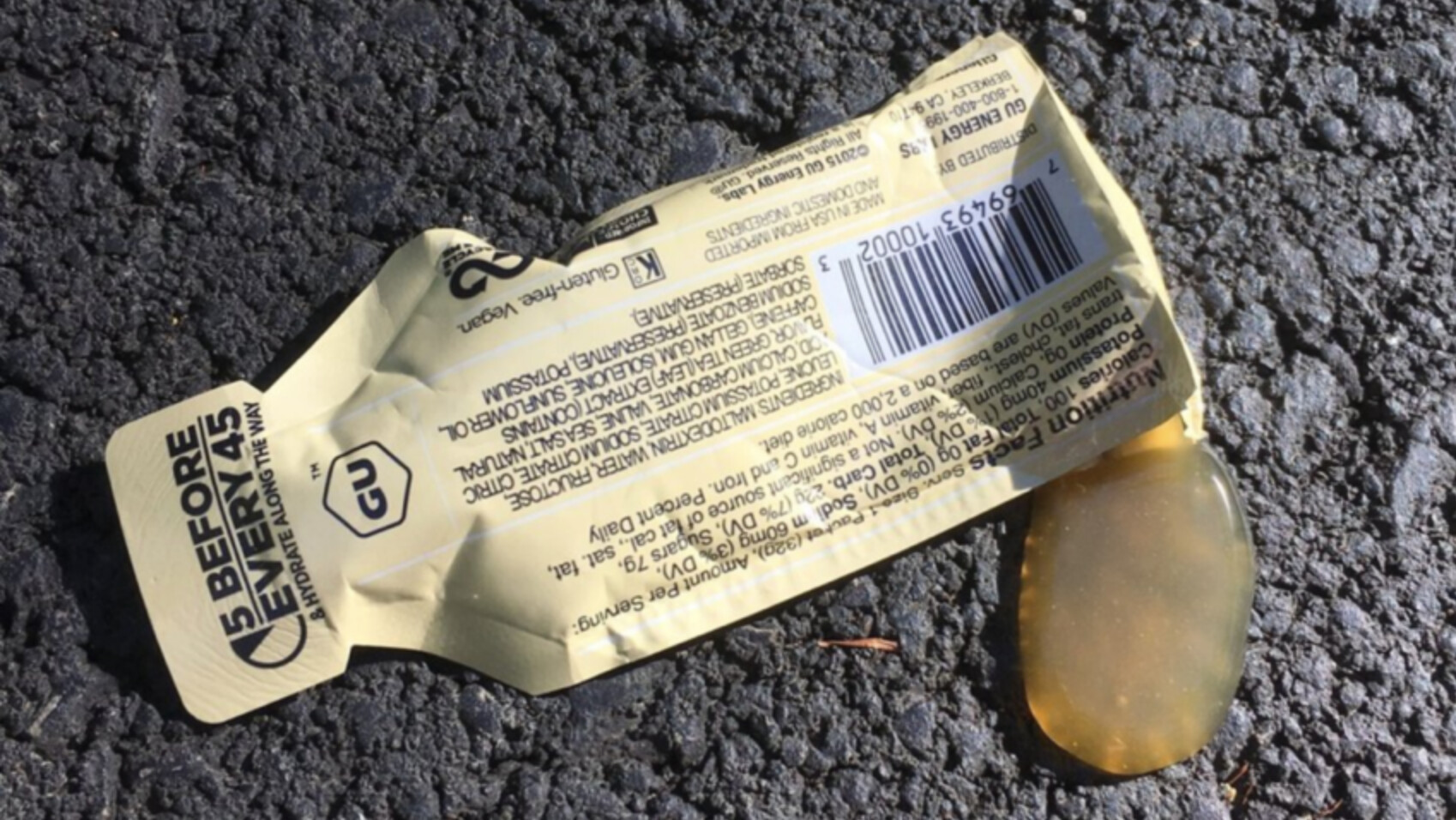
I discovered the magic of gels when I started running marathons two years ago. It was a great trade-off in my mind - you're running longer miles, so you get a reward about halfway. Fun! I distinctly remember running the Hamilton Glow Marathon in Hamilton, Ohio and shouting at my dad on the side of the course, "I GET TO EAT A GEL SOON!"
But, I'll be honest, my zealousness for energy gels was not the most financially healthy habit. Gels are $1.60 a piece at my local running store and I bought three or four a week to stick in my drawers, backpack, car and jackets. After a year of this, I estimate I spent around $300 on gels alone.
Even more concerning, I believed I wouldn't be able to run well without gels and never completed a long run without one. I went out of town one weekend and didn't bring any gels, so I refused to join my dad for a long run. At the time, I truly thought I wouldn't get through half the run without a gel.
That particular weekend out of town was eye-opening. I knew I wanted to stop leaning on gels but still needed a way to replenish lost electrolytes and glycogen. So I decided I was going to start substituting energy gels with whole, real foods to prove I didn't need them to be a good runner. It was time to face my fears and kick the crutch I'd been leaning on for over a year.
What to Look for in an Energy Gel Replacement
The editors at Women's Running provided a perfect resource for learning what I needed to do to fuel my long runs with natural foods.
Authors Caitlyn Pilington and Malissa Rodenburg write: "Fueling is important during long runs, but your choice of what to fuel with lends itself to flexibility. Ultimately, all of our bodies are different and therefore tolerate things differently. You'll no doubt see a majority of athletes fueling themselves with gels, blocks, sports drinks, or other commercial products. And there's honestly nothing wrong with that-sports products are engineered to be absorbed properly and help you perform."
There are all kinds of brands of energy gels, but I'll be touching on my favorite, GU. Each packet contains 100 calories, 125 mg sodium, 40mg potassium, 22g of carbs and 7g of sugar. So a gel replacement would need to cover those bases plus be compact, easily digestible and (hopefully) tasty.
Nutritionist Sarah Cuff focuses on holistic fueling, so she was eager to speak on the topic of replacing gels with whole foods. She says the three main factors to consider in a gel or whole food replacement are sodium, carbohydrates and sugars.
Sodium
If you're a 'super sweater' like me (I could fill a bathtub wringing out my running clothes) you'll want to pay close attention to this next bit.
"When we sweat, sodium is the electrolyte lost at the highest proportion," Cuff says. "So while most energy gels will include some potassium and magnesium and calcium, they are not necessarily required because we don't lose them in any high amount when we sweat. Sodium is most important."
She adds that the amount of sodium needed depends on a variety of factors like how much you generally sweat, the temperature and how much energy you're exerting. Cuff says a good rule of thumb is if you're drinking one liter of water an hour, you want to make sure you're intaking at at least 600 mg of sodium. Learning this, I realized the sodium in my favorite GU gel and the whole food replacements don't meet those standards, so I needed to supplement with sodium in my water.
"Some athletes who want to be as natural as possible might use coconut water and sprinkle sea salt in it - it's not super tasty, though some people like it," Cuff says. "I'd suggest getting a natural electrolyte drink such as Skratch Labs Hydration or Tailwind. Make sure they have at least 300 mg of sodium per serving."
Carbohydrates
"Another important number we want to be looking at is the carbohydrate number, because that's what primarily fuels our long runs," Cuff says. "We know from studies that we need 30-60g per hour on long runs and up to 90g on really long runs (marathons, ultra marathons) to adequately replace what we're burning. The question is, where can we get those carbs?"
GU gels contain a sort of 'super' carbohydrate called maltodextrin, which is easily broken down while exercising and therefore great for most athletes - though it can cause gastrointestinal issues in some. So my whole food gel replacements need to contain up to 90 grams of carbs and must be as easily broken down as maltodextrin.
Sugars
Sugars are required for the fueling process on long runs. Most gels use carbohydrates like maltodextrin to produce glucose and fructose. When you intake sugar, your body breaks it down into glucose and fructose which can be used for energy right away.
"Ideally, we're looking at what's easy for our digestive system to break down while we're running," Cuff says. "Sugar is digested pretty darn quickly. Now, straight table sugar would be difficult to stomach, but there are companies who have packaged maple syrup into small serving sizes. That's a very natural whole food alternative to gels."
My Energy Gel Replacements
Over the course of four weeks I packed five different snacks on my longer runs, ranging from 10-16 miles, and ranked which ones worked the best for me and which ran me into the ground. I also took Cuff's advice and tried Skratch Labs hydration drink mix, which contains 70 calories, 17g of carbs, 15g sugar and 710 mg sodium per serving.
White Bread with Honey
Calories: 132 | Carbs: 28g | Sugar: 7g | Sodium: 180mg
Probably the most boring sandwich I've ever made turned out to be my favorite energy source during this experimentation period. I took one piece of white bread, drizzled on a little bit of honey, folded it up and wrapped it in a sandwich bag. It fit neatly in my running pack around my waist and, even if it did get a little smushed, tasted glorious when I needed it. I had zero tummy troubles and felt as energized as when I took an espresso flavored gel.
Sweet Potato
Serving size: 4oz. | Calories: 112 | Carbs: 26g | Sugar 6g | Sodium: 73mg | Potassium: 448mg
I'm a fiend for sweet potatoes. They're excellent for running because of their phytochemical content which can reduce post-workout inflammation - and I'm usually all kinds of inflamed after a good tenner. I chose a small sweet potato, about the size of my palm, and cooked it long enough before my run so that it was cooled. I wrapped it in a paper towel and stuck it in my pack and, when the time came, I ate that sucker like it was a donut, skin and all. I didn't finish the whole thing, because half did the trick. I felt fueled and it digested well. The trade-off is the low sodium content, but because I supplemented with my water, it evens out.
Banana
Serving size: Medium banana | Calories: 110 | Carbs: 28g | Sugar 15g | Potassium: 450mg
Tried and true, I knew bananas would never fail me. This is often my pre-run snack because I can digest it easily and it has carbs and natural sugars that are broken down quickly. The downside is that it didn't fit in my running pack, so I had to put it in my jacket pocket, which was a little uncomfortable. Like the sweet potato, there's little sodium, but I had my supplemented water.
Cereal
Serving size: cup| Calories: 100 | Carbs: 20g | Sugar 1g | Sodium: 140mg | Potassium: 170mg |
For this energy gel replacement, I packed a cup of dry, plain Cheerios in a tiny baggie. While I'm a big fan of cereal, it's not exactly easy to pour into your mouth while running. I also didn't feel as fueled during the second half of my run, leading me to believe I might not have packed enough. The issue is, if I packed anymore, I'd be crunching cereal for a whole mile. Plus, it really dried out my mouth and made me thirsty.
Dates
Serving size: 2 dates | Calories: 133 | Carbs: 36g | Sugar 32g | Potassium: 334mg
I had high expectations for this snack. Dates are delicious, compact and full of natural sugars, so it makes sense why runners sometimes substitute them for energy gels. However, I didn't anticipate how the three medjool dates would glob onto each other into a golf ball sized glob. That wasn't the biggest issue though; my stomach did not do well with dates. I experienced camping, bloating and overall my digestive issues caused me to cut the run short. Further research led me to discover that my body must not have liked the high amount of fiber and sulfites in the dates. So this snack may work for some, but for me, it was a hard pass.
Will I Give Up Energy Gels?
This experiment resulted in more than great runs and weird stares (have you ever seen a runner chomping on a whole sweet potato?!), it also provided me with the answer that I was looking for: I don't need energy gels to be a good runner. They're not a magical potion that gives me a boost as good as the speckled mushroom in Mario Kart.
But, energy gels are a useful, efficient tool to quickly recover lost glycogen and keep you going on long runs. I certainly have no desire to give them up, but I know now that I can substitute a gel for whole foods, if I so please. In the weeks after my trial, I purchased one gel. Given my track record, I'd say that's pretty goo-d.
(01/28/2023) ⚡AMPby Trail Runner Magazine
U.S. track star Sha'Carri Richardson removed from American Airlines flight
A fellow passenger is heard sarcastically thanking Richardson, blaming her for missing his connecting flight, and arguments commence between Richardson, the airline staff, and fellow passengers, although much of it is unclear.
Someone approaches Richardson and informs her that she’s being asked to leave the plane. When she asks why, the person responds, “The captain wants you off the plane.” “Does the captain know the situation that happened before removing me?” Richardson says.

Richardson asks to speak to the captain and asks if the flight attendant she argued with will be removed from the plane as well. Clapping is heard on the video as Richardson starts to get off the plane.
Richardson gained fame when she qualified for the Olympics in Tokyo in 2021 and then was subsequently suspended for one month after testing positive for THC, the chemical in cannabis, according to the ADA.

In a statement, an American Airlines spokesperson said, “We re-accommodated the customer on a later flight and a member of our team has reached out to learn more.” A representative for Richardson also shared a statement withNBC News, saying Richardson “has nothing to add at this time.”
Dallas native and U.S. track star Sha’Carri Richardson, 22, was removed from an American Airlines flight on Saturday after an argument with a flight attendant, NBC News reported.
Richardson posted a series of videos on social media on Saturday, saying the flight attendant asked her to end a phone call and that she did so, but didn’t like the tone he used with her. It is unclear where Richardson was headed, but she shares in her post that the trip was a vacation.
“I definitely would have listened to instructions but the way he was talking to me was very unprofessional and then his hands were all in my face,” Richardson says in the video.
(01/28/2023) ⚡AMPby Running Magazine
New study suggests running helps your gaming
Have you ever wondered why your gaming keeps getting in the way of your running? Could it be because running makes you good at it? Asics, the Japanese sporting brand, invited 77 competitive gamers from around the world who specialize in games that rely on their cognitive function, such as chess, poker and e-sports, to begin a physical training program–and they found some surprising results.
The study was carried out over a four-month period, as of the 77 study subjects followed a training program designed by international runner-turned-coach Andrew Kastor (husband of Olympic medallist Deena Kastor), which included 150 minutes per week of medium-impact strength and run-based training.

Renowned mind and movement researcher Brendon Stubbs of King’s College in London led the experiment, measuring the mental improvement of participants based on their performance on brain games, cognitive tests and well-being questionnaires over the course of the study.
Stubbs found that after found months, the previously inactive gamers increased their cognitive function, well-being and gaming performance. “The results show significant improvements in their cognitive functioning, including concentration levels and problem-solving abilities,” Stubbs reported.
Participants’ international gaming ratings improved by 75 per cent
Mental gamers’ cognitive function was boosted by an average of 10 per cent, with problem-solving skills improved by nine per cent, short-term memory increased by 12 per cent, and processing speed and alertness improved by 10 per cent.
Confidence levels increased by 44 per cent.
Focus improved 33 per cent and anxiety levels plummeted by 43 per cent
Players’ mental well-being was significantly better, with average mental state scores improving by 31 per cent
We all know that running is good for our mental and physical health, but the impact on acquiring information has been less well explored. The goal of the study was to examine the effects running has on people who depend on their cognitive abilities (like competitive gamers).
“Running stimulates cell growth in the brain and rapidly increases blood flow to the hippocampus and prefrontal cortex, mechanisms that enable us to better retain memories, process information, and problem solve quickly,” said Stubbs. “If running can significantly increase the mental performance of professional mind gamers, imagine what it could do for the rest of us.”
Inspired by the experiment, a camera crew followed four of the 77 competitive gamers as they exercised regularly to improve their (gaming) rankings.
The documentary, called Mind Games: The Experiment, documents the journeys of four gamers who specialize in chess, mahjong, poker and e-sports while competing in professional tournaments around the world. The documentary is currently available on Amazon Prime Video.
(01/28/2023) ⚡AMPby Running magazine
2023 Elite field announced for Tokyo Marathon
It’ll be hard to top the 2022 Tokyo Marathon. After all, Eliud Kipchoge and Brigid Kosgei each set the course records for the men’s (2:02:40) and women’s (2:16:02) races, respectively. The course records will stand, but neither Kipchoge or Kosgei are back to defend their titles.
So which fresh faces will stand atop the Tokyo Marathon podium? The fields are littered with World Marathon Major success stories—some ready to snag another title, others looking for their very first. Expect competitive, exhilarating races on both sides.

The Tokyo Marathon website has a comprehensive list of the men’s and women’s elite fields, but here’s who we’re looking out for.
Non-Major Marathon Champs Shoot for First Major Men’s Title

The men’s athletes are no strangers to winning. Sisay Lemma of Ethiopia leads the field in accolades with his 2021 London Marathon victory. He also has the fastest personal best in the field—2:03:36.
Behind him are a handful of men who have recently won big marathons—just not majors. CyBrian Kotut of Kenya won the 2022 Hamburg Marathon in 2:04:47. Deso Gelmisa of Ethiopia finished first at the 2022 Paris Marathon in 2:05:07. Titus Kipruto of Kenya won the 2022 Milano Marathon in 2:05:05. Each of them will be gunning for a major marathon win—as will 2022 New York City Marathon runner-up Mohamed El Aaraby.
There’s no shortage of home-grown talent either. Owning the Japanese record of 2:04:56, Japan’s Kengo Suzuki leads a group of seven other countrymates—all of whom want to make the podium.
All Eyes on the Six Women With Sub-2:19 Personal Bests
A talented group of women could challenge the top-10 all-time list. Six of the competitors have run faster than 2:19, but only one of them has cracked 2:18—Ashete Bekere of Ethiopia. She’ll have her hands full, as 2022 Berlin Marathon runner-up and third-placer—Rosemary Wanjiru of Kenya and Tigist Abayechew of Ethiopia, respectively—will want to nab a title.
The Japanese contingent, led by Mao Ichiyama and her 2:20:29 personal best, hope to put someone on the podium. However, they’ll likely have to run faster than 2:20 to do it, and just Ichiyama and Mizuki Matsuda have overcome the 2:21 barrier.
Lindsay Flanagan is the sole American elite in both races. She’s coming off a successful 2022 season that included a personal best of 2:24:35 and an 11th place finish at the New York City Marathon.
(01/27/2023) ⚡AMPby Chris Hatler
Tokyo Marathon
The Tokyo Marathon is an annual marathon sporting event in Tokyo, the capital of Japan. It is an IAAF Gold Label marathon and one of the six World Marathon Majors. Sponsored by Tokyo Metro, the Tokyo Marathon is an annual event in Tokyo, the capital of Japan. It is an IAAF Gold Label marathon and one of the six World...
more...Osaka Women’s Marathon set to crown new champion
A new name will be added to the Osaka Women’s Marathon list of winners on Sunday (29) as none of the past champions will be in attendance at the World Athletics Platinum Label road race.
Japanese women have dominated the race in recent years, winning six of the past seven editions. But the presence of Maurine Chepkemoi, Haven Hailu and Meseret Gola means there’s a high probability of an overseas visitor winning this year’s race.
Chepkemoi and Hailu have raced before, at the 2021 Amsterdam Marathon, where both women set their lifetime bests. Kenya’s Chepkemoi finished just one second ahead of Hailu on that occasion, 2:20:18 to 2:20:19, so the Ethiopian will he highly motivated for revenge.

Both women went on to contest two marathons in 2022. Chepkemoi won in Enschede in 2:21:10 and then ran 2:25:12 in Berlin, but finished outside the top 10. Hailu, meanwhile, won in Rotterdam in 2:22:01 but then failed to finish in Chicago.
So this race will be a chance for redemption after both women had somewhat frustrating performances in their big city races at the end of last year. If Chepkemoi wins, she will be the first Kenyan winner of this race since Catherine Ndereba claimed victory back in 2006.

But Gola, Hailu’s fellow Ethiopian, should also be in contention for victory. A consistent performer, she has finished runner-up in four of her past six marathons. She set a PB of 2:20:50 when finishing second in Seville last year, and came close to matching that in Berlin seven months later with a 2:20:58 clocking to place fifth, comfortably ahead of Chepkemoi.
There is, as always, a strong contingent of Japanese runners in the field. For many, the focus will be on qualifying for the Marathon Grand Championship – Japan’s Olympic trial race – in October later this year. To earn a place in that race, the top three Japanese women must finish inside 2:28. Alternatively, if the first six Japanese women finish inside 2:27, they will qualify. Or if anyone places outside the top six Japanese finishers but still runs inside 2:24, they too will qualify.
Yuka Ando is the fastest Japanese woman in the field with her 2:21:36 PB from her marathon debut in 2017. A former third-place finisher in Osaka (2018), Ando achieved podium finishes in Nagoya in 2022 and 2020, finishing inside 2:23 on both occasions.
Sayaka Sato and Mao Uesugi should also be among the leading Japanese contenders. Sato finished sixth in Osaka last year, then went on to achieve a top-10 finish in Berlin, setting a PB of 2:22:13.
Uesugi, meanwhile, will be aiming to continue her progression in Osaka. She just missed the podium in 2021 but set a PB of 2:24:52. She then improved to runner-up last year, setting another lifetime best (2:22:29).
Organisers have made a few changes to the course for this year, which they say is just as fast as the old one, although there appears to be a few more inclines than before. The existing course record is 2:20:52, set last year by Mizuki Matsuda.
Elite field
Maurine Chepkemoi (KEN) 2:20:18
Haven Hailu (ETH) 2:20:19
Meseret Gola (ETH) 2:20:50
Yuka Ando (JPN) 2:21:36
Sayaka Sato (JPN) 2:22:13
Mao Uesugi (JPN) 2:22:29
Reia Iwade (JPN) 2:23:52
Sairi Maeda (JPN) 2:25:25
Haruka Yamaguchi (JPN) 2:26:35
Chiharu Ikeda (JPN) 2:26:50
Risper Gesabwa (MEX) 2:26:55
Munkhzaya Bayartsogt (MGL) 2:28:03
Shiho Kaneshige (JPN) 2:28:51
Alice Wright (GBR) 2:29:08
Sakiho Tsutsui (JPN) debut
Yumi Yoshikawa (JPN) debut.
(01/27/2023) ⚡AMPby World Athletics
Osaka International Womens Marathon
The Osaka International Ladies Marathon is an annual marathon road race for women over the classic distance of 42.195 kilometres which is held on the 4th or 5th Sunday of January in the city of Osaka, Japan, and hosted by Japan Association of Athletics Federations, Kansai Telecasting Corporation, the Sankei Shimbun, Sankei Sports, Radio Osaka and Osaka City. The first...
more...Test your speed during this short interval cutdown workout
The key to improving your speed over middle and long distances is to find a balance between building your anaerobic strength and your endurance. Many athletes will use interval training as a tool to improve their speed over a short period. Intervals are essential in getting your body comfortable with being uncomfortable, which can help you adjust to a quicker pace on race day.
An interval workout can be exhausting, depending on the set pace during the reps and the rest between intervals; the goal of this interval workout is to develop your speed by getting your body to feel relaxed at a faster-than-usual pace.
Workout

Before the workout, do a light, 10-15 minute warm-up jog to get your blood flowing.
90-90-90-60-60-60-30-30-30 — all with two minutes walk/jog rest between

The paces on 90-second reps should be around your 5K goal pace. The 60s should be around 90 per cent of your all-out, or one-mile pace, and the 30-second reps should be done at near all-out, or 800m pace.
This progression interval workout is designed for any middle-distance runner up to 10K. This session can be done on the road, treadmill or track.
Example for a 25-minute 5K runner:
The 90s @ 4:50-5:00/km, 60s @ 4:10-4:15/km, and 30s @ 4:00/km or faster.
The short two minutes of rest off high-intensity interval training improves your lactate threshold and pain tolerance.
Be sure to push yourself, and maintain proper form when running hard. The workout won’t be a breeze, but it will give you an idea of your middle-distance potential from the mile to the 5K.
(01/27/2023) ⚡AMPby Marley Dickinson
Try a smoothie bowl for pre- (or post-) run protein perfection
If you’re training for a spring race, you’re probably starting to increase mileage–and it’s important to be mindful to take in enough energy (calories) to fuel your running adventures. A smoothie bowl is a simple and delicious way to up your protein intake, and once you’ve made one, you’ll see the flavour possibilities are endless.
Get creative and enjoy smoothie bowls as snacks or meals. Bonus–you can make them look beautiful, too. My favourite recipe for smoothie bowls comes from Angela Liddon, author of the Oh She Glows plant-based cookbook series.
Chocolate Dreams Protein Smoothie Bowl

Smoothie bowl ingredients
1/2 cup unsweetened almond milk (more if needed)

1 large banana, chopped (about 1/4 cup)
2 Tbsp avocado
1 scoop protein powder (look for powders with no additives or extra sugar)
2 Tbsp cocoa powder
1–3 chopped dates, or liquid sweetener to taste (a dash of maple syrup works)
1 or 2 ice cubes
Topping suggestions
Chopped strawberries
Shredded or flaked unsweetened coconut
Sliced banana
Hemp hearts
Chia seeds
Directions
Put the almond milk in a high-speed blender, then add the remaining ingredients and blend until smooth. The smoothie should have a thick, soft serve-like texture. You can add a bit more milk if your blender is having a hard time mixing your ingredients.
Spoon the smoothie into a bowl (I like to put a scoop of granola in the bowl first for a bit of crunch) and add your desired toppings. Enjoy immediately.
(01/27/2023) ⚡AMPby Keeley Milne
Avoid the seven most common tapering mistakes the week before a half marathon
The week before a half marathon can make or break one’s performance. Months of training can be wasted by trying to fit in one last workout. On the other hand, resting too much in the week before a half marathon (or even the week before a 5k) can leave one feeling flat and low-energy on race day.
Tapering is a training microcycle that usually takes place the week before a key event, such as a half marathon or a 5k. Longer events like marathons or ultramarathons require longer tapers. Tapering for an event is one of the most complicated and mysterious aspects of athletic performance.
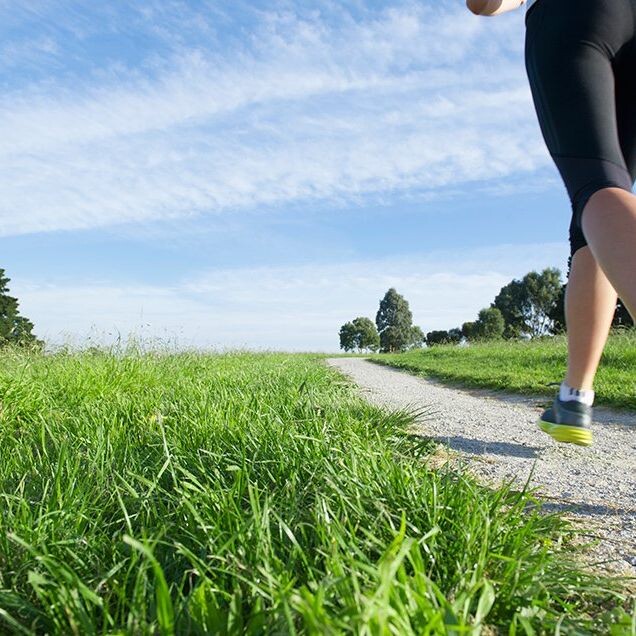
Learn the seven most common tapering mistakes people make the week before a half marathon. Follow the training plan for the week before the race to arrive fresh, fit and fast at the start line!
Tapering for a half marathon the week before is easy to mess up. Don’t make these seven mistakes!

1. TRAINING TOO MUCH BEFORE THE RACE
Many amateur runners think it is good to train hard right up until the race, particularly in the last few weeks. But these efforts turn out to be counterproductive. Standing at the start feeling tired is a recipe for disaster.
Instead, decrease total training volume by 30-50% in the week before a half marathon, but not the number of intensity sessions. For example, if the total distance ran two-weeks before the event was 50 km, the total distance should be no more than 35 – 25 km in the final week before the event.
Intensity should not drastically decrease despite overall distance dropping. For example, if a training plan usually calls for two days of intensity per week, still perform those two days of intense training during the final week before the event.
Reduce the number of intervals in a session by 20% of what they were in the last hard week of training. Even though overall running distance decreases, intensity may actually increase relative to the amount of total distance.
The bottom line: a good taper focuses on quality, not quantity. Do short and fast runs; decrease overall training distance by cutting back on endurance run distance.
2. NOT WORKING OUT AT ALL
Tapering and reducing training volumes does not mean you should just put your feet up and stop working out. The tricky part about tapering is not to lose the fitness and pace endurance you have built up. The best way to avoid this is by reducing your mileage and focusing on short and intense workout sessions.
In the last week, it is important to get one more hard workout in four or five days before the race. This is designed to give your muscles one last training stimulus and to prepare your body for the demands of the upcoming race.
Retaining intensity while decreasing training volume in the week before a half marathon has been shown to be an effective tapering strategy for most athletes.[1]
3. STRENGTH TRAINING AND UNFAMILIAR EXERCISES
In the week before a half marathon avoid strength training and unfamiliar exercises. Fatigued and/or sore muscles can quickly endanger performance. Of course, continue to do stretching and mobilization exercises if they have been a regular part of training.
One exercise that could be beneficial in the week before a half marathon is a meditation exercise. Often, athletes develop performance anxiety due to the upcoming event and the abundance of energy (if they are tapering correctly). Meditation can help the mind prepare for the demands ahead of it.
Try the guided meditation by professional ultramarathoner Timothy Olson, posted in a video:
4. CHANGING EQUIPMENT THE WEEK BEFORE AN EVENT
Never change any equipment the week before a key race! This ranges from running shoes to sports nutrition and diet. New running shoes can cause an injury that robs one of even starting a half marathon. Sports nutrition can lead to cramps or GI issues that ruin a race.
5. POOR DIET AND ALCOHOL CONSUMPTION
Letting diet slip the week before a big event is tempting. The body is busy replenishing glycogen stores, appetite is high, but total calorie expenditure should have decreased. This can lead one to give in to sugar cravings, especially if one is nervous about the upcoming event.
Now is more important than ever to eat like an athlete. Give the body the nutrients it needs to freshen up before putting in an amazing performance. Here are the nine best foods for runners. Don’t skimp on carbs the two days before the event, and use this carb calculator.
Having an extra drink or two might feel good and promote relaxation; however, it can also lead to poor sleep and dehydration. If maximal performance is on the line, skip the nightcap in the week before a half marathon.
6. NOT SLEEPING ENOUGH
Sleep is crucial throughout all training phases, but especially in the week before a half marathon. If one has been training hard, the body needs sleep to rebuild and regenerate.
Race nerves can prevent athletes from getting quality sleep in the lead-up to an important event. Here are some practical tips to get fantastic sleep during this crucial week:
Go to bed an hour earlier than usual
Wake up an hour later than usual
Take a nap during the day
Meditate instead of lying in bed awake if having trouble sleeping
If sleep doesn’t come (especially the night before the event), just keep eyes closed and focus on breathing
Don’t stress about not sleeping enough (this will cause sleep issues itself)
7. CATCHING UP ON LIFE
Training for an event sometimes means putting other life factors aside for a time. Weeding the garden, helping kids with homework, cooking dinner or finishing a big project at work all take energy. It can be tempting to finally tackle those life factors that have been put off during training since tapering means less time spent training.
Don’t think of tapering as less time training, but more time for recovering. Because recovering is training too, all those projects can wait one more week. Don’t feel guilty about putting the feet up on the sofa or sneaking off for a nap. Ask partners for continued understanding for one more week and assure them their understanding will mean a lot.
(01/26/2023) ⚡AMPby Morgan Cole
Best running quotes from Steve “Pre” Prefontaine
Today, one of the most iconic runners in American history would have turned 72.
On this day in 1951, one of the most iconic runners in North American history was born. Steve “Pre” Prefontaine from Coos Bay, Ore., became one of the biggest icons in the sport during his time at the University of Oregon in the 70s, where he held seven American records from the 2,000m to the 10,000m.
Today Prefontaine would have been 72, but his life was cut short on May 30, 1975, when he died in a car accident in Eugene, Ore. He was 24 at his death.

Prefontaine competed in the 1972 Summer Olympics in Munich and was preparing for the 1976 Olympics with the Oregon Track Club at the time of his death.
The American distance runner will be always remembered for his raw talent, racing style, iconic moustache and motivational quotes.

Pre’s race tactics were often bold, running hard from the gun instead of having a sit-and-kick mentality. That sort of race mentality is evident in some of his most memorable quotes, which are as follows:
“To give anything less than your best is to sacrifice the gift.”
“A lot of people run a race to see who is fastest. I run to see who has the most guts, who can punish himself into an exhausting pace, and then at the end, punish himself even more.”
“Some people create with words or with music or with a brush and paints. I like to make something beautiful when I run. I like to make people stop and say, ‘I’ve never seen anyone run like that before.’ It’s more than just a race, it’s a style. It’s doing something better than anyone else. It’s being creative.”
“Somebody may beat me, but they’re going to have to bleed to do it.”
“I don’t just go out there and run. I like to give people watching something exciting.”
After his death, three movies were later released based on his storied career: Without Limits, Prefontaine, and Fire on the Track.
Happy 72nd Birthday Pre!
(01/26/2023) ⚡AMPby Marley Dickinson
Prefontaine Memorial Run
During his brief 24-year lifespan, Steve Prefontaine grew from hometown hero, to record-setting college phenomenon, to internationally acclaimed track star. In a similar span of years since his death in 1975, Pre has become the stuff of enduring legend. His rare combination of talent, discipline, determination, and star-quality with a human touch made Pre the idol of those he called...
more...







